Theory of atoms and solids
Prof. Dr. Ludwig Mathey
We investigate the theory of ultracold atom and solid state systems, with particular emphasis on many-body effects, as well as quantum technological applications. On the conceptual side, one of our primary research interest is many-body dynamics, such as dynamic phase transitions and dynamic control of many-body systems, as well as properties of superfluidity and superconductivity. We work on the advancement of the technology of ultra-cold atom systems, for example by investigating new cooling and detection methods. A further interest are light-matter systems, such as dynamics in atom-cavity systems, as well as light driven dynamics in graphene and graphene nanoribbons. On the quantum technology side, we investigate quantum optimal control, atom tweezer systems, and circuit QED.
.
or on LinkedIn
.
.
Recent activities:
Fluctuation amplification engineering in multimode Raman-cavity systems
H. P. Ojeda Collado, Ludwig Mathey

Parametric amplification is a key ingredient of a wide range of phenomena, from the classical to the quantum domain. Although such phenomena have been demonstrated in non-equilibrium settings, their use for fluctuation engineering has been put forth in Raman-cavity hybrids only recently. In this work, we generalize fluctuation engineering to a multi-mode scenario in which multiple Raman-active modes interact nonlinearly with multiple cavity modes. We demonstrate the emergence of resonant and non-resonant collective fluctuations that can be non-reciprocally controlled by engineering the band dispersion of photons and phonons. As an example we show how Raman fluctuations can be selectively attenuated by tuning the photonic bandgap or even nonresonantly amplified, in marked contrast to the single-mode scenario. We also identify a regime in which the amplification of cavity fluctuations in a specific mode is boosted, surpassing a N‾‾√ scaling with increasing number of N Raman and cavity modes. Our study reveals the key role of multi-mode interactions on fluctuations in nonlinear cavity-matter hybrids. Noise engineering through different photon and phonon dispersions, as demonstrated here, could be leveraged for the design of novel quantum sensing platforms and advanced spectroscopy in the THz regime.
Controlled generation of 3D vortices in driven atomic Josephson junctions
Vijay Pal Singh, Ludwig Mathey, Herwig Ott, Luigi Amico
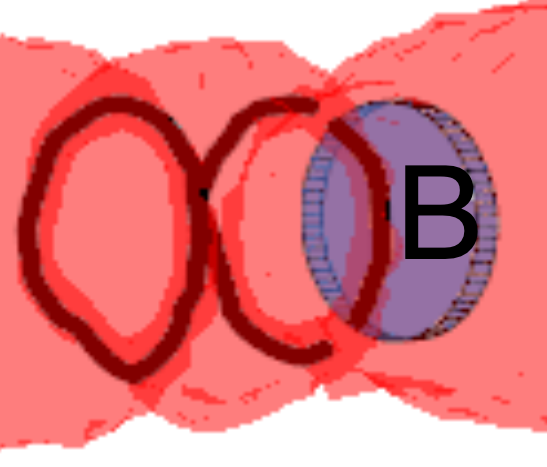
We propose an ac-driven atomic Josephson junction as a clean and tunable source of three dimensional (3D) solitary waves in quantum fluids. Depending on the height of the junction barrier, the emitted excitations appear as vortex rings at low velocity or vorticity-free rarefaction pulses near the sound velocity, thus spanning the complete Jones-Roberts family of solitons. The Shapiro-step phenomenon renders the emission deterministic: on the first, second, third Shapiro steps, the junction ejects one, two, and three solitary excitations per drive cycle. This enables controlled generation of single- and multi-excitation configurations, allowing detailed studies of the full crossover between vortex rings and rarefaction pulses and their interaction dynamics. In particular, deterministic multi-ring emission provides insights into leapfrogging dynamics of two and three coaxial rings and their decay via boundary-assisted, sound-mediated processes. This ac-driven protocol establishes a compact and reproducible platform for generating, classifying, and controlling 3D solitonic excitations, paving the way for precision studies of nonlinear vortex dynamics, dissipation, and quantum turbulence in trapped superfluids.
Coupling-induced universal dynamics in bilayer two-dimensional Bose gases
En Chang, Vijay Pal Singh, Abel Beregi, Erik Rydow, Ludwig Mathey, Christopher J. Foot, Shinichi Sunami
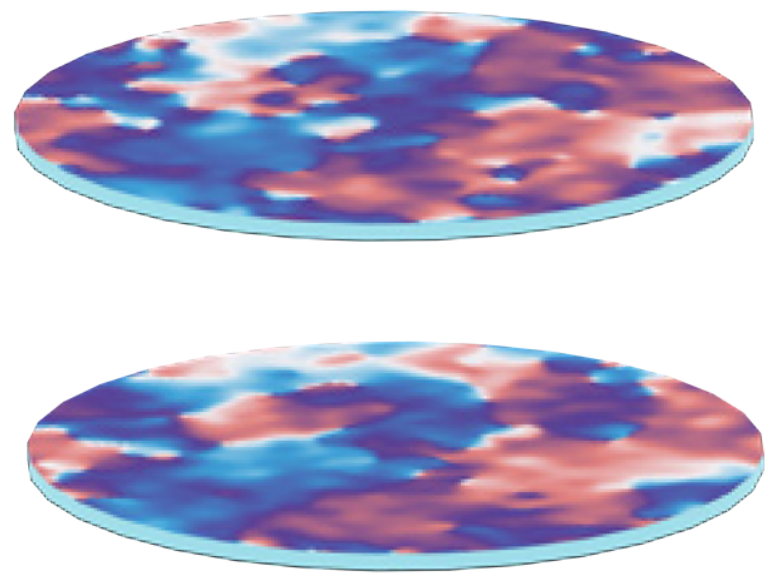
The emergence of order in many-body systems and the associated self-similar dynamics governed by dynamical scaling laws is a hallmark of universality far from equilibrium. Measuring and classifying such nontrivial behavior for novel symmetry classes remains challenging. Here, we realize a well-controlled interlayer coupling quench in a tunable bilayer two-dimensional Bose gas, driving the system to an ordered phase. We observe robust self-similar dynamics and a universal critical exponent consistent with diffusion-like coarsening, driven by vortex and antivortex annihilation induced by the interlayer coupling. Our results extend the understanding of universal dynamics in many-body systems and provide a robust foundation for quantitative tests of nonequilibrium effective field theories.
Coherent Optical Control of Electron Dynamics in Patterned Graphene Nanoribbons
Riek H. Rüstemeier, H. P. Ojeda Collado, Ludwig Mathey
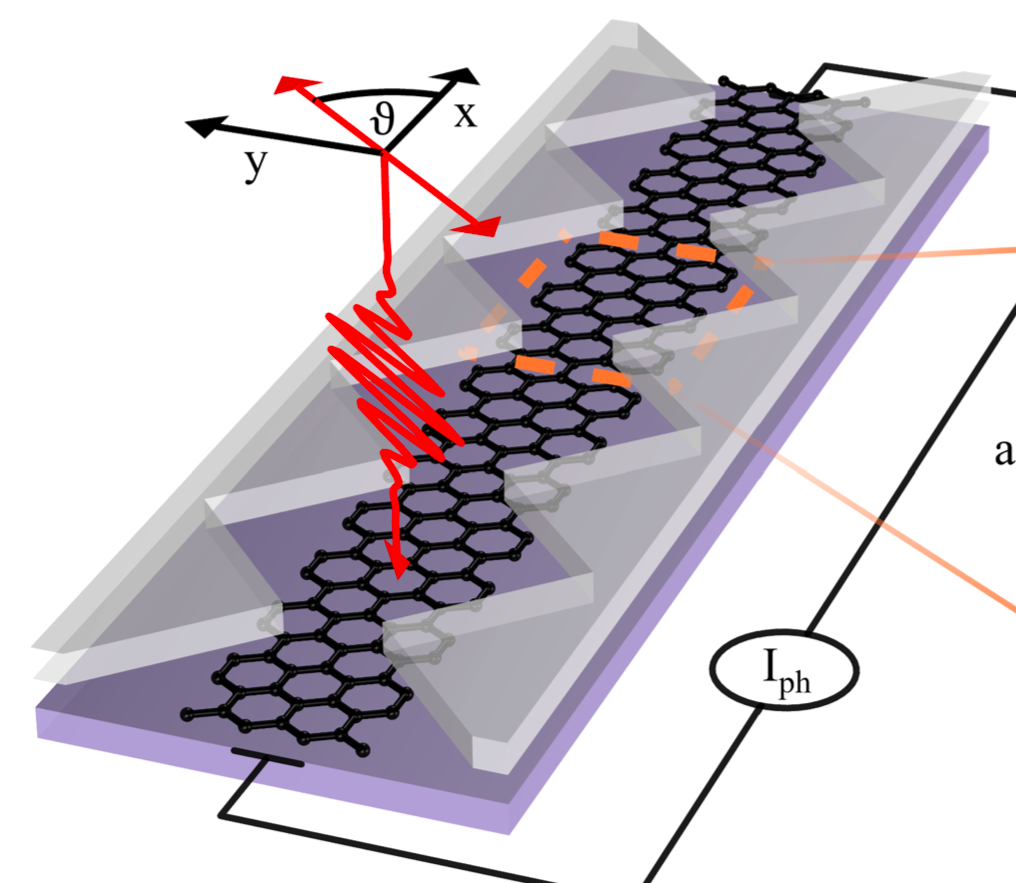
The field of coherent electronics aims to advance electronic functionalities by utilizing quantum coherence. Here, we demonstrate a viable and versatile methodology for controlling electron dynamics optically in graphene nanoribbons. In particular, we propose to flatten the band structure of armchair graphene nanoribbons via control electrodes, arranged periodically along the extended direction of the nanoribbon. This addresses a key mechanism for dephasing in solids, which derives from the momentum dependence of the energy gap between the valence and the conduction band. We design an optimal driving field pulse to produce collective Rabi oscillations between these bands, in their flattened configuration. As an example for coherent control, we show that these optimized pulses can be used to invert the entire electronic band population by a π pulse in a reversible fashion, and to create a superposition state via a π/2 pulse, which generates an alternating photocurrent. Our proposal consists of a platform and methodological approach to optically control the electron dynamics of graphene nanoribbons, paving the way toward novel coherent electronic and quantum information processing devices in solid-state materials.
Weak-link to tunneling regime in a 3D atomic Josephson junction
Vijay Pal Singh, Erik Bernhart, Marvin Röhrle, Herwig Ott, Ludwig Mathey, Luigi Amico
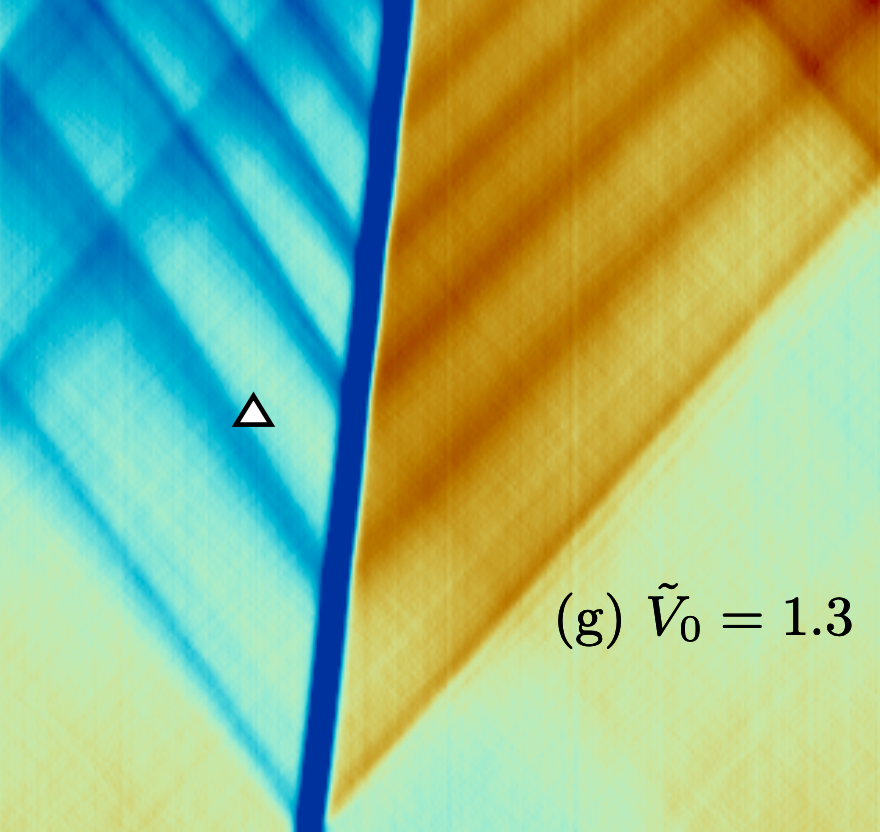
We investigate the transition from weak-link transport to the tunneling Josephson regime in a three-dimensional (3D) Bose-Einstein condensate confined in a cylindrical, tube-like trap. By varying the height of a localized barrier, we map out the smooth crossover between these regimes through measurements of the critical current and Josephson oscillations. In the weak-link regime of the Josephson junction, dissipative transport is mediated by solitonic excitations in the form of vortex rings, which drive phase slips and generate a finite chemical potential difference across the junction. Increasing the barrier height suppresses these hydrodynamics excitations, yielding a tunneling-dominated Josephson regime characterized by phononic excitations. These findings elucidate the interplay between geometry, excitations, and dissipation in atomtronic weak links, and provide a quantitative framework for engineering coherent matter-wave circuits. Our results show excellent agreement with numerical simulations and analytical models.
Realizing an Atomtronic AQUID in a Rotating-Box Potential
Kaspar Görg, Ludwig Mathey, Vijay Pal Singh
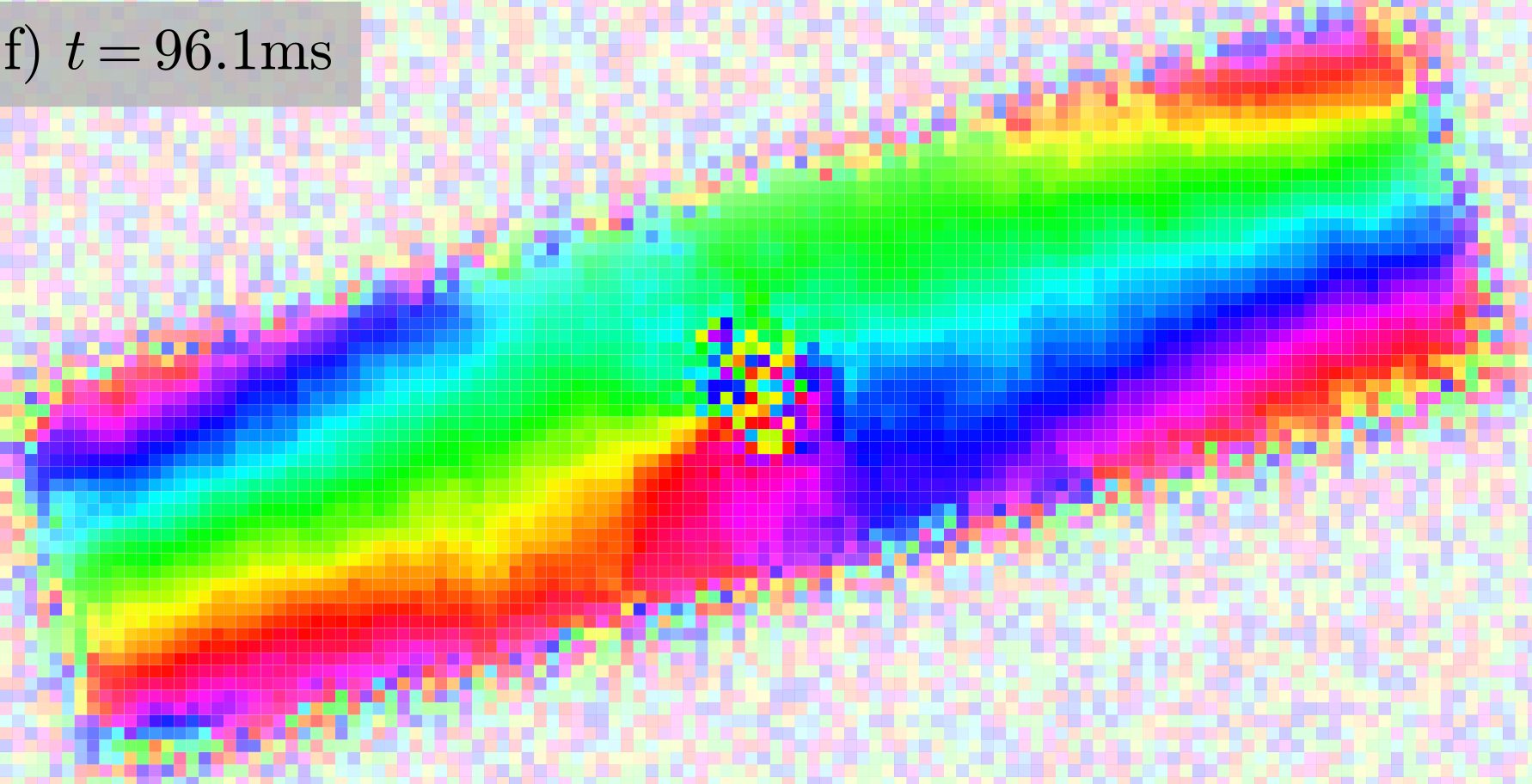
Atomtronic devices are matter-wave circuits designed to emulate the functional behavior of their electronic counterparts. Motivated by superconducting quantum interference devices (SQUIDs), atomic quantum interference devices (AQUIDs) have been developed using Bose-Einstein condensates (BECs) confined in toroidal geometries. Here, we propose and numerically investigate an alternative implementation of an AQUID based on a BEC confined in a rotating box potential. A ring-like topology is established by introducing a central depletion region via a repulsive potential barrier. We observe the hallmark AQUID feature -- quantized phase winding that increases in discrete steps with angular velocity. Centrifugal effects induced by rotation degrade phase coherence and impair AQUID performance, which we mitigate by applying a counteracting harmonic confinement. Phase slips are found to be mediated by a vortex propagating from the central depletion zone to the edge of the condensate. To characterize the voltage response, we induce a bias current by translating the box along its long axis while keeping the central barrier fixed. This generates a density imbalance between the two reservoirs, exhibiting a periodic dependence on angular velocity -- analogous to the voltage-flux relation in electronic SQUIDs. Our results demonstrate that rotating box geometries provide a viable and flexible platform for realizing atomtronic AQUIDs with controllable dynamics and well-defined response characteristics.
Universal quantum melting of quasiperiodic attractors in driven-dissipative cavities
Caroline Nowoczyn, Ludwig Mathey, Kilian Seibold
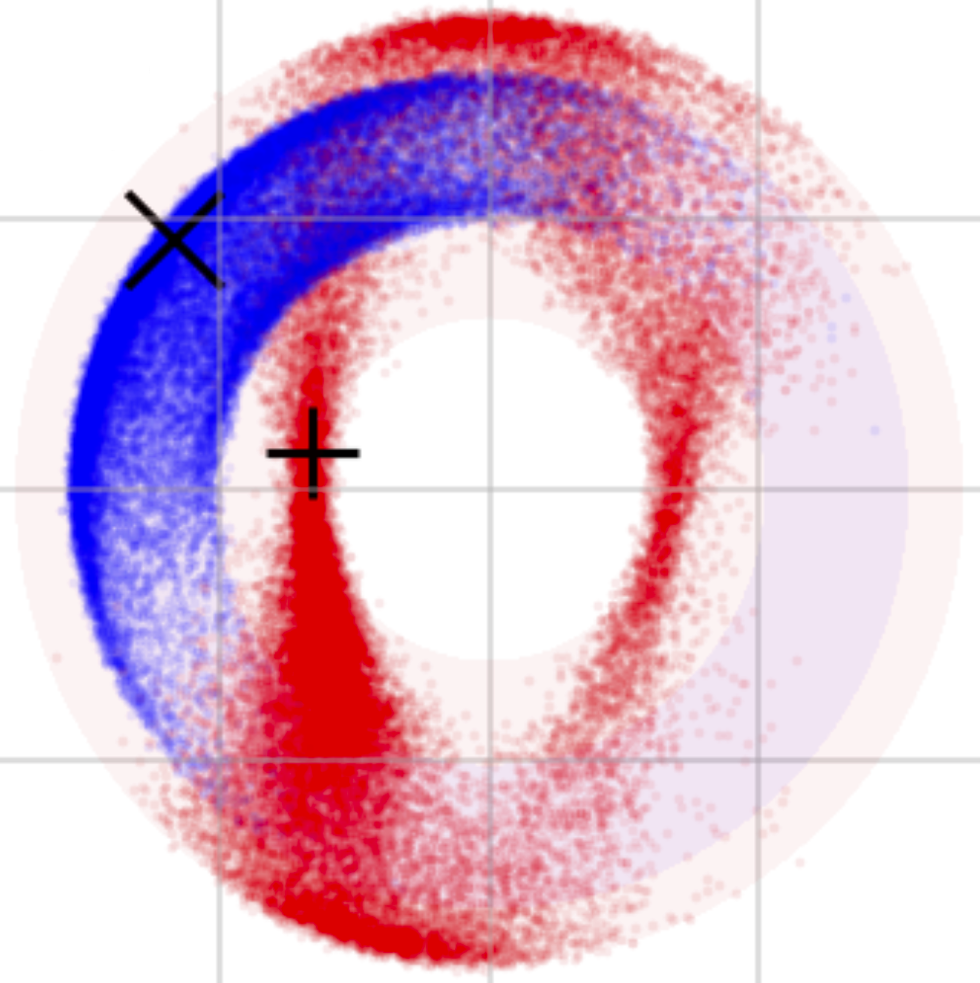
Nonlinear classical mechanics has established countless intriguing and profound phenomena. These include limit tori defined by toroidal attractors that support quasiperiodic motion of at least two incommensurate frequencies. Here we address the question, whether and how such phenomena persist in open quantum systems. We develop a quantum description of limit tori within the Lindblad master-equation formalism for a system of two coupled driven-dissipative Kerr cavities. Using the spectral theory of the Liouvillian and the truncated Wigner approximation, we analyze the system across the quantum-to-classical transition. In the classical limit, we identify two pairs of purely imaginary Liouvillian eigenvalues, corresponding to persistent quasiperiodic modes of the limit torus. Quantum fluctuations induce small negative real parts to these eigenvalues, giving rise to finite lifetimes of these modes. The corresponding Liouvillian gaps vanish algebraically in the classical limit. This behavior signals a genuine continuous dynamical phase transition, marked by the spontaneous breaking of time-translational symmetry. Analysis of individual quantum trajectories reveals quantum-fluctuation-induced dephasing as the primary mechanism behind this "quantum melting" of the torus. We quantify this dephasing using a circular-variance-based order parameter, revealing universal scaling with both system size and time. These scaling laws are robust and independent of microscopic parameters. Our results establish the quantum melting of limit tori as a distinct non-equilibrium critical phenomenon and provide concrete signatures for experimental observation in trapped ions and superconducting circuits.
Atomic Josephson Parametric Amplifier
Vijay Pal Singh, Luigi Amico, Ludwig Mathey
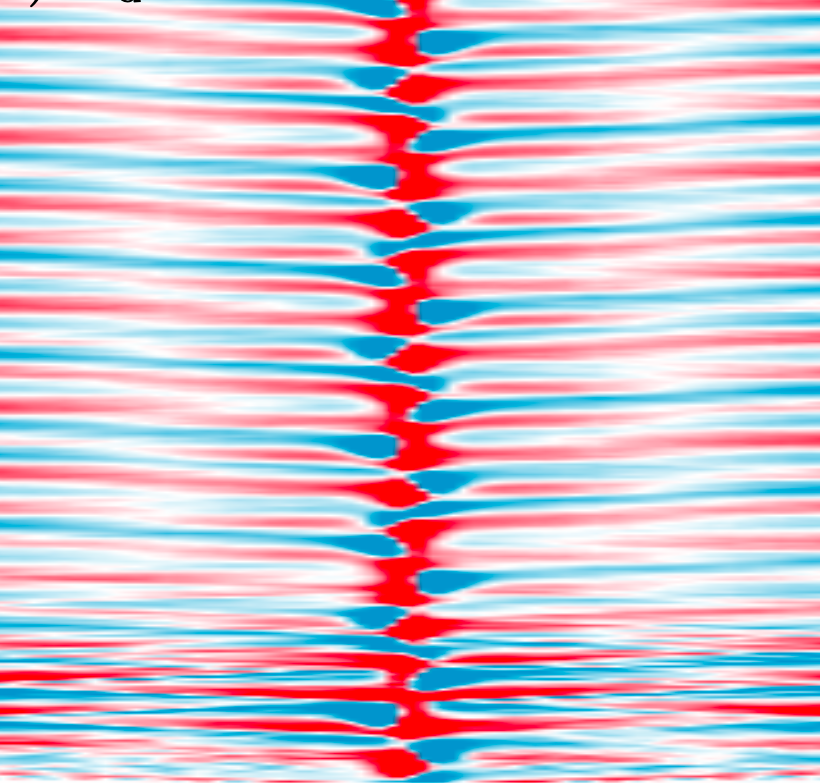
We study the dynamics of a driven atomic Josephson junction that we propose as a parametric amplifier. By periodically modulating the position of the barrier, we induce a small current across the junction, serving as our input signal. The pump field is implemented by modulating the barrier height at twice the Josephson plasma frequency. The resulting dynamics exhibit parametric amplification of the signal through nonlinear mixing between the signal and pump fields, which is reflected by specific patterns of density waves and phase excitations. We employ a classical-field dynamics method and benchmark our results against driven circuit dynamics. This work paves the way for tunable quantum amplifiers in atomtronic circuits, with potential applications in several fields including precision measurements and quantum information processing.
Eigen-SNAP gate for photonic qubits in a cavity-transmon system
Marcus Meschede, Ludwig Mathey
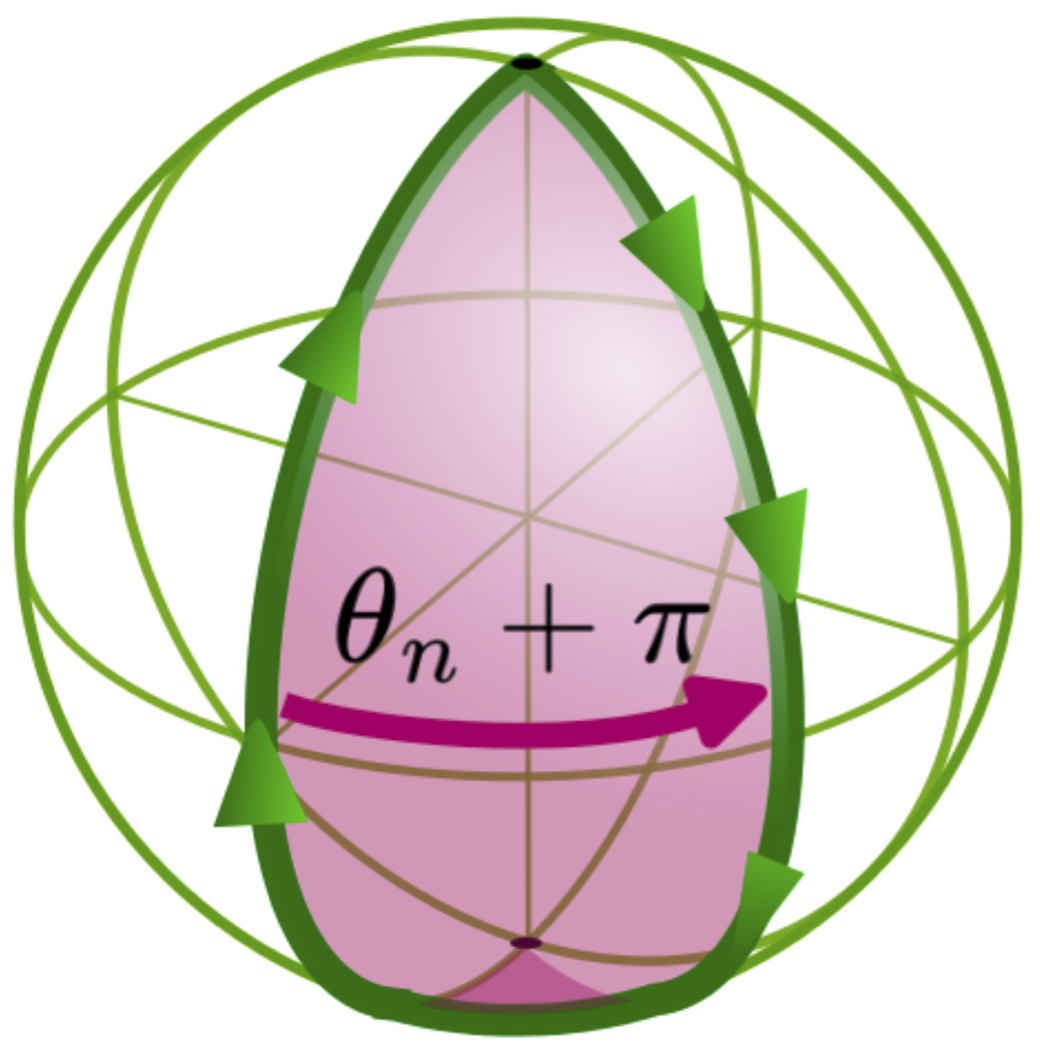
In the pursuit of robust quantum computing, we put forth a platform based on photonic qubits in a circuit-QED environment. Specifically, we propose a versatile two-qubit gate based on two cavities coupled via a transmon, constituting a selective number-dependent phase gate operating on the in-phase eigenmodes of the two cavities, the Eigen-SNAP gate. This gate natively operates in the dispersive coupling regime of the cavities and the transmon, and operates by driving the transmon externally, to imprint desired phases on the number states. As an example for the utility of the Eigen-SNAP gate, we implement a √SWAP gate on a system of two logical bosonic qubits encoded in the cavities. Further, we use numerical optimization to determine the optimal implementation of the √SWAP. We find that the fidelities of these optimal protocols are only limited by the coherence times of the system's components. These findings pave the way to continuous variable quantum computing in cavity-transmon systems.
Designing Atomtronic Circuits via Superfluid Dynamics
Sarah Jährling, Vijay Pal Singh, Ludwig Mathey
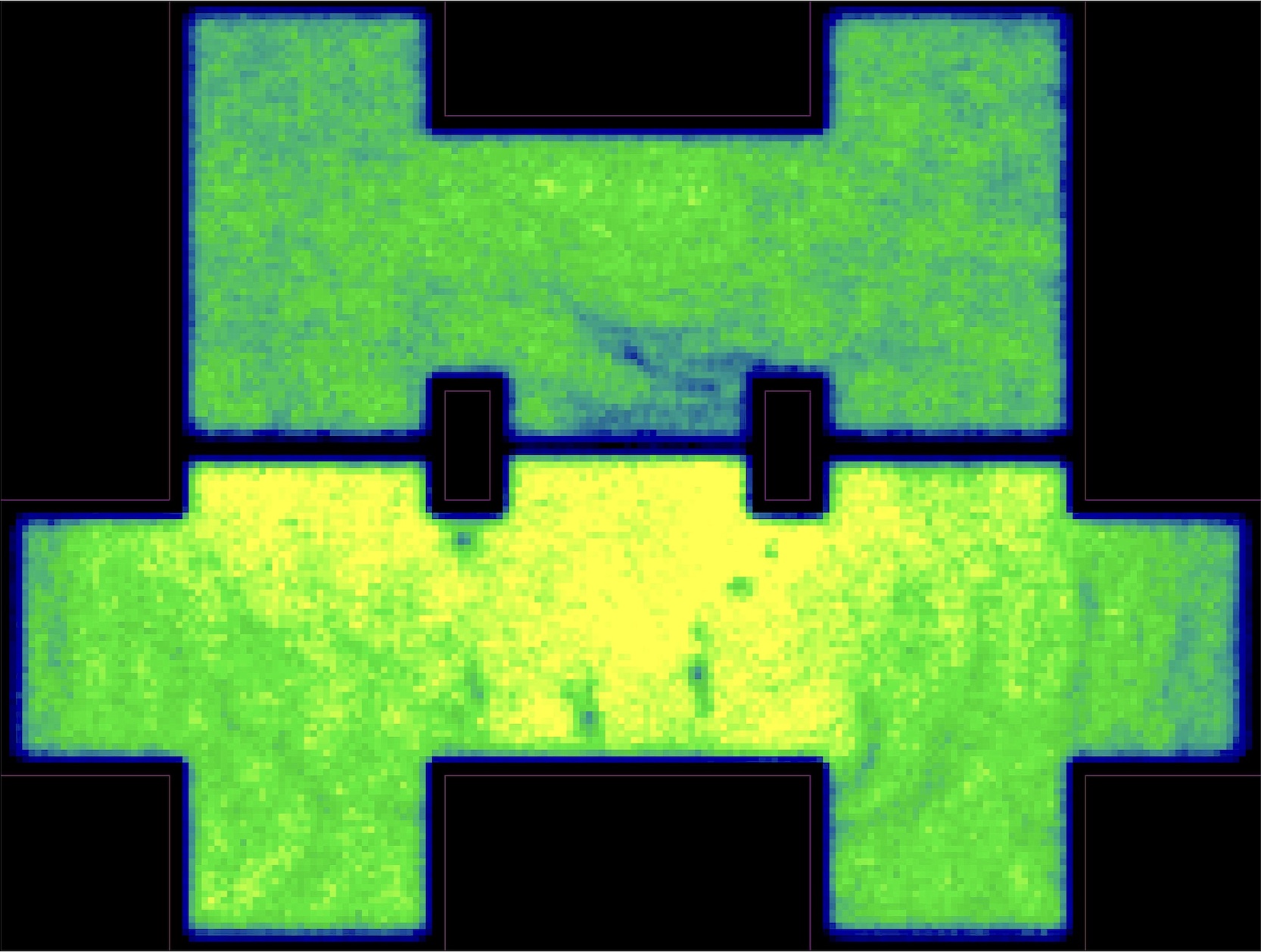
We propose to design atomtronic circuits with Bose-Einstein condensates (BECs) in circuit-like traps that are controlled via mobile barriers. Using classical-field simulations, we demonstrate a universal set of logical gates and show how to assemble them into circuits. We first demonstrate an AND gate based on a T-shaped BEC, utilizing a combination of mobile and static barriers. The mobile barriers provide the logical input of the gate, while the static barrier functions as a Josephson junction that generates the AND output of the gate via a density imbalance across the barrier. Next we show how to combine three AND gates into a circuit, with a design composed of two T-shapes and an H-shape. Furthermore, we demonstrate how to use Josephson oscillations to create a NOT gate and combine it with an AND gate, thereby showcasing a universal set of gates and their assembly into circuits.
Optimal recoil-free state preparation in an optical atom tweezer
Lia Kley, Nicolas Heimann, Aslam Parvej, Lukas Broers, Ludwig Mathey

Quantum computing in atom tweezers requires high-fidelity implementations of quantum operations. Here, we demonstrate the optimal implementation of the transition |0⟩→|1⟩ of two levels, serving as a qubit, of an atom in a tweezer potential, driven by a single-photon Rabi pulse. The Rabi pulse generates a photon recoil of the atom, due to the Lamb-Dicke coupling between the internal and motional degree of freedom, driving the system out of the logical subspace. This detrimental effect is strongly suppressed in the protocols that we propose. Using pulse engineering, we generate optimal protocols composed of a Rabi protocol and a force protocol, corresponding to dynamically displacing the tweezer. We generate these for a large parameter space, from small to large values of the Rabi frequency, and a range of pulse lengths. We identify three main regimes for the optimal protocols, and discuss their properties. In all of these regimes, we demonstrate infidelity well below the current technological standard, thus mitigating a universal challenge in atom tweezers and other quantum technology platforms.
Torus bifurcation of a dissipative time crystal
Jayson G. Cosme, Phatthamon Kongkhambut, Anton Bölian, Richelle Jade L. Tuquero, Jim Skulte, Ludwig Mathey, Andreas Hemmerich, Hans Keßler
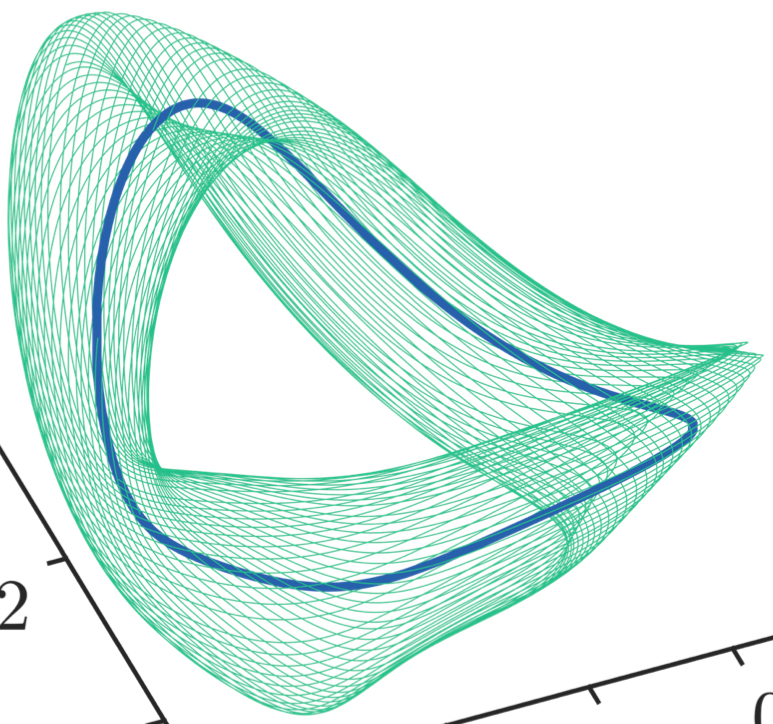
Using a quantum gas setup consisting of a Bose-Einstein condensate strongly coupled to a high-finesse optical cavity by a transverse pump laser, we experimentally observe an instability of a dissipative continuous time crystal (CTC) towards a time crystalline state exhibiting two prominent oscillation frequencies. Applying a mean-field approximation model and a Floquet analysis, we theoretically confirm that this transition is a manifestation in a many-body system of a torus bifurcation between a limit cycle (LC) and a limit torus (LT). We theoretically illustrate the LC and LT attractors using the minimal model and experimentally reconstruct them using Takens' embedding theorem applied to the non-destructively measured intracavity photon dynamics.
Observation of a Bilayer Superfluid with Interlayer Coherence
Erik Rydow, Vijay P. Singh, Abel Beregi, En Chang, Ludwig Mathey, Christopher J. Foot, Shinichi Sunami
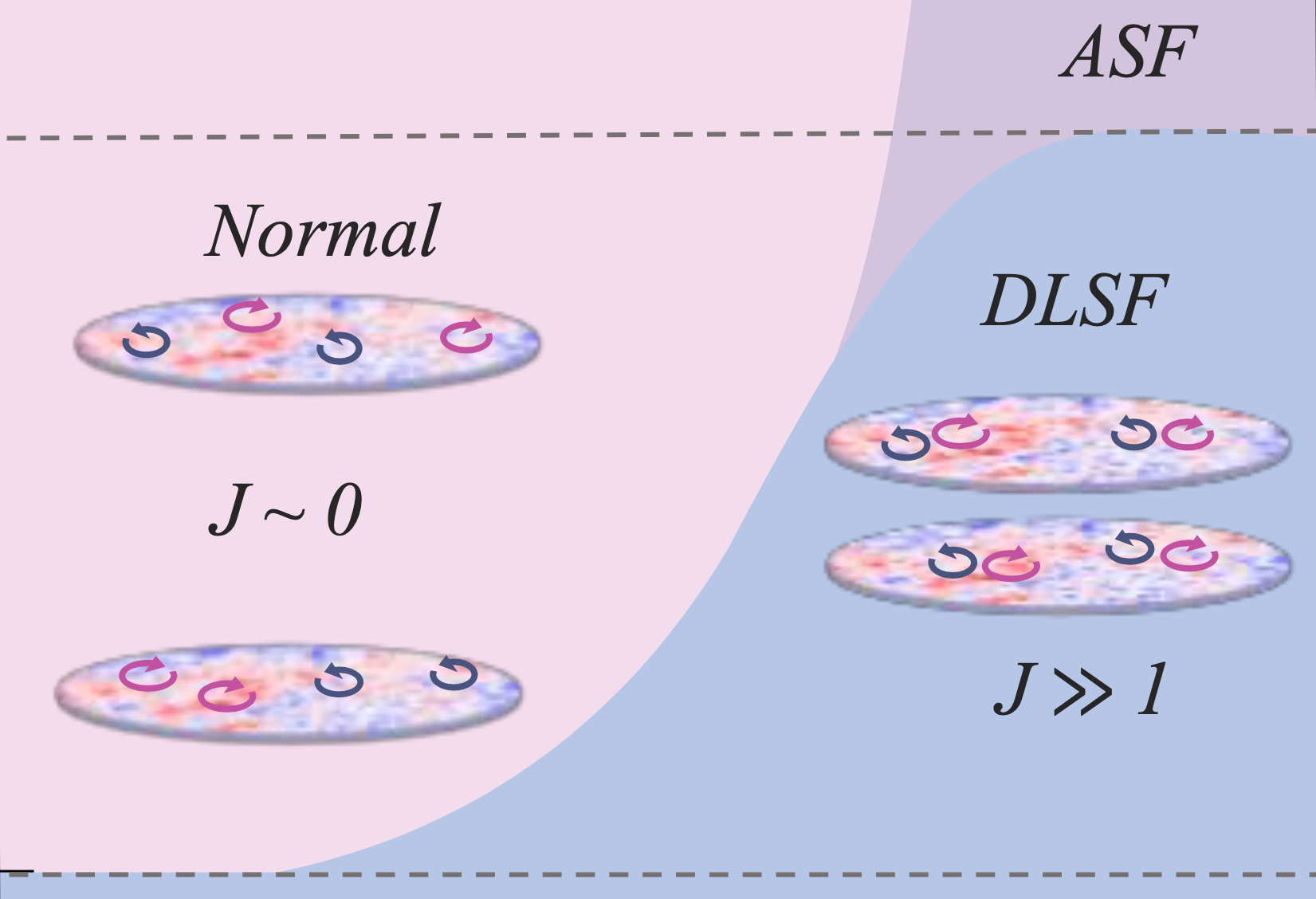
Controlling the coupling between different degrees of freedom in many-body systems is a powerful technique for engineering novel phases of matter. We create a bilayer system of two-dimensional (2D) ultracold Bose gases and demonstrate the controlled generation of bulk coherence through tunable interlayer Josephson coupling. We probe the resulting correlated phases using matter-wave interferometry, measuring both the symmetric and antisymmetric phase modes of the bilayer system. These modes exhibit a crossover from short-range to quasi-long-range order above a coupling-dependent critical point, providing direct evidence of bilayer superfluidity mediated by interlayer coupling. We map out the phase diagram and interpret it with renormalization-group theory and Monte Carlo simulations. Additionally, we elucidate the underlying mechanism through the observation of suppressed vortex excitations in the antisymmetric mode.
Coherent control of photoconductivity in graphene nanoribbons
H. P. Ojeda Collado, Lukas Broers, Ludwig Mathey

We study the photoconductivity response of graphene nanoribbons with armchair edges in the presence of dissipation using a Lindblad-von Neumann master equation formalism. We propose to control the transport properties by illuminating the system with light that is linearly polarized along the finite direction of the nanoribbon while probing along the extended direction. We demonstrate that the largest steady-state photocurrent occurs for a driving frequency that is slightly blue-detuned to the electronic band gap proportional to the width of the nanoribbon. We compare the photoconductivity in the presence of coherent and incoherent light and conclude that the enhancement of the photoconductivity for blue-detuned driving relies on the coherence of the driving term. Based on this result we propose a switching protocol for fast control of the photocurrent on a time scale of a few picoseconds. Furthermore, we suggest a design for a heterostructure of a graphene nanoribbon and a high-Tc superconductor, that is operated as a transistor as a step towards next-generation coherent electronics.
Observation of Shapiro steps in an ultracold atomic Josephson junction
Erik Bernhart, Marvin Röhrle, Vijay Pal Singh, Ludwig Mathey, Luigi Amico, Herwig Ott
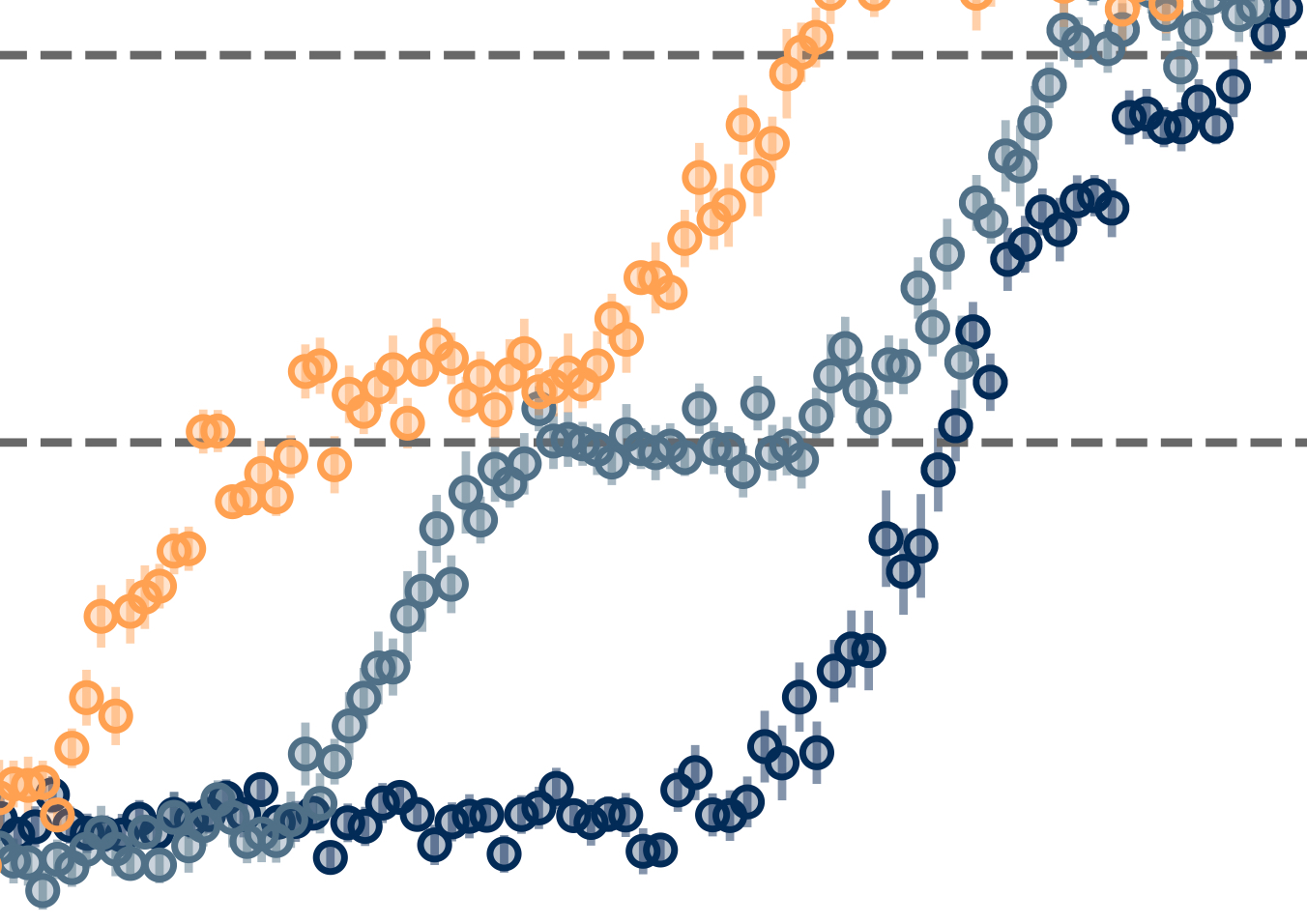
The current-voltage characteristic of a driven superconducting Josephson junction displays discrete steps. This phenomenon, discovered by Sydney Shapiro, forms today's voltage standard. Here, we report the observation of Shapiro steps in a driven Josephson junction in a gas of ultracold atoms. We demonstrate that the steps exhibit universal features, and provide key insight into the microscopic dissipative dynamics that we directly observe in the experiment. Most importantly, the steps are directly connected to phonon emission and soliton nucleation. The experimental results are underpinned by extensive numerical simulations based on classical-field dynamics and represent the transfer of the voltage standard to the realm of ultracold quantum gases.
Effect of strong confinement on the order parameter dynamics in fermionic superfluids
Cesar R. Cabrera, René Henke, Lukas Broers, Jim Skulte, H.P. Ojeda Collado, Hauke Biss, Ludwig Mathey, Henning Moritz
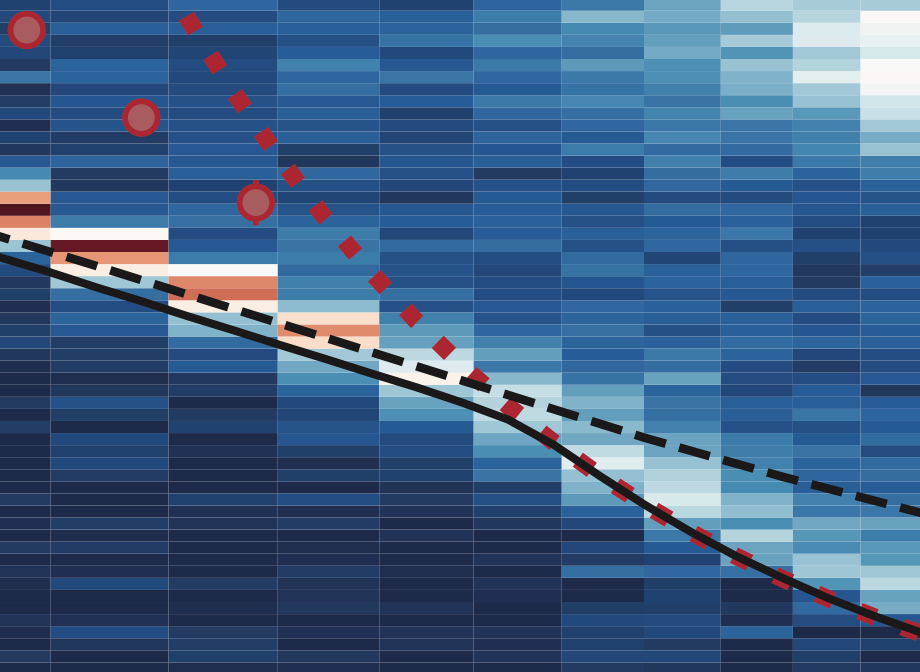
Fermionic pairing and the superfluid order parameter change dramatically in low-dimensional systems such as high-Tc superconductors. Here we show how the order parameter dynamics, which defines essential collective properties, is modified by strong confinement. Using a model system for strongly correlated superfluidity, an ultracold fermionic gas, we study the response to a weak modulation of the confinement. Surprisingly, we observe a well-defined collective mode throughout the entire crossover from the Bardeen-Cooper-Schrieffer (BCS) state to Bose-Einstein condensation (BEC) of molecules. Starting in the BCS regime, the excitation energy follows twice the pairing gap, then drops below it in the strongly correlated regime, and finally approaches twice the harmonic level spacing imposed by the confinement in the BEC regime. Its spectral weight vanishes when approaching the superfluid critical temperature. The experimental results are in excellent agreement with an effective field theory, providing strong evidence that amplitude oscillations of the order parameter hybridize with and eventually transform into spatial excitations along the confined direction. The strong modification of the excitation spectrum highlights the relevance of confinement to fermionic superfluids and superconductors, and raises questions about its influence on other fundamental quantities.
Detecting Phase Coherence of 2D Bose Gases via Noise Correlations
Shinichi Sunami, Vijay P. Singh, Erik Rydow, Abel Beregi, En Chang, Ludwig Mathey, Christopher J. Foot

We measure the noise correlations of two-dimensional (2D) Bose gases after free expansion, which allows us to characterize the in-situ phase coherence across the Berezinskii-Kosterlitz-Thouless (BKT) transition. The noise correlation function features a characteristic spatial oscillatory behavior in the superfluid phase, which gives direct access to the superfluid exponent. This oscillatory behavior vanishes above the BKT critical point, as we demonstrate for both single-layer and decoupled bilayer 2D Bose gases. Our work establishes noise interferometry as a general tool to probe and identify many-body states of bilayer quantum gases.
Pulse Engineering via Projection of Response Functions
Nicolas Heimann, Lukas Broers, Ludwig Mathey

We present an iterative optimal control method of quantum systems, aimed at an implementation of a desired operation with optimal fidelity. The update step of the method is based on the linear response of the fidelity to the control operators, and its projection onto the mode functions of the corresponding operator. Our method extends methods such as gradient ascent pulse engineering and variational quantum algorithms, by determining the fidelity gradient in a hyperparameter-free manner, and using it for a multi-parameter update, capitalizing on the multi-mode overlap of the perturbation and the mode functions. This directly reduces the number of dynamical trajectories that need to be evaluated in order to update a set of parameters. We demonstrate this approach, and compare it to the standard GRAPE algorithm, for the example of a quantum gate on two qubits, demonstrating a clear improvement in convergence and optimal fidelity of the generated protocol.
Phys. Rev. Research 7, 013101 (2025)
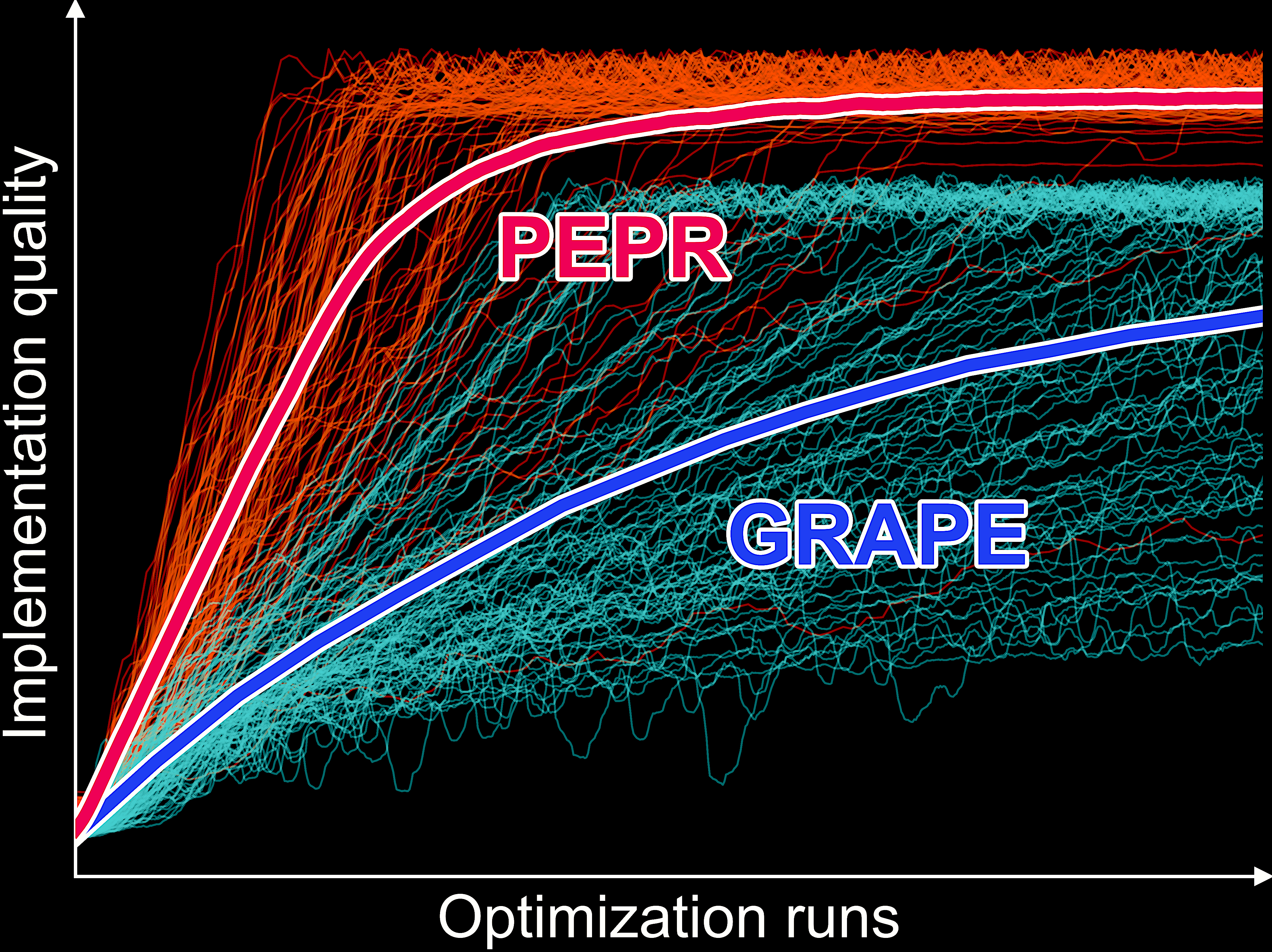
Exclusive-or encoded algebraic structure for efficient quantum dynamics
Lukas Broers, Ludwig Mathey

We propose a formalism that captures the algebraic structure of many-body two-level quantum systems, and directly motivates an efficient numerical method. This formalism is based on the binary representation of the enumeration-indices of the elements of the corresponding Lie algebra. The action of arbitrarily large elements of that algebra reduces to a few bit-wise exclusive-or operations. This formalism naturally produces sparse representations of many-body density operators, the size of which we control through a dynamic truncation method. We demonstrate how this formalism applies to real-time evolution, dissipative Lindblad action, imaginary-time evolution, and projective measurement processes. We find that this approach to calculating quantum dynamics scales close to linearly with the number of non-zero components in the density operator. We refer to this exclusive-or represented quantum algebra as ORQA. As a proof of concept, we provide a numerical demonstration of this formalism by simulating quantum annealing processes for the maximum independent set problem for up to 22 two-level systems.
Cooling dynamics of a free ion in a Bose-Einstein condensate
Lorenzo Oghittu, Juliette Simonet, Philipp Wessels-Staarmann, Markus Drescher, Klaus Sengstock, Ludwig Mathey, Antonio Negretti

We investigate the dynamics of an ion moving through a homogeneous Bose-Einstein condensate (BEC) after an initial momentum is imparted. For this, we derive a master equation in the weak-coupling limit and Lamb-Dicke approximation for the reduced density matrix of the ion. We study the time evolution of the ion's kinetic energy and observe that its expectation value, identified as the ion temperature Tion, is reduced by several orders of magnitude in a time on the order of microseconds for a condensate density in the experimentally relevant range between 1013cm−3 and 1014cm−3. We characterize this behavior by defining the duration at half maximum as the time required by Tion to reach half of its initial value, and study its dependence on the system parameters. Similarly, we find that the expectation value of the ion's momentum operator is reduced by nine orders of magnitude on the same timescale, making the ion's position converge to a final value. Based on these results, we conclude that the interaction with the bosonic bath allows for cooling and pinning of the ion by decreasing the expectation value of its kinetic energy and velocity, which constitutes a result of direct relevance for current atom-ion experiments.
Phys. Rev. Research 6, 023024 (2024)
Optimal parametric control of transport across a Josephson junction
Hannah Kleine-Pollmann, Guido Homann, Ludwig Mathey
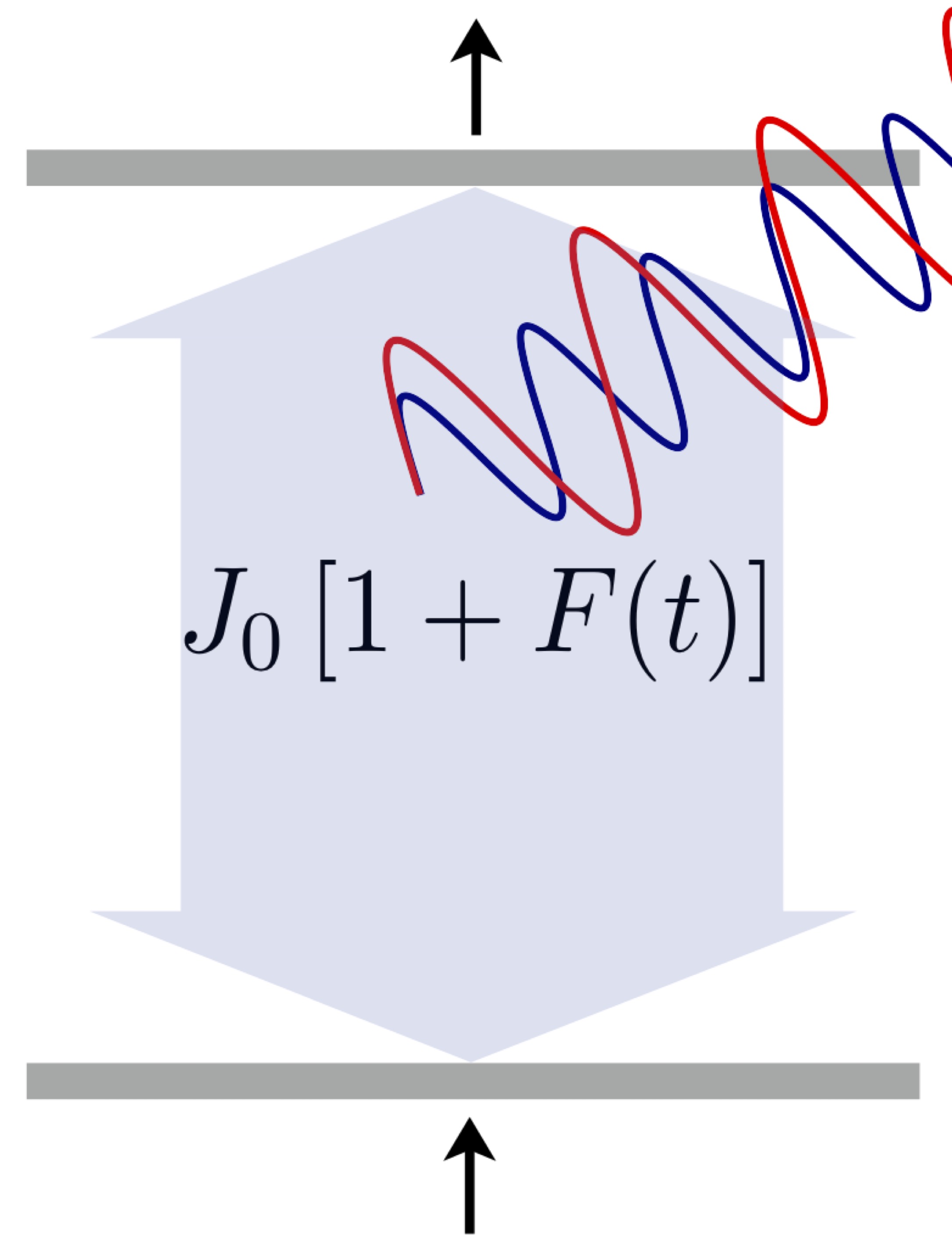
We present optimal control strategies for the DC transport across a Josephson junction. Specifically, we consider a junction in which the Josephson coupling is driven parametrically, with either a bichromatic or a trichromatic driving protocol, and optimize the prefactor of the 1/ω divergence of the imaginary part of the conductivity. We demonstrate that for an optimal bichromatic protocol an enhancement of 70 can be reached, and for an optimal trichromatic protocol an enhancement of 135. This is motivated by pump-probe experiments that have demonstrated light-enhanced superconductivity along the c-axis of underdoped YBCO, where the junction serves as a minimal model for the c-axis coupling of superconducting layers. Therefore, the significant enhancement of superconductivity that we show for multi-frequency protocols demonstrates that the advancement of pump-probe technology towards these strategies is highly desirable.
Observation of a phase transition from a continuous to a discrete time crystal
Phatthamon Kongkhambut, Jayson G. Cosme, Jim Skulte, Michelle A. Moreno Armijos, Ludwig Mathey, Andreas Hemmerich, Hans Keßler
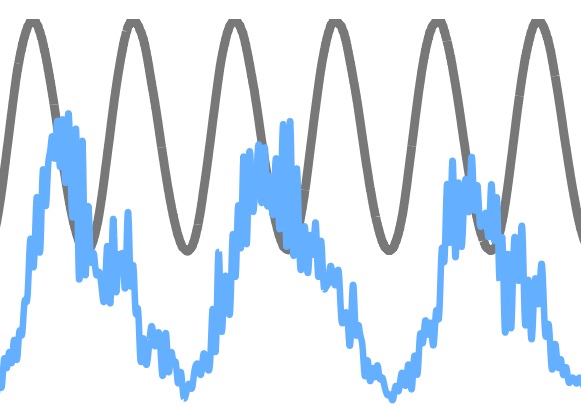
Discrete (DTCs) and continuous time crystals (CTCs) are novel dynamical many-body states, that are characterized by robust self-sustained oscillations, emerging via spontaneous breaking of discrete or continuous time translation symmetry. DTCs are periodically driven systems that oscillate with a subharmonic of the drive, while CTCs are driven continuously and oscillate with a system inherent frequency. Here, we explore a phase transition from a continuous time crystal to a discrete time crystal. A CTC with a characteristic oscillation frequency ωCTC is prepared in a continuously pumped atom-cavity system. Modulating the pump intensity of the CTC with a frequency ωdr close to 2ωCTC leads to robust locking of ωCTC to ωdr/2, and hence a DTC arises. This phase transition in a quantum many-body system is related to subharmonic injection locking of non-linear mechanical and electronic oscillators or lasers.
Realizing limit cycles in dissipative bosonic systems
Jim Skulte, Phatthamon Kongkhambut, Hans Keßler, Andreas Hemmerich, Ludwig Mathey, Jayson G. Cosme
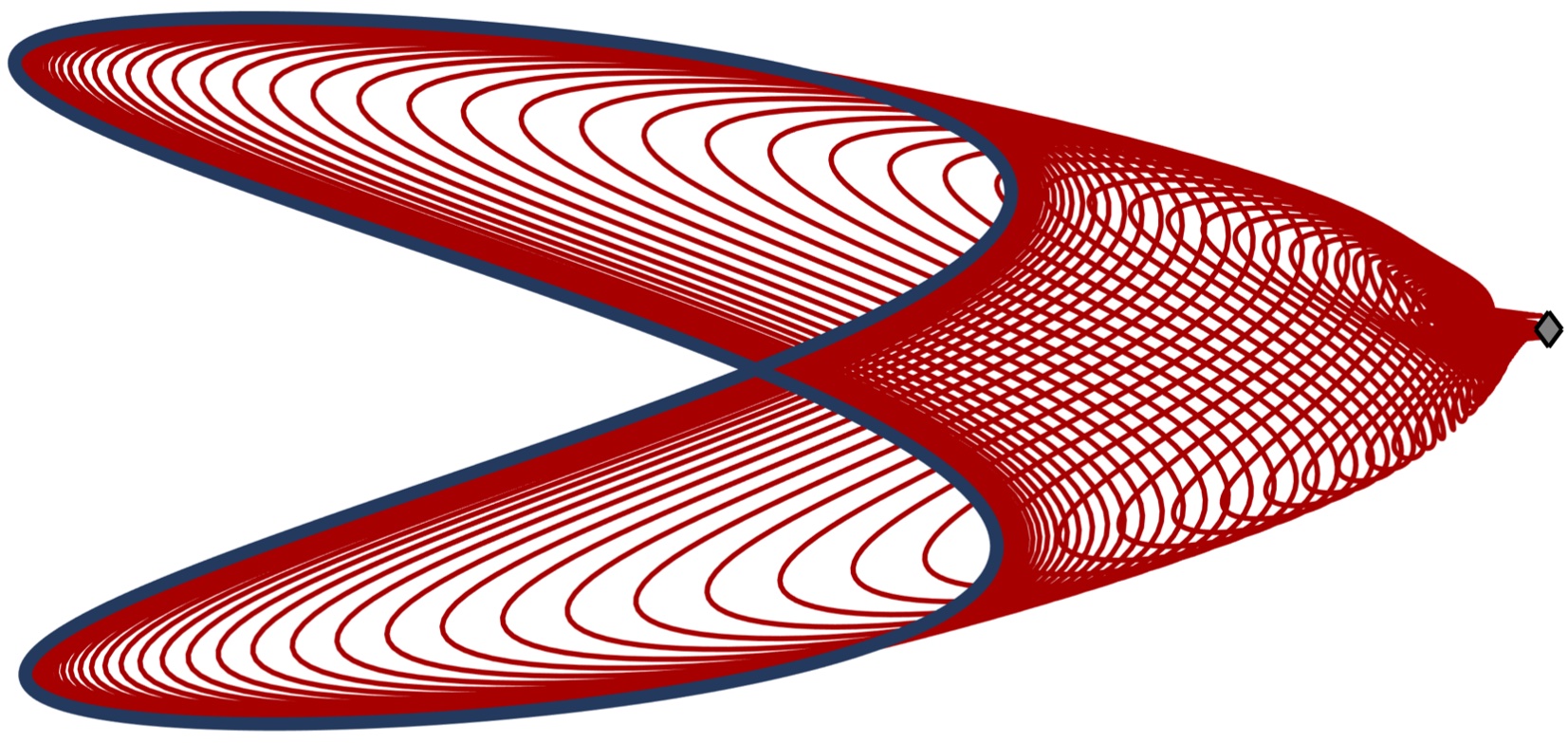
We propose a general mechanism for generating limit cycle (LC) oscillations by coupling a linear bosonic mode to a dissipative nonlinear bosonic mode. By analyzing the stability matrix, we show that LCs arise due to a supercritical Hopf bifurcation. We find that the existence of LCs is independent of the sign of the effective nonlinear interaction. The LC phase can be classified as a continuous time crystal (CTC), if it emerges in a many-body system. The bosonic model can be realised in three-level systems interacting with a quantised light mode as realised in atom-cavity systems. Using such a platform, we experimentally observe LCs for the first time in an atom-cavity system with attractive optical pump lattice, thereby confirming our theoretical predictions.
Equilibrium parametric amplification in Raman-cavity hybrids
H. P. Ojeda Collado, Marios H. Michael, Jim Skulte, Angel Rubio, Ludwig Mathey
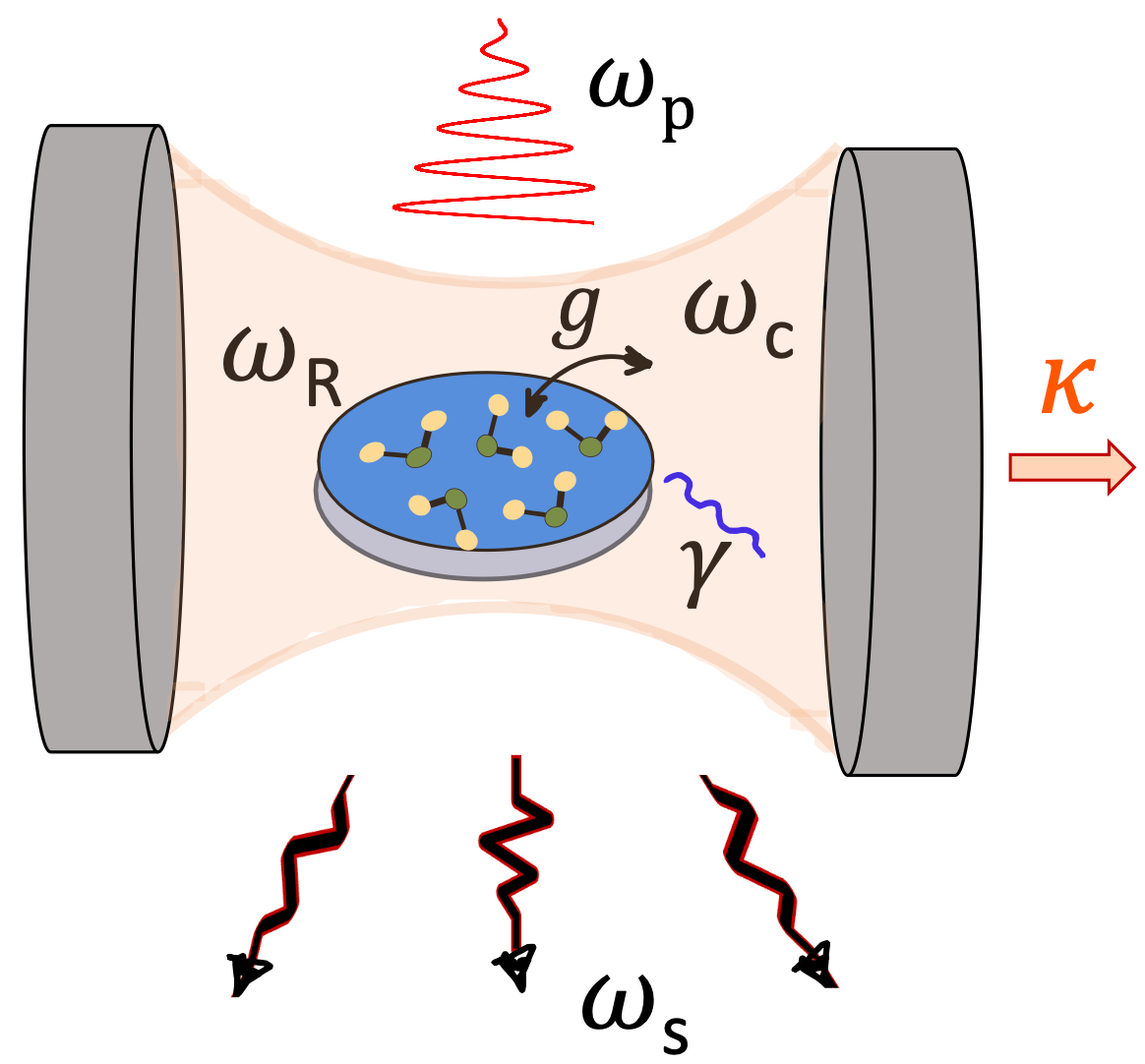
Parametric resonances and amplification have led to extraordinary photo-induced phenomena in pump-probe experiments. While these phenomena manifest themselves in out-of-equilibrium settings, here, we present the striking result of parametric amplification in equilibrium. In particular, we demonstrate that quantum and thermal fluctuations of a Raman-active mode amplifies light inside a cavity, at equilibrium, when the Raman mode frequency is twice the cavity mode frequency. This noise-driven amplification leads to the creation of an unusual parametric Raman polariton, intertwining the Raman mode with cavity squeezing fluctuations, with smoking gun signatures in Raman spectroscopy. In the resonant regime, we show the emergence of not only quantum light amplification but also localization and static shift of the Raman mode. Apart from the fundamental interest of equilibrium parametric amplification our study suggests a resonant mechanism for controlling Raman modes and thus matter properties by cavity fluctuations. We conclude by outlining how to compute the Raman-cavity coupling, and suggest possible experimental realizations.
Phys. Rev. Lett. 133, 116901 (2024)
Non-linear photoconductivity of strongly driven graphene
Lukas Broers, Ludwig Mathey
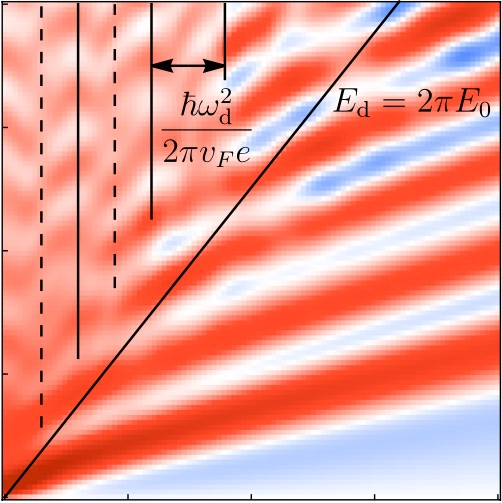
We present the non-linear DC photoconductivity of graphene under strong infra-red (IR) radiation. The photoconductivity is obtained as the response to a strong DC electric field, with field strengths outside of the linear-response regime, while the IR radiation is described by a strong AC electric field. The conductivity displays two distinct regimes in which either the DC or the AC field dominates. We explore these regimes and associate them with the dynamics of driven Landau-Zener quenches in the case of a large DC field. In the limit of large AC field, we describe the conductivity in a Floquet picture and compare the results to the closely related Tien-Gordon effect. We present analytical calculations for the non-linear differential photoconductivity, for both regimes based on the corresponding mechanisms. As part of this discussion of the non-equilibrium state of graphene, we present analytical estimates of the conductivity of undriven graphene as a function of temperature and DC bias field strength that show very good agreement with our simulations.
Dissipationless counterflow currents above T_c in bilayer superconductors
Guido Homann, Marios H. Michael, Jayson G. Cosme, Ludwig Mathey

We report the existence of dissipationless currents in bilayer superconductors above the critical temperature Tc, assuming that the superconducting phase transition is dominated by phase fluctuations. Using a semiclassical U(1) lattice gauge theory, we show that thermal fluctuations cause a transition from the superconducting state at low temperature to a resistive state above Tc, accompanied by the proliferation of unbound vortices. Remarkably, while the proliferation of vortex excitations causes dissipation of homogeneous in-plane currents, we find that counterflow currents, flowing in opposite direction within a bilayer, remain dissipationless. The presence of a dissipationless current channel above Tc is attributed to the inhibition of vortex motion by local superconducting coherence within a single bilayer, in the presence of counterflow currents. Our theory presents a possible scenario for the pseudogap phase in bilayer cuprates.
Phys. Rev. Lett. 132, 096002 (2024)
Shapiro steps in driven atomic Josephson junctions
Vijay Pal Singh, Juan Polo, Ludwig Mathey, Luigi Amico

We study driven atomic Josephson junctions realized by coupling two two-dimensional atomic clouds with a tunneling barrier. By moving the barrier at a constant velocity, dc and ac Josephson regimes are characterized by a zero and nonzero atomic density difference across the junction, respectively. Here, we monitor the dynamics resulting in the system when, in addition to the above constant velocity protocol, the position of the barrier is periodically driven. We demonstrate that the time-averaged particle imbalance features a step-like behavior that is the analog of Shapiro steps observed in driven superconducting Josephson junctions. The underlying dynamics reveals an intriguing interplay of the vortex and phonon excitations, where Shapiro steps are induced via suppression of vortex growth. We study the system with a classical-field dynamics method, and benchmark our findings with a driven circuit dynamics.
Phys. Rev. Lett. 133, 093401 (2024)
Quantum Gate Optimization for Rydberg Architectures in the Weak-Coupling Limit
Nicolas Heimann, Lukas Broers, Nejira Pintul, Tobias Petersen, Koen Sponselee, Alexander Ilin, Christoph Becker, Ludwig Mathey
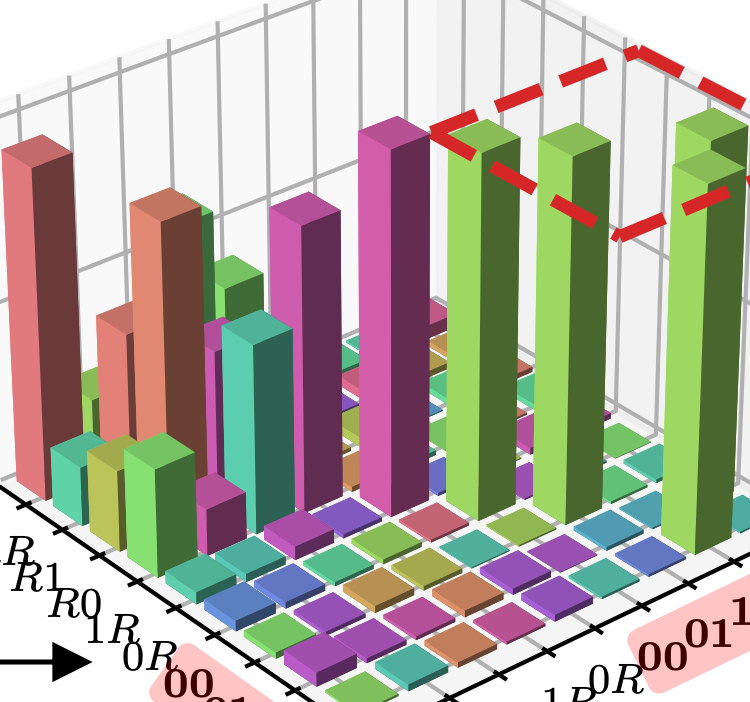
We demonstrate machine learning assisted design of a two-qubit gate in a Rydberg tweezer system. Two low-energy hyperfine states in each of the atoms represent the logical qubit and a Rydberg state acts as an auxiliary state to induce qubit interaction. Utilizing a hybrid quantum-classical optimizer, we generate optimal pulse sequences that implement a CNOT gate with high fidelity, for experimentally realistic parameters and protocols, as well as realistic limitations. We show that local control of single qubit operations is sufficient for performing quantum computation on a large array of atoms. We generate optimized strategies that are robust for both the strong-coupling, blockade regime of the Rydberg states, but also for the weak-coupling limit. Thus, we show that Rydberg-based quantum information processing in the weak-coupling limit is a desirable approach, being robust and optimal, with current technology.
Quantum rotation sensor with real-time readout based on an atom-cavity system
Jim Skulte, Jayson G. Cosme, Ludwig Mathey
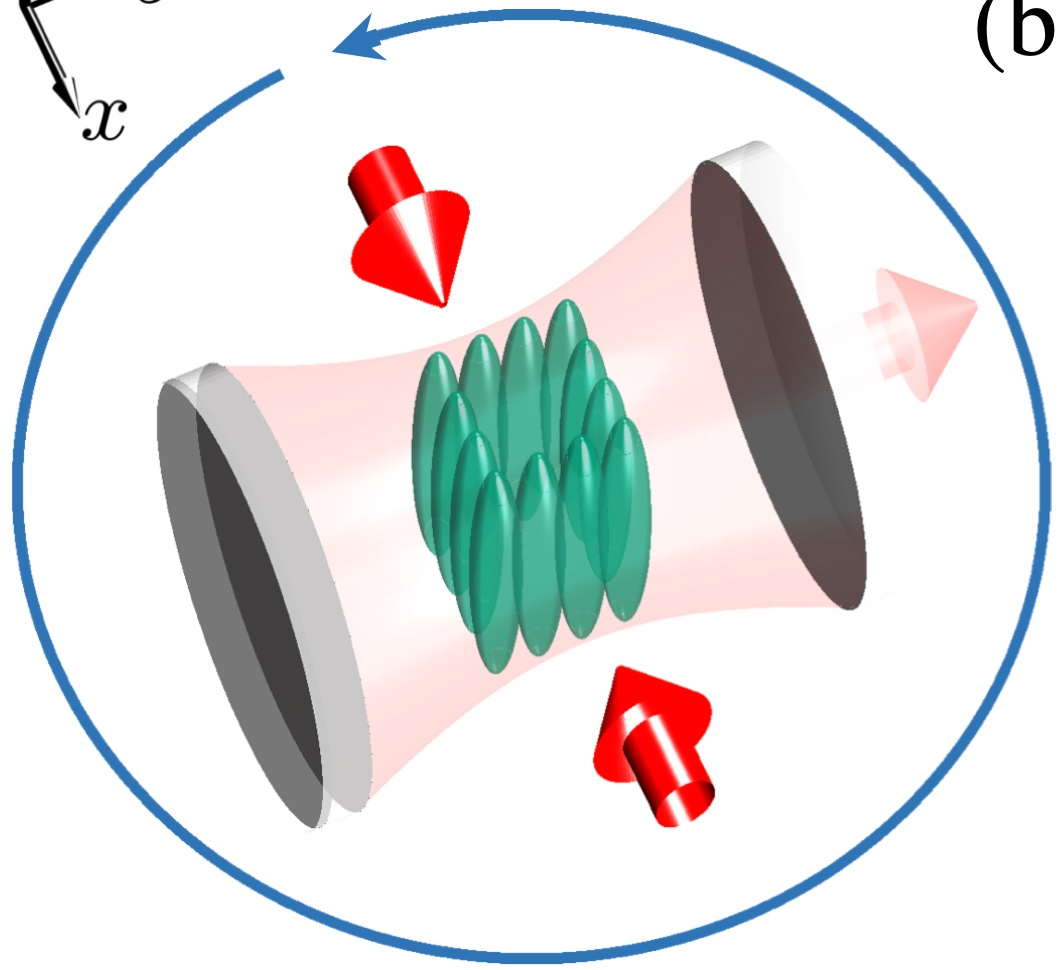
Using an atom-cavity platform, we propose to combine the effective gauge phase of rotated neutral atoms and the superradiant phase transition to build a highly sensitive and fast quantum rotation sensor. The atoms in a well-controlled array of Bose-Einstein condensates are coupled to a single light mode of an optical cavity. The photon emission from the cavity indicates changes in the rotation frequency in real time, which is crucial for inertial navigation. We derive an analytical expression for the phase boundaries and use a semi-classical method to map out the phase diagram numerically, which provides the dependence of the photon emission on the rotation. We further suggest to operate the sensor with a bias rotation, and to enlarge the enclosed area, to enhance the sensitivity of the sensor.
Bridging closed and dissipative discrete time crystals in spin systems with infinite-range interactions
Jayson G. Cosme, Jim Skulte, Ludwig Mathey
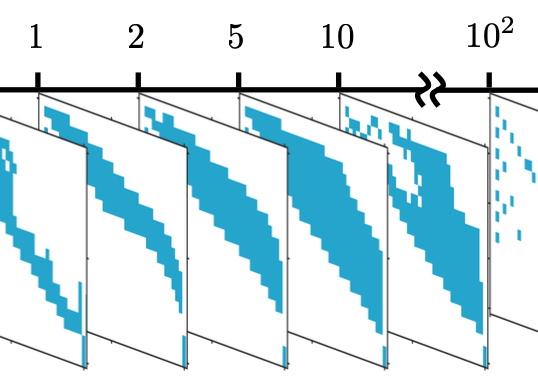
We elucidate the role that the dissipation in a bosonic channel plays in the prevalence and stability of time crystals (TCs) in a periodically driven spin-boson system described by the Dicke model. Here, the bosons are represented by photons, and they mediate the infinite-range interactions between the spin systems. For strong dissipation, we study the dynamics using an effective atom-only description and the closed Lipkin-Meshkov-Glick model. By mapping out the phase diagrams for varying dissipation strengths, ranging from zero to infinitely strong, we demonstrate that the area in the phase diagram, where a TC exists, grows with the dissipation strength but only up to an optimal point, beyond which most of the TCs become unstable. We find TCs in both closed-system and dissipative regimes, but dissipative TCs are shown to be more robust against random noise in the drive, and are only weakly affected by the choice of initial state. We present the finite-sized behaviour and the scaling of the lifetime of the TCs with respect to the number of spins and the interaction strength within a fully quantum mechanical description.
Thermal suppression of demixing dynamics in a binary condensate
Vijay Pal Singh, Luigi Amico, Ludwig Mathey

We investigate the demixing dynamics in a binary two-dimensional (2D) Bose superfluid using classical-field dynamics. By quenching the interspecies interaction parameter, we identify a strong and weak separation regime depending on the system temperature and the quench parameter. In the strong separation regime our results are in agreement with the inertial hydrodynamic domain growth law of binary fluids and a Porod scaling law for the structure factor at zero temperature is found. In the weak separation regime thermal fluctuations modify both the domain growth law and the Porod tail of the structure factor. Near the superfluid transition temperature the scaling dynamics approaches the diffusive growth law of a 2D conserved field. We then analyze the demixing dynamics in a box cloud. For low quench we find distinctive domain dynamics dictated by the boundary condition. Otherwise, the dynamics are qualitatively similar to those of systems with periodic boundary conditions.
Predicting the motion of a high-Q pendulum subject to seismic perturbations using machine learning
Nicolas Heimann, Jan Petermann, Daniel Hartwig, Roman Schnabel, Ludwig Mathey
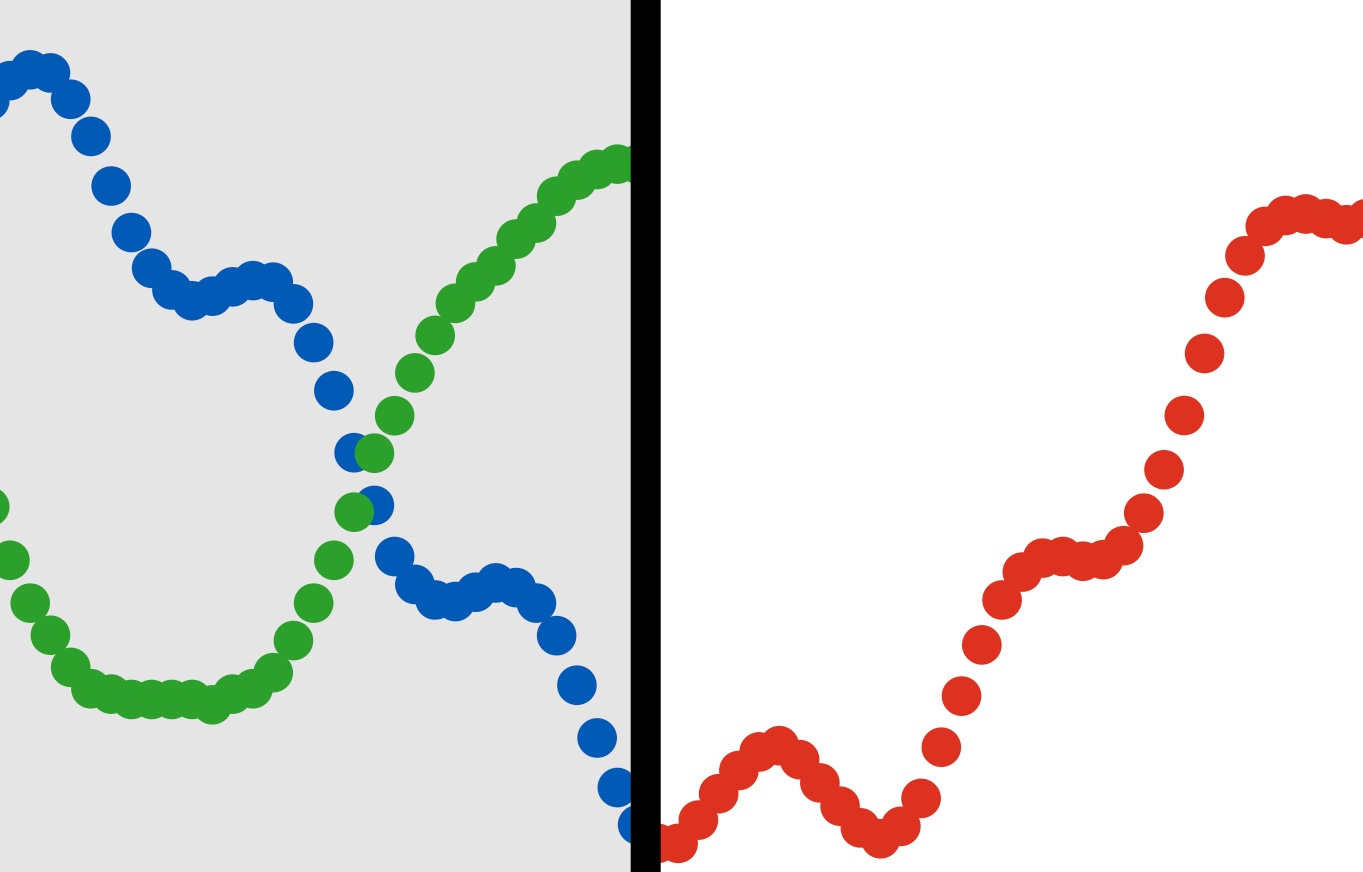
The seismically excited motion of high-Q pendula in gravitational-wave observatories sets a sensitivity limit to sub-audio gravitational-wave frequencies. Here, we report on the use of machine learning to successfully predict the motion of a high-Q pendulum with a resonance frequency of 1.4Hz that is driven by natural seismic activity. We achieve a reduction of the displacement power spectral density of 40dB at the resonant frequency 1.4Hz and 6dB at 11Hz. Our result suggests that machine learning is able to significantly reduce seismically induced test mass motion in gravitational-wave detectors in combination with corrective feed-forward techniques.
Appl. Phys. Lett. 122, 254101 (2023)
Laser operation based on Floquet-assisted superradiance
Lukas Broers, Ludwig Mathey

We demonstrate the feasibility of utilizing the recently established Floquet-assisted superradiance for laser operation. In particular, we show the robustness of this state against key imperfections. We consider the effect of a finite linewidth of the driving field, modelled via phase diffusion. We find that the linewidth of the light field in the cavity narrows drastically across the FSP transition, reminiscent of a line narrowing at the laser transition. Next, we demonstrate that the FSP is robust against inhomogeneous broadening, while displaying a reduction of light intensity. We show that the depleted population inversion of near-resonant Floquet states leads to hole burning in the inhomogeneously broadened Floquet spectra. Finally, we show that the FSP is robust against dissipation processes, with coefficients up to values that are experimentally available. We conclude that the FSP presents a robust mechanism that is capable of realistic laser operation.
Universal Scaling of the Dynamic BKT Transition in Quenched 2D Bose Gases
Shinichi Sunami, Vijay P. Singh, David Garrick, Abel Beregi, Adam J. Barker, Kathrin Luksch, Elliot Bentine, Ludwig Mathey, Christopher J. Foot

While renormalization group theory is a fully established method to capture equilibrium phase transitions, the applicability of RG theory to universal non-equilibrium behavior remains elusive. Here we address this question by measuring the non-equilibrium dynamics triggered by a quench from superfluid to thermal phase across the Berezinskii-Kosterlitz-Thouless transition in a 2D Bose gas. We quench the system by splitting the 2D gas in two and probe the relaxation dynamics by measuring the phase correlation function and vortex density via matter-wave interferometry. The dynamics occur via a two-step process of rapid phonon thermalization followed by slow dynamic vortex unbinding. We demonstrate universal scaling laws for the algebraic exponents and vortex density, supported by classical-field simulations, and show their agreement with the real-time RG theory.

Condensate formation in a dark state of a driven atom-cavity system
Jim Skulte, Phatthamon Kongkhambut, Sahana Rao, Ludwig Mathey, Hans Keßler, Andreas Hemmerich, Jayson G. Cosme
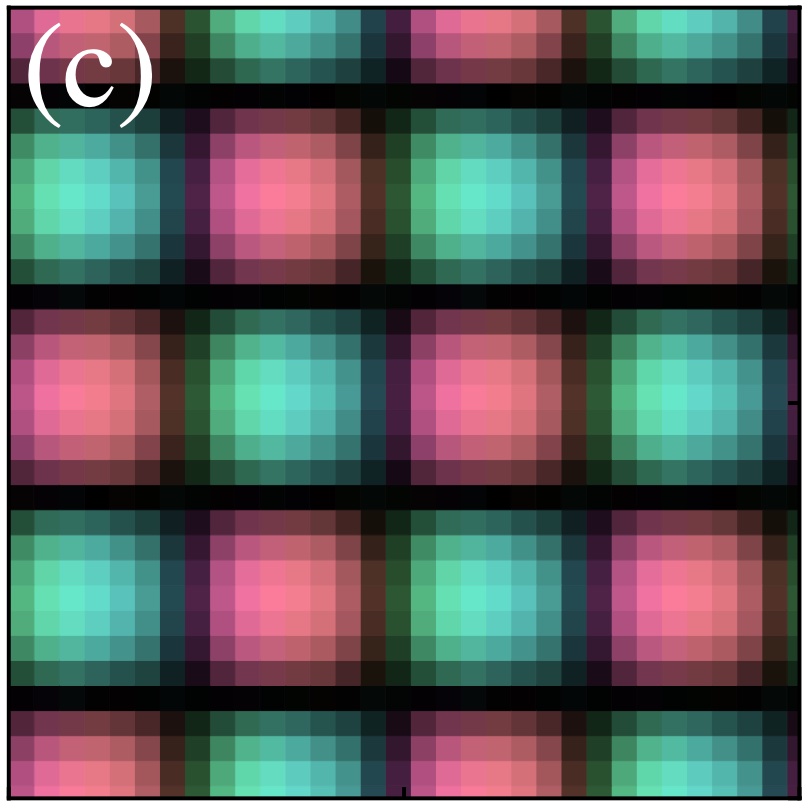
We demonstrate condensate formation in a dark state in an ultracold quantum gas coupled to a high-finesse cavity and pumped by a shaken optical lattice. We show experimentally and theoretically that the atoms in the dark state display a strong suppression of the coupling to the cavity. On the theory side, this is supported by solving the dynamics of a minimal three-level model and of the full atom-cavity system. The symmetry of the condensate wave function is anti-symmetric with respect to the potential minima of the pump lattice, and displays a staggered sign along the cavity direction. This symmetry decouples the dark state from the cavity, and is preserved when the pump intensity is switched off.
Parametric control of Meissner screening in light-driven superconductors
Guido Homann, Jayson G. Cosme, Ludwig Mathey

We investigate the Meissner effect in a parametrically driven superconductor using a semiclassical U(1) lattice gauge theory. Specifically, we periodically drive the z-axis tunneling, which leads to an enhancement of the imaginary part of the z-axis conductivity at low frequencies if the driving frequency is blue-detuned from the plasma frequency. This has been proposed as a possible mechanism for light-enhanced interlayer transport in YBa2C3O7−δ (YBCO). In contrast to this enhancement of the conductivity, we find that the screening of magnetic fields is less effective than in equilibrium for blue-detuned driving, while it displays a tendency to be enhanced for red-detuned driving.
Implementation of an atomtronic SQUID in a strongly confined toroidal condensate
Hannes Kiehn, Vijay Pal Singh, Ludwig Mathey
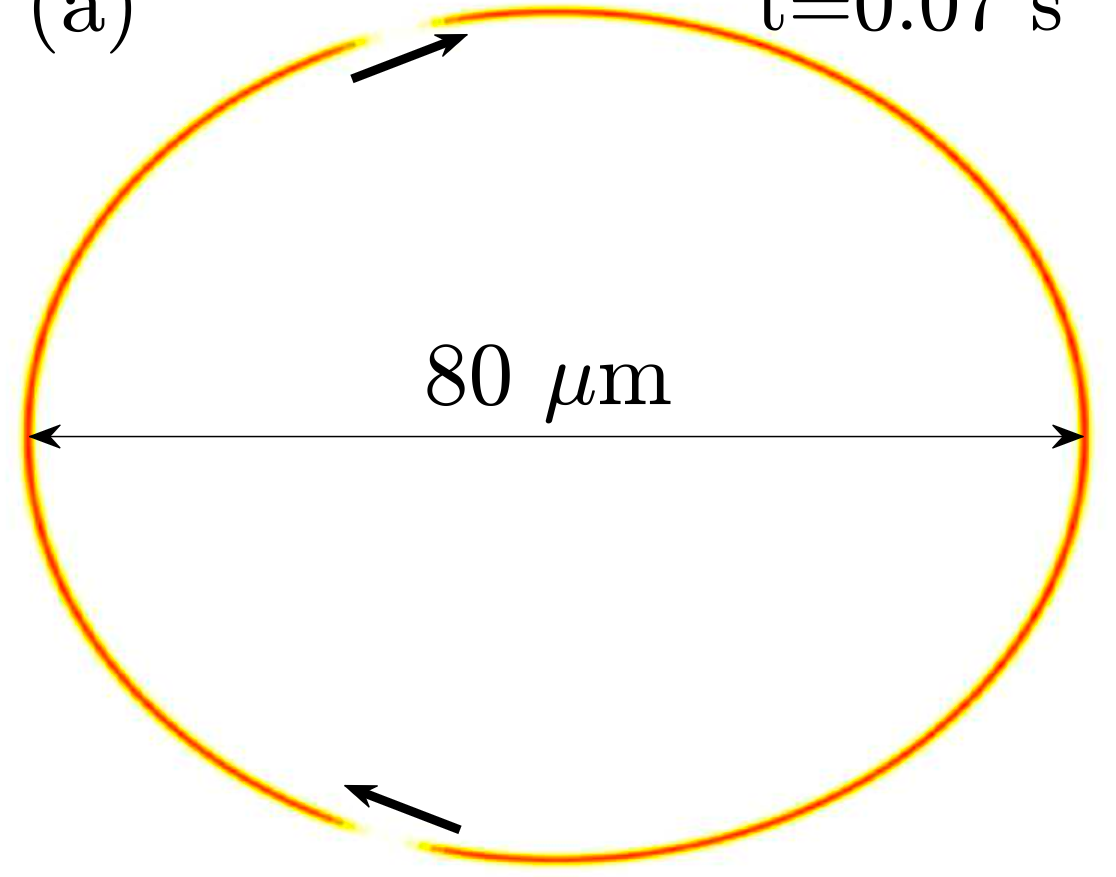
We investigate the dynamics of an atomtronic SQUID created by two mobile barriers, moving at two different, constant velocities in a quasi-1D toroidal condensate. We implement a multi-band truncated Wigner approximation numerically, to demonstrate the functionality of a SQUID reflected in the oscillatory voltage-flux dependence. The relative velocity of the two barriers results in a chemical potential imbalance analogous to a voltage in an electronic system. The average velocity of the two barriers corresponds to a rotation of the condensate, analogous to a magnetic flux. We demonstrate that the voltage equivalent shows characteristic flux-dependent oscillations. We point out the parameter regime of barrier heights and relaxation times for the phase slip dynamics, resulting in a realistic protocol for atomtronic SQUID operation.
Phys. Rev. Research 4, 033024 (2022)
First and second sound in a dilute Bose gas across the BKT transition
Vijay Pal Singh, Ludwig Mathey
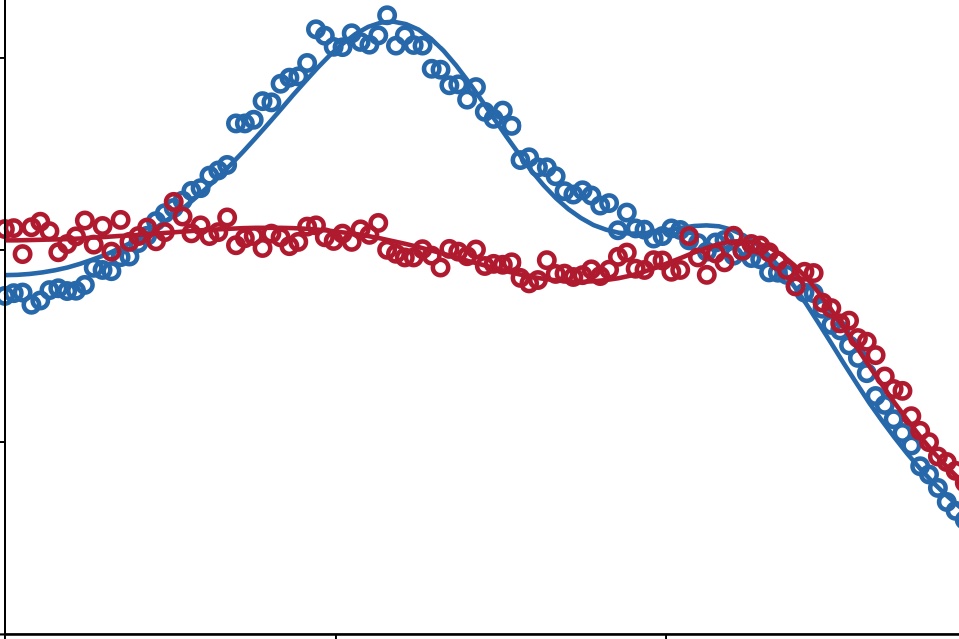
We study the propagation of the two sound modes in two-dimensional Bose gases across the Berezinksii-Kosterlitz-Thouless (BKT) transition using classical-field dynamics, which is motivated by recent measurements of Christodoulou et al. Nature 594, 191 (2021). Based on the dynamic structure factor, we identify the two sound modes as the Bogoliubov (B) and the non-Bogoliubov (NB) sound mode below the transition, and as the diffusive and the normal sound mode above the transition. The NB sound mode velocity is higher than the B sound mode velocity, which we refer to as the weak-coupling regime of the sound modes. We excite the sound modes by driving the system as in the experiment and by perturbing the density with a step-pulse perturbation, as a secondary comparison. The driven response depends on the driving strength and results in higher velocities for the B sound mode at high temperatures near the transition, compared to the sound results of the dynamic structure factor and step-pulse excitation. We show that the higher mode velocity has a weak temperature dependence across the transition, which is consistent with the experimental observation.
Floquet Engineering of Non-Equilibrium Superradiance
Lukas Broers, Ludwig Mathey
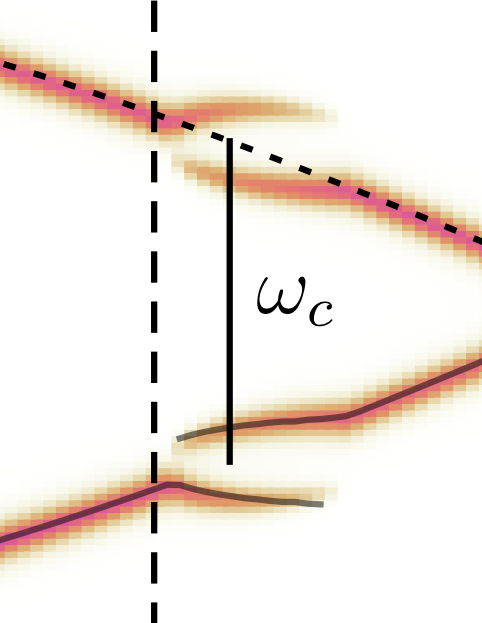
We demonstrate the emergence of a non-equilibrium superradiant phase in the dissipative Rabi-Dicke model. This phase is characterized by a photonic steady state that oscillates with a frequency close to the cavity frequency, in contrast to the constant photonic steady state of the equilibrium superradiant phase in the Dicke model. We relate this superradiant phase to the population inversion of Floquet states by introducing a Schwinger representation of the driven two-level systems in the cavity. This inversion is depleted near Floquet energies that are resonant with the cavity frequency to sustain a coherent light-field. In particular, our model applies to solids within a two-band approximation, in which the electrons act as Schwinger fermions. We propose to use this Floquet-assisted superradiant phase to obtain controllable optical gain for a laser-like operation.
Dissipative time crystal in an atom-cavity system: Influence of trap and competing interactions
Richelle Jade L. Tuquero, Jim Skulte, Ludwig Mathey, Jayson G. Cosme
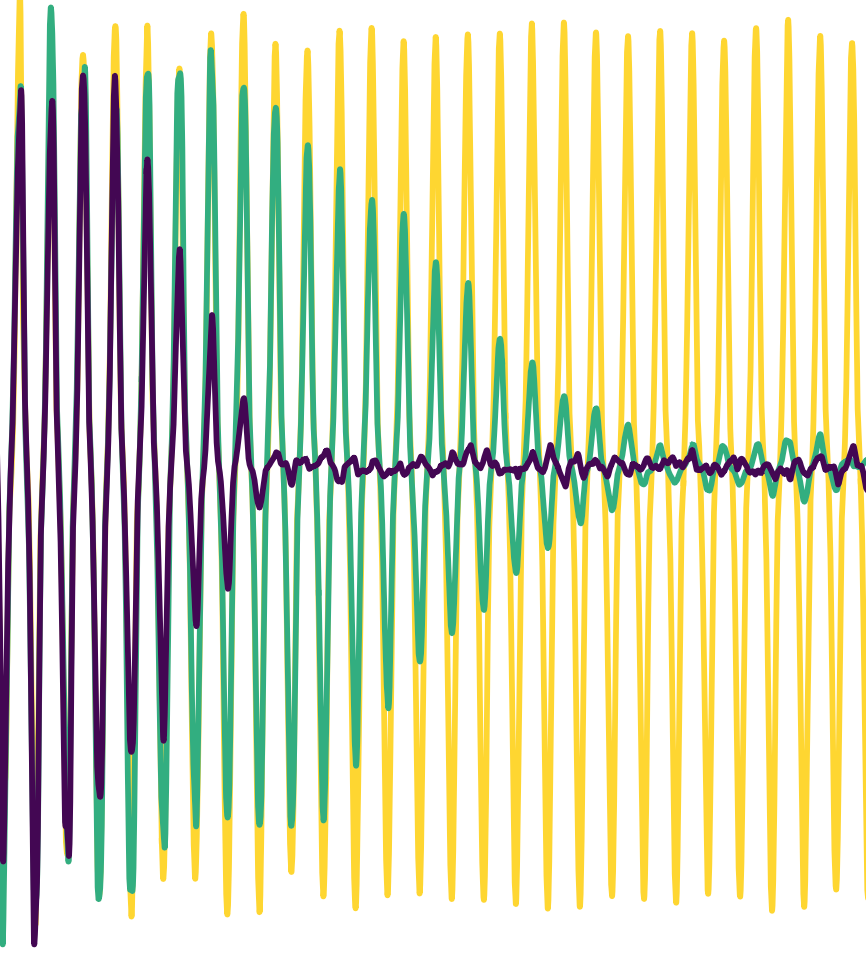
While the recently realized dissipative time crystal in a laser-pumped atom-cavity system in the experiment of Keßler et al. [Phys. Rev. Lett. 127, 043602 (2021)] is qualitatively consistent with a theoretical description in an idealized limit, here, we investigate the stability of this dissipative time crystal in the presence of an inhomogeneous potential provided by a harmonic trap, and competing short- and infinite-range interactions. We note that these features are ubiquitous in any realization of atom-cavity systems. By mapping out the dynamical phase diagram and studying how it is modified by the harmonic trap and short-range interactions, we demonstrate the persistence of long-lived dissipative time crystals beyond the idealized limit. We show the emergence of metastable dissipative time crystals with and without metastable plateaus for tight harmonic confinement and strong contact interaction, respectively.
Phys. Rev. A 105, 043311 (2022)
Observation of a continuous time crystal
Phatthamon Kongkhambut, Jim Skulte, Ludwig Mathey, Jayson G. Cosme, Andreas Hemmerich, Hans Keßler
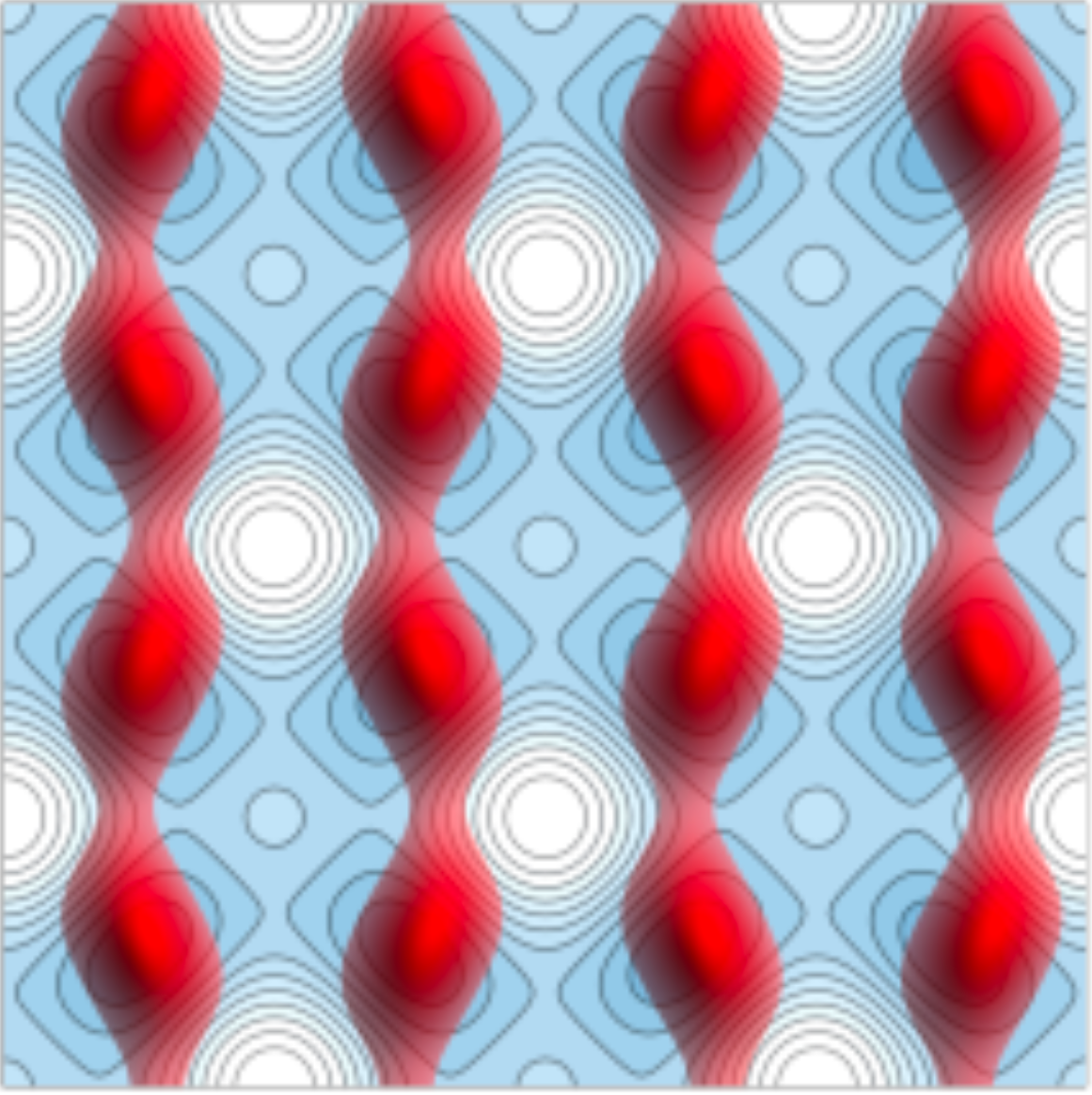
Time crystals are classified as discrete or continuous depending on whether they spontaneously break discrete or continuous time translation symmetry. While discrete time crystals have been extensively studied in periodically driven systems since their recent discovery, the experimental realization of a continuous time crystal is still pending. Here, we report the observation of a limit cycle phase in a continuously pumped dissipative atom-cavity system, which is characterized by emergent oscillations in the intracavity photon number. We observe that the phase of this oscillation is random for different realizations, and hence this dynamical many-body state breaks continuous time translation symmetry spontaneously. The observed robustness of the limit cycles against temporal perturbations confirms the realization of a continuous time crystal.
Science 377, 6606, pp. 670-673 (2022)
Commentary: Lindsay J. Leblanc, Unleashing spontaneity in a time crystal
Optimization of Quantum Algorithm Protocols without Barren Plateaus
Lukas Broers, Ludwig Mathey
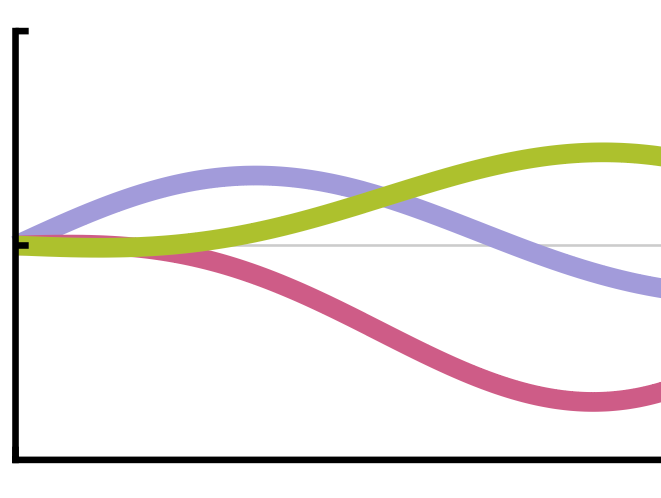
Quantum machine learning has emerged as a promising method to improve near-term quantum computation devices. However, algorithmic classes such as variational quantum algorithms have been shown to suffer from barren plateaus due to vanishing gradients in their parameter spaces. We present an approach to quantum algorithm optimization that is based on trainable Fourier coefficients of Hamiltonian system parameters. Our ansatz applies to the extension of discrete quantum variational algorithms to analogue quantum optimal control schemes and is non-local in time. We demonstrate the viability of our ansatz on several objective functions using quantum natural gradient descent. In comparison to the temporally local discretization ansätze in quantum optimal control and parametrized circuits, our ansatz exhibits faster and more consistent convergence with a distinct lack of barren plateaus. We propose our ansatz as a viable parametrization candidate for near-term quantum machine learning.
Superfluidity of a laser-stirred Bose-Einstein condensate
Hannes Kiehn, Vijay Pal Singh, Ludwig Mathey
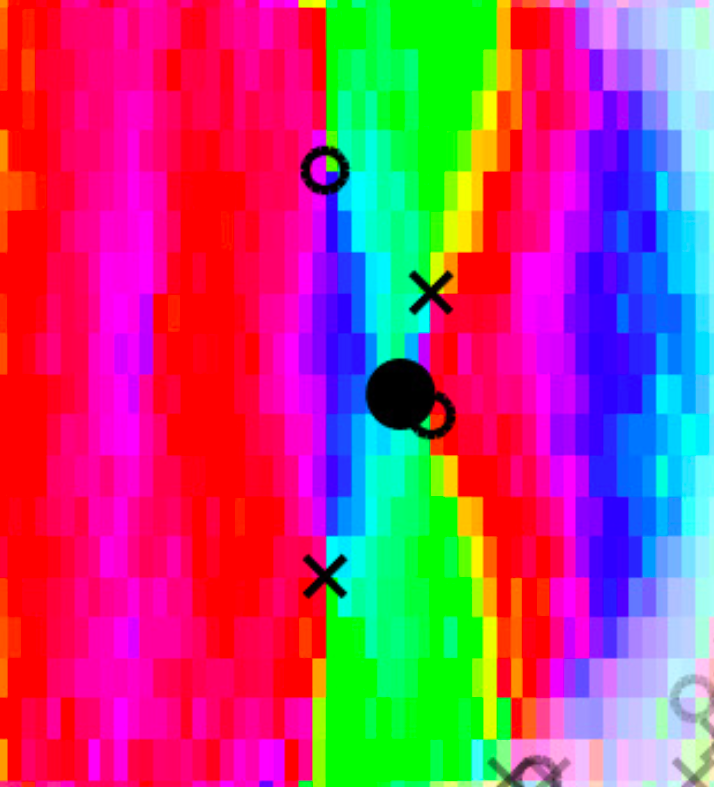
We study superfluidity of a cigar-shaped Bose-Einstein condensate (BEC) by stirring it with a Gaussian potential oscillating back and forth along the axial dimension of the condensate, motivated by experiments of C. Raman et al. Phys. Rev. Lett. 83, 2502 (1999). Using classical-field simulations and perturbation theory we examine the induced heating rate, based on the total energy of the system, as a function of the stirring velocity v. We identify the onset of dissipation by a sharply increasing heating rate above a velocity vc, which we define as the critical velocity. We show that vc is influenced by the oscillating motion, the strength of the stirrer, the temperature and the inhomogeneous density of the cloud. This results in a vanishing vc for the parameters similar to the experiments, which is inconsistent with the measurement of nonzero vc. However, if the heating rate is based on the thermal fraction after a 100 ms equilibration time, our simulation recovers the experimental observations. We demonstrate that this discrepancy is due to the slow relaxation of the stirred cloud and dipole mode excitation of the cloud.
Phys. Rev. A 105, 043317 (2022)
Frequency dependence of the light-induced Hall effect in dissipative graphene
M. Nuske, L. Mathey
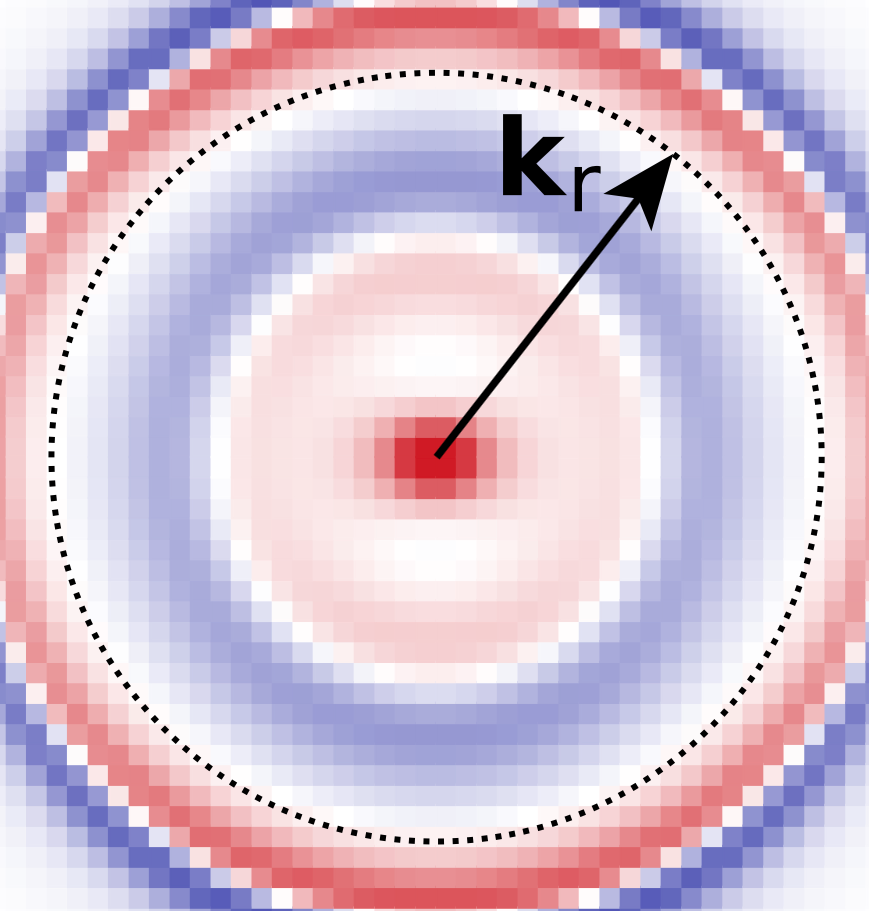
We determine the Hall conductivity of light-driven graphene, with specific focus on its frequency dependence, and compare it to the static effective approximation, based on Floquet states. This approximation gives the Haldane model as the effective model for light-driven graphene, with a gapped spectrum and a quantized Hall conductivity of −2e2/h. We simulate both the light-driven and the effective model, and explicitly include the dissipative environment in our simulations. We investigate the effect of different driving regimes and dissipation strengths on the Hall conductivity in graphene. As a central result, the Hall conductivity of the light-driven system is not well approximated by the effective model, except for a regime of intermediate driving frequencies and small dissipation where the Hall conductivity contribution of the Dirac point approximately recovers the quantized value of −2e2/h, as well as in the transient dynamics for weak dissipation.
Physical Review B 104, 224305 (2021)
Cooper problem in a cuprate lattice
Ali Sanayei, Ludwig Mathey
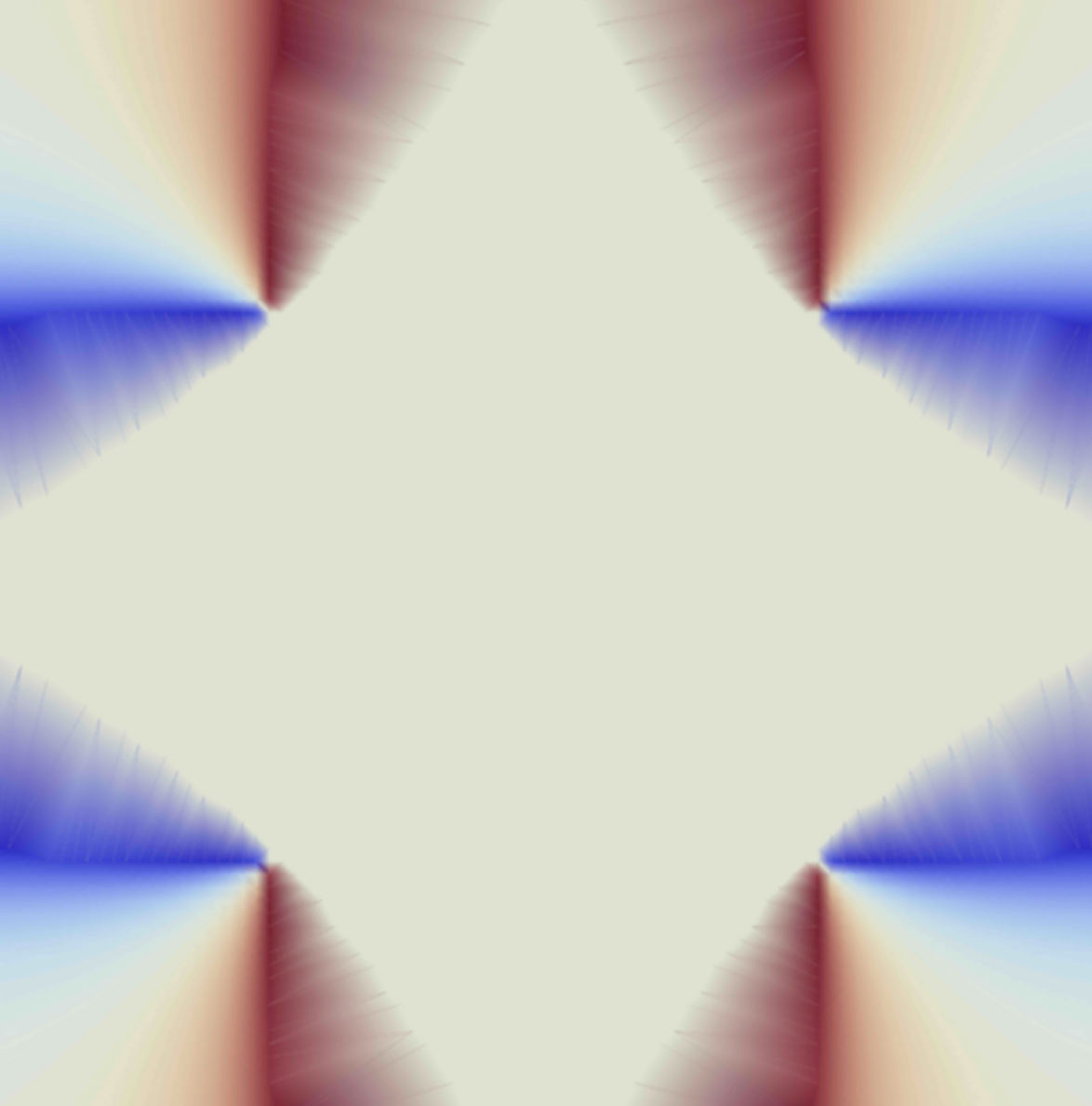
We solve the Cooper problem in a cuprate lattice by utilizing a three-band model. We determine the ground state of a Cooper pair for repulsive on-site interactions, and demonstrate that the corresponding wave function has an orbital dx2−y2 symmetry. We discuss the influence of next-nearest-neighbor tunneling on the Cooper pair solution, in particular the necessity of next-nearest-neighbor tunneling for having d-wave pairs for hole-doped systems. We also propose experimental signatures of the d-wave Cooper pairs for a cold-atom system in a cuprate lattice.
Terahertz amplifiers based on gain reflectivity in cuprate superconductors
Guido Homann, Jayson G. Cosme, Ludwig Mathey

We demonstrate that parametric driving of suitable collective modes in cuprate superconductors results in a reflectivity R>1 for frequencies in the low terahertz regime. We propose to exploit this effect for the amplification of coherent terahertz radiation in a laser-like fashion. As an example, we consider the optical driving of Josephson plasma oscillations in a monolayer cuprate at a frequency that is blue-detuned from the Higgs frequency. Analogously, terahertz radiation can be amplified in a bilayer cuprate by driving a phonon resonance at a frequency slightly higher than the upper Josephson plasma frequency. We show this by simulating a driven-dissipative U(1) lattice gauge theory on a three-dimensional lattice, encoding a bilayer structure in the model parameters. We find a parametric amplification of terahertz radiation at zero and nonzero temperature.
Phys. Rev. Res. 4, 013181 (2022)
Formation of spontaneous density-wave patterns in DC driven lattices
H. P. Zahn, V. P. Singh, M. N. Kosch, L. Asteria, L. Freystatzky, K. Sengstock, L. Mathey, C. Weitenberg
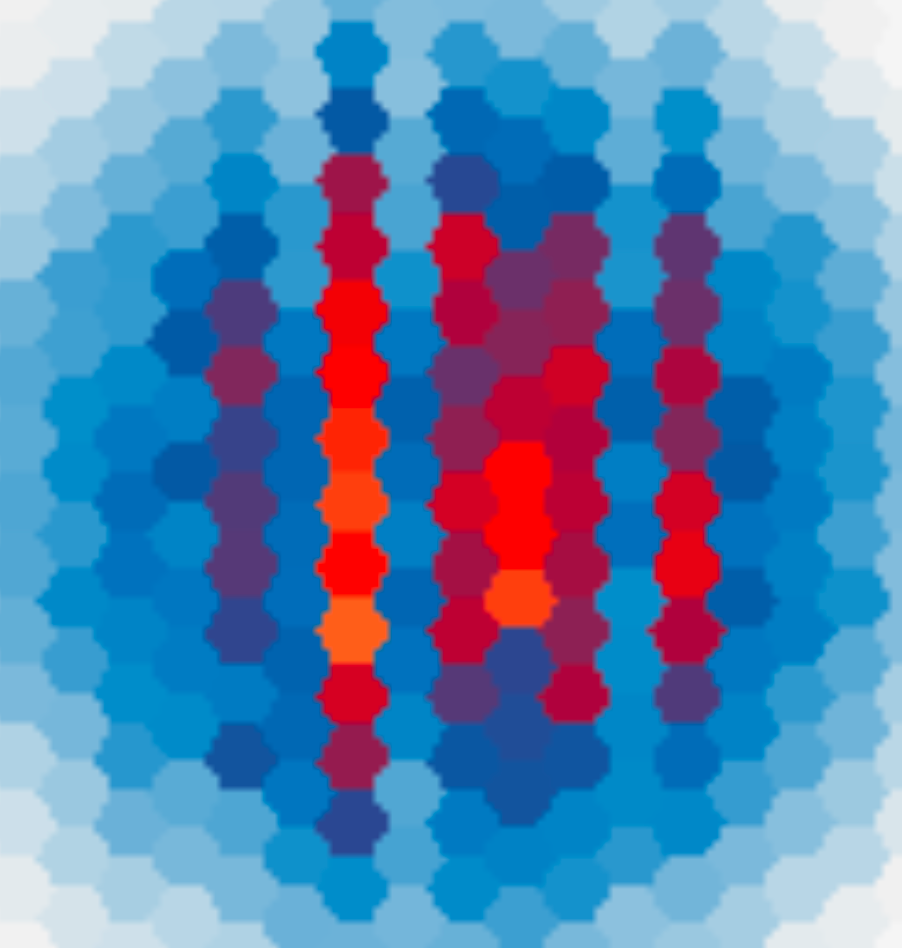
Driving a many-body system out of equilibrium induces phenomena such as the emergence and decay of transient states, which can manifest itself as pattern and domain formation. The understanding of these phenomena expands the scope of established thermodynamics into the out-of-equilibrium domain. Here, we study the out-of-equilibrium dynamics of a bosonic lattice model subjected to a strong DC field, realized as ultracold atoms in a strongly tilted triangular optical lattice. We observe the emergence of pronounced density wave patterns - which spontaneously break the underlying lattice symmetry - using a novel single-shot imaging technique with single-site resolution in three-dimensional systems, which even resolves the domain structure [1]. We explain the dynamics as arising from resonant pair tunneling processes within an effective description of the tilted Hubbard model [2]. More broadly, we establish the far out-of-equilibrium regime of lattice models subjected to a strong DC field, as an exemplary and paradigmatic scenario for transient pattern formation.
Phys. Rev. X 12, 021014 (2022)

Realization of a periodically driven open three-level Dicke model
Phatthamon Kongkhambut, Hans Keßler, Jim Skulte, Ludwig Mathey, Jayson G. Cosme, Andreas Hemmerich

A periodically driven open three-level Dicke model is realized by resonantly shaking the pump field in an atom-cavity system. As an unambiguous signature, we demonstrate the emergence of a dynamical phase, in which the atoms periodically localize between the antinodes of the pump lattice, associated with an oscillating net momentum along the pump axis. We observe this dynamical phase through the periodic switching of the relative phase between the pump and cavity fields at a small fraction of the driving frequency, suggesting that it exhibits a time crystalline character.
Phys. Rev. Lett. 127, 253601 (2021)
Parametrically driven dissipative three-level Dicke model
Jim Skulte, Phatthamon Kongkhambut, Hans Keßler, Andreas Hemmerich, Ludwig Mathey, Jayson G Cosme
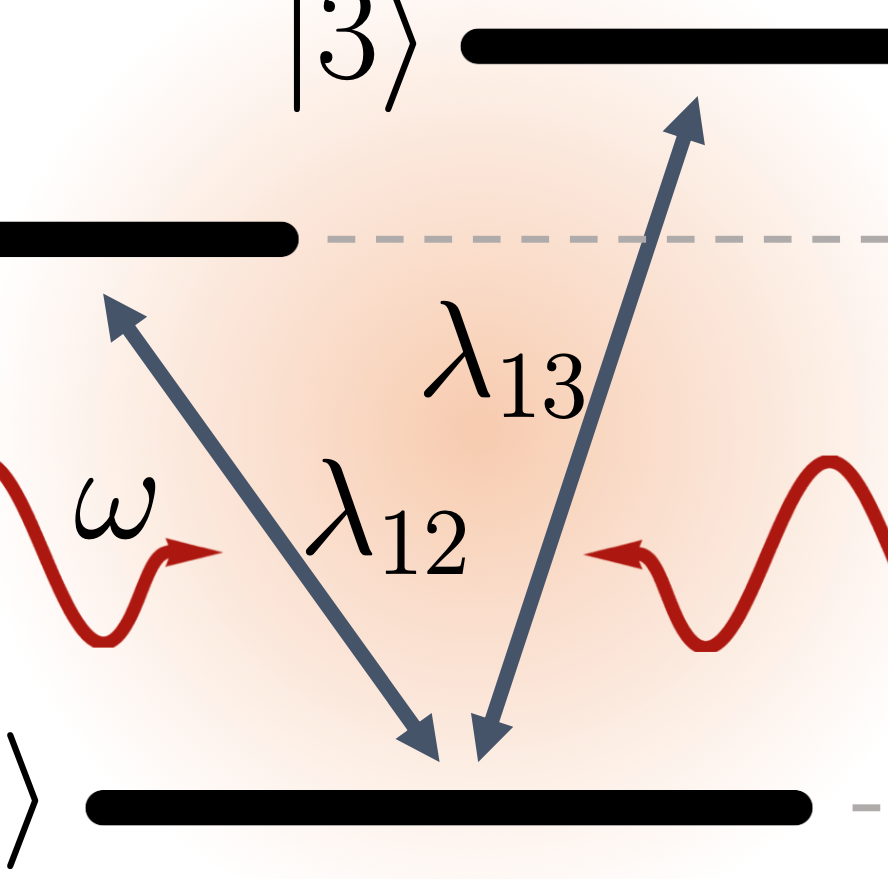
We investigate the three-level Dicke model, which describes a fundamental class of light-matter systems. We determine the phase diagram in the presence of dissipation, which we assume to derive from photon loss. Utilizing both analytical and numerical methods we characterize incommensurate time crystalline states in this phase diagram, as well as light-induced and light-enhanced superradiant states. As a primary application, we demonstrate that a shaken atom-cavity system is naturally approximated via a parametrically driven open three-level Dicke model.
Phys. Rev. A 104, 063705, (2021)
Observation of the BKT Transition in a 2D Bose Gas via Matter-Wave Interferometry
Shinichi Sunami, Vijay P. Singh, David Garrick, Abel Beregi, Adam J. Barker, Kathrin Luksch, Elliot Bentine, Ludwig Mathey, Christopher J. Foot

We probe local phase fluctuations of trapped two-dimensional (2D) Bose gases using matter-wave interferometry. This enables us to measure the phase correlation function, which changes from an algebraic to an exponential decay when the system crosses the Berezinskii-Kosterlitz-Thouless (BKT) transition. We identify the transition temperature Tc using the universal critical BKT exponent ηc=0.25 and compare the experimental value of Tc with the estimate based on the critical phase-space density. Furthermore, we measure the local vortex density as a function of the local phase-space density, which shows a scale-invariant behavior following an exponential growth across the transition. Our experimental investigation is supported by Monte Carlo simulations and provides a comprehensive understanding of the BKT transition in a trapped system.
Phys. Rev. Lett. 128, 250402 (2022)
Detecting light-induced Floquet band gaps of graphene via trARPES
Lukas Broers, Ludwig Mathey

We propose a realistic regime to detect the light-induced topological band gap in graphene via time-resolved angle-resolved photoelectron spectroscopy (trARPES), that can be achieved with current technology. The direct observation of Floquet-Bloch bands in graphene is limited by low-mobility, Fourier-broadening, laser-assisted photoemission (LAPE), probe-pulse energy-resolution bounds, space-charge effects and more. We characterize a regime of low driving frequency and high amplitude of the circularly polarized light that induces an effective band gap at the Dirac point that exceeds the Floquet zone. This circumvents limitations due to energy resolutions and band broadening. The electron distribution across the Floquet replica in this limit allow for distinguishing LAPE replica from Floquet replica. We derive our results from a dissipative master equation approach that gives access to two-point correlation functions and the electron distribution relevant for trARPES measurements.
Phys. Rev. Research 4, 013057 (2022)
Vortex and soliton dynamics in particle-hole symmetric superfluids
Jim Skulte, Lukas Broers, Jayson G. Cosme, Ludwig Mathey
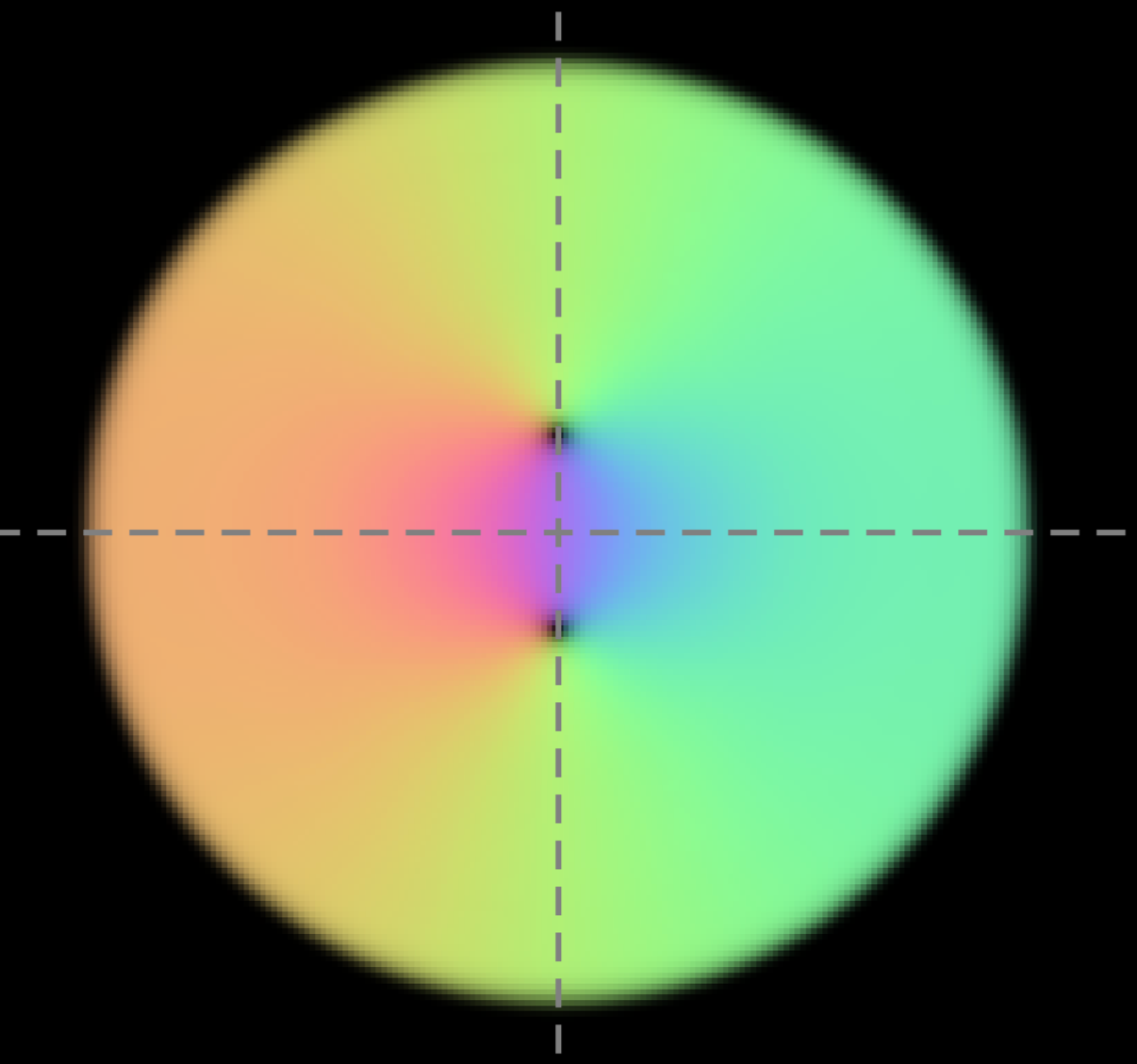
We propose to induce topological defects in particle-hole symmetric superfluids, with the prime example of the BCS state of ultracold atoms and detect their time evolution and decay. We demonstrate that the time evolution is qualitatively distinct for particle-hole symmetric superfluids, and point out that the dynamics of topological defects is strongly modified in particle-hole symmetric fluids. We obtain results for different charges and compare them with the standard Gross-Pitaevskii prediction for Bose-Einstein condensates. We highlight the observable signatures of the particle-hole symmetry in the dynamics of decaying solitons and subsequent vortices.
Phys. Rev. Research 3, 043109 (2021)
Observing light-induced Floquet band gaps in the longitudinal conductivity of graphene
Lukas Broers, Ludwig Mathey

We propose optical longitudinal conductivity as a realistic observable to detect light-induced Floquet band gaps in graphene. These gaps manifest as resonant features in the conductivity, when resolved with respect to the probing frequency and the driving field strength. We demonstrate these features via a dissipative master equation approach which gives access to a frequency- and momentum-resolved electron distribution. This distribution follows the light-induced Floquet-Bloch bands, resulting in a natural interpretation as occupations of these bands. Furthermore, we show that there are population inversions of the Floquet-Bloch bands at the band gaps for sufficiently strong driving field strengths. This strongly reduces the conductivity at the corresponding frequencies. Therefore our proposal puts forth not only an unambiguous demonstration of light-induced Floquet-Bloch bands, which advances the field of Floquet engineering in solids, but also points out the control of transport properties via light, that derives from the electron distribution on these bands.
Squeezed-field path-integral description of BCS superconductors
Kazuma Nagao, Dapeng Li, Ludwig Mathey
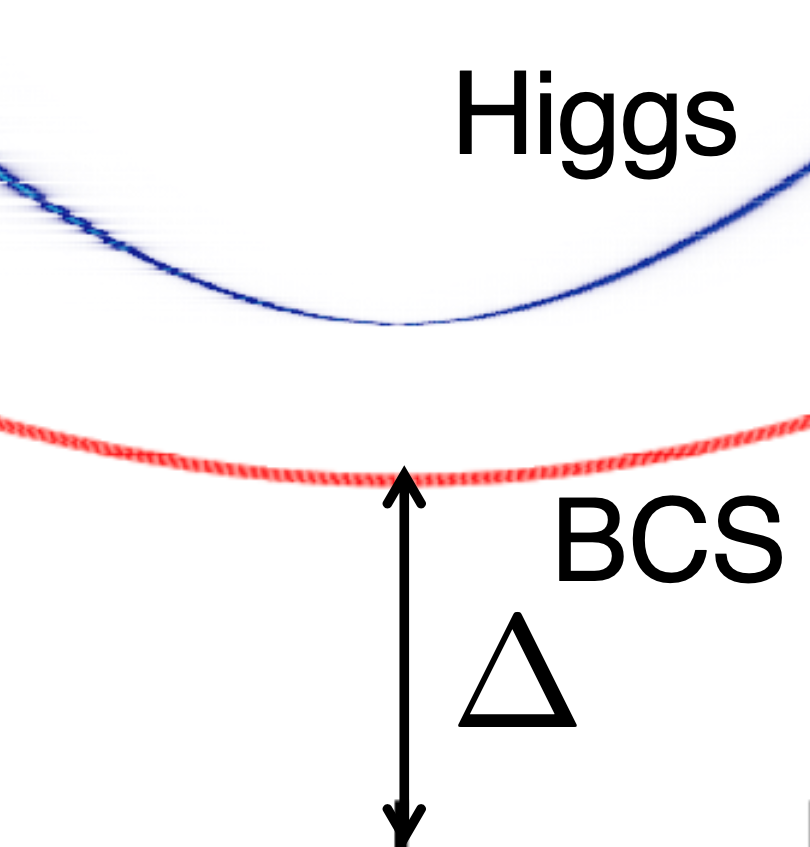
We develop a squeezed-field path-integral representation for BCS superconductors utilizing a generalized completeness relation of squeezed-fermionic coherent states. We derive a Grassmann path integral of fermionic quasiparticles that explicitly includes the collective degrees of freedom of the order-parameter dynamics governed by the classical Anderson pseudospin model. Based on this method, we analyze the spectral function of the single-particle excitations, and show that the squeezed-field path integral for the BCS Hamiltonian describes the dispersion relation and the mass gap of the Higgs amplitude mode of BCS superconductors, as well as the quasiparticle and quasihole excitation branches described by the BCS mean-field approximation.
Observation of a dissipative time crystal
Hans Keßler, Phatthamon Kongkhambut, Christoph Georges, Ludwig Mathey, Jayson G. Cosme, Andreas Hemmerich

The formation of a phase of matter can be associated with the spontaneous breaking of a symmetry. For crystallization, this broken symmetry is the spatial translation symmetry, as the atoms spontaneously localize in a periodic fashion. In analogy to spatial crystals, the spontaneous breaking of temporal translation symmetry results in the formation of time crystals. While recent and on-going experiments on driven isolated systems aim to minimize dissipative processes, as it is an undesired source of decay, well-designed dissipation has been put forth as a constitutive ingredient in the formation of dissipative time crystals (DTCs). Here, we present the first experimental realisation of a DTC, implemented in an atom-cavity system. Its defining feature is a period doubled switching between distinct chequerboard density wave patterns, induced by controlled cavity-dissipation and cavity-mediated interactions. We demonstrate the robustness of this phase against system parameter changes and temporal perturbations of the driving. Our work provides a framework for realising phases of matter with spatiotemporal order in presence of dissipation. We note that this is the natural environment of matter, and therefore shapes its physical phenomena profoundly, making its study imperative.
Phys. Rev. Lett. 127, 043602 (2021)
Commentary: P. Ball: Quantum time crystals open up Z. Gong and M. Ueda: Time Crystals in Open Systems
News coverage: The first experimental realization of a dissipative time crystal Zu verrückt, um falsch zu sein Auf den Spuren von Raum und Zeit
Fluctuations of squeezing fields beyond the Tomonaga--Luttinger liquid paradigm
Kazuma Nagao, Ludwig Mathey
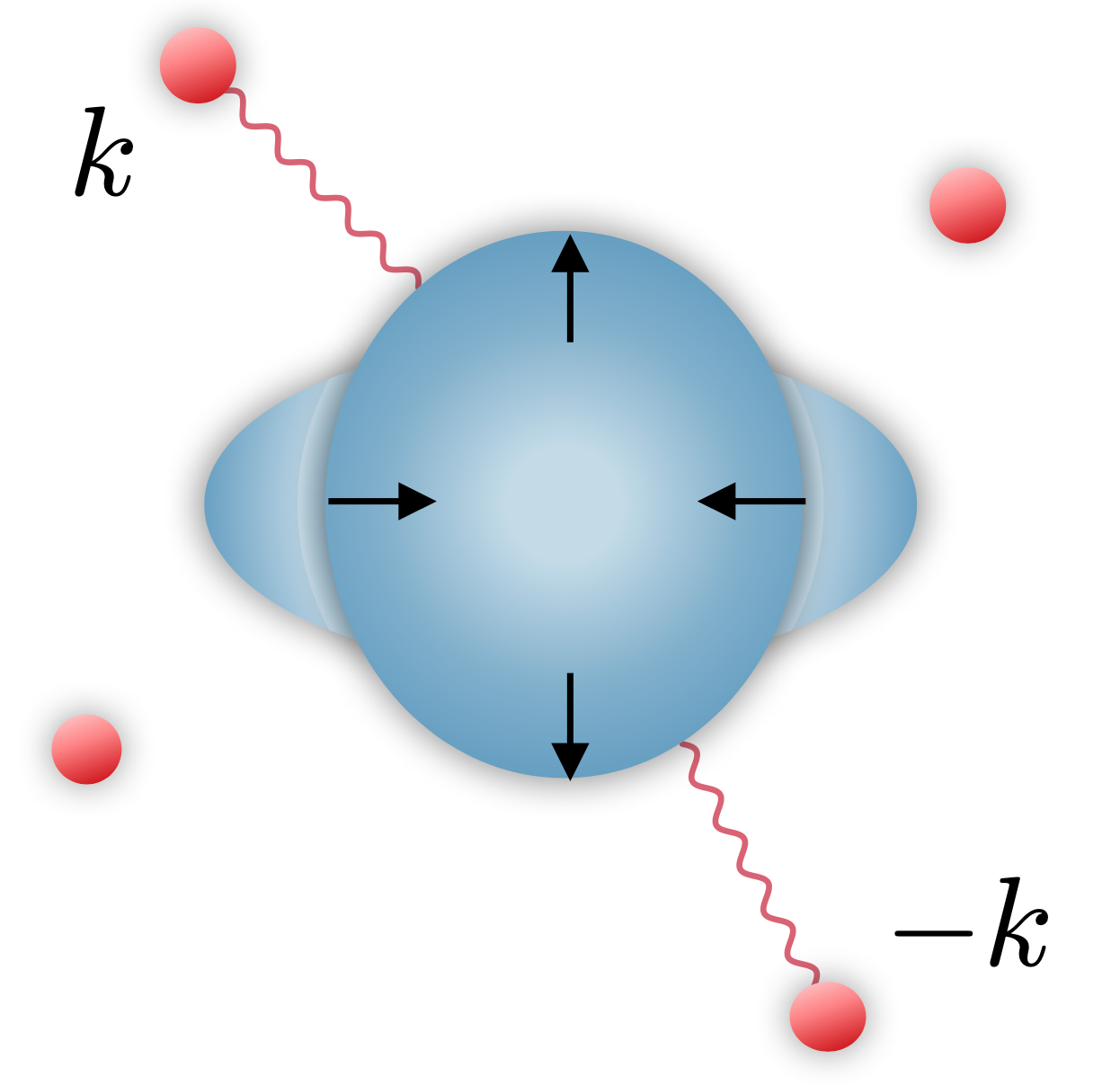
The concept of Tomonaga--Luttinger liquids (TLL) on the basis of the free-boson models is ubiquitous in theoretical descriptions of low-energy properties in one-dimensional quantum systems. In this work, we develop a squeezed-field path-integral description for gapless one-dimensional systems beyond the free-boson picture of the TLL paradigm. In the squeezed-field description, the parameter of the Bogoliubov transformation for the TL Hamiltonian becomes a dynamical squeezing field, and its fluctuations give rise to corrections to the free-boson results. We derive an effective nonlinear Lagrangian describing the dispersion relation of the squeezing field, and interactions between the excitations of the TLL and the squeezing modes. Using the effective Lagrangian, we analyze the imaginary-time correlation function of a vertex operator in the non-interacting limit. We show that a side-band branch emerges due to the fluctuation of the squeezing field, in addition to the standard branch of the free-boson model of the TLL paradigm. Furthermore, we perturbatively analyze the spectral function of the density fluctuations for an ultracold Bose gas in one dimension. We evaluate the renormalized values of the phase velocities and spectral weights of the TLL and side-band branches due to the interaction between the TLL and the squeezing modes. At zero temperature, the renormalized dispersion relations are linear in the momentum, but at nonzero temperatures, these acquire a nonlinear dependence on the momentum due to the thermal population of the excitation branches.
Higgs-mediated enhancement of interlayer transport in high-Tc superconductors
Guido Homann, Jayson G. Cosme, Junichi Okamoto, Ludwig Mathey
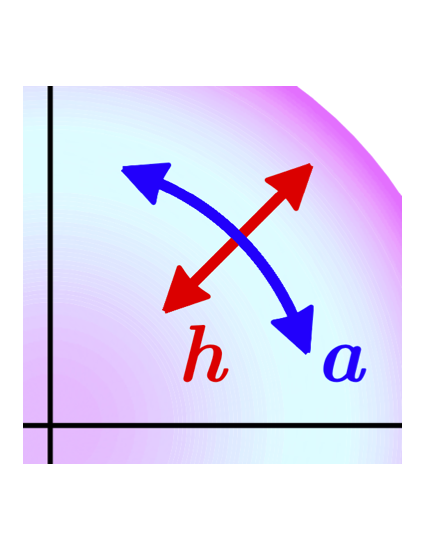
We put forth a mechanism for enhancing the interlayer transport in cuprate superconductors, by optically driving plasmonic excitations with a frequency that is blue-detuned from the Higgs frequency. The plasmonic excitations induce a collective oscillation of the Higgs field which induces parametric enhancement of the superconducting response, as we demonstrate with a minimal analytical model. Furthermore, we perform relativistic U(1) lattice gauge simulations and find good agreement with our analytical prediction. We map out the renormalization of the interlayer coupling as a function of the parameters of the optical field and demonstrate that the Higgs-mediated enhancement can be larger than 50%.
Phys. Rev. B 103, 224503 (2021)
Collective modes and superfluidity of a two-dimensional ultracold Bose gas
Vijay Pal Singh and Ludwig Mathey
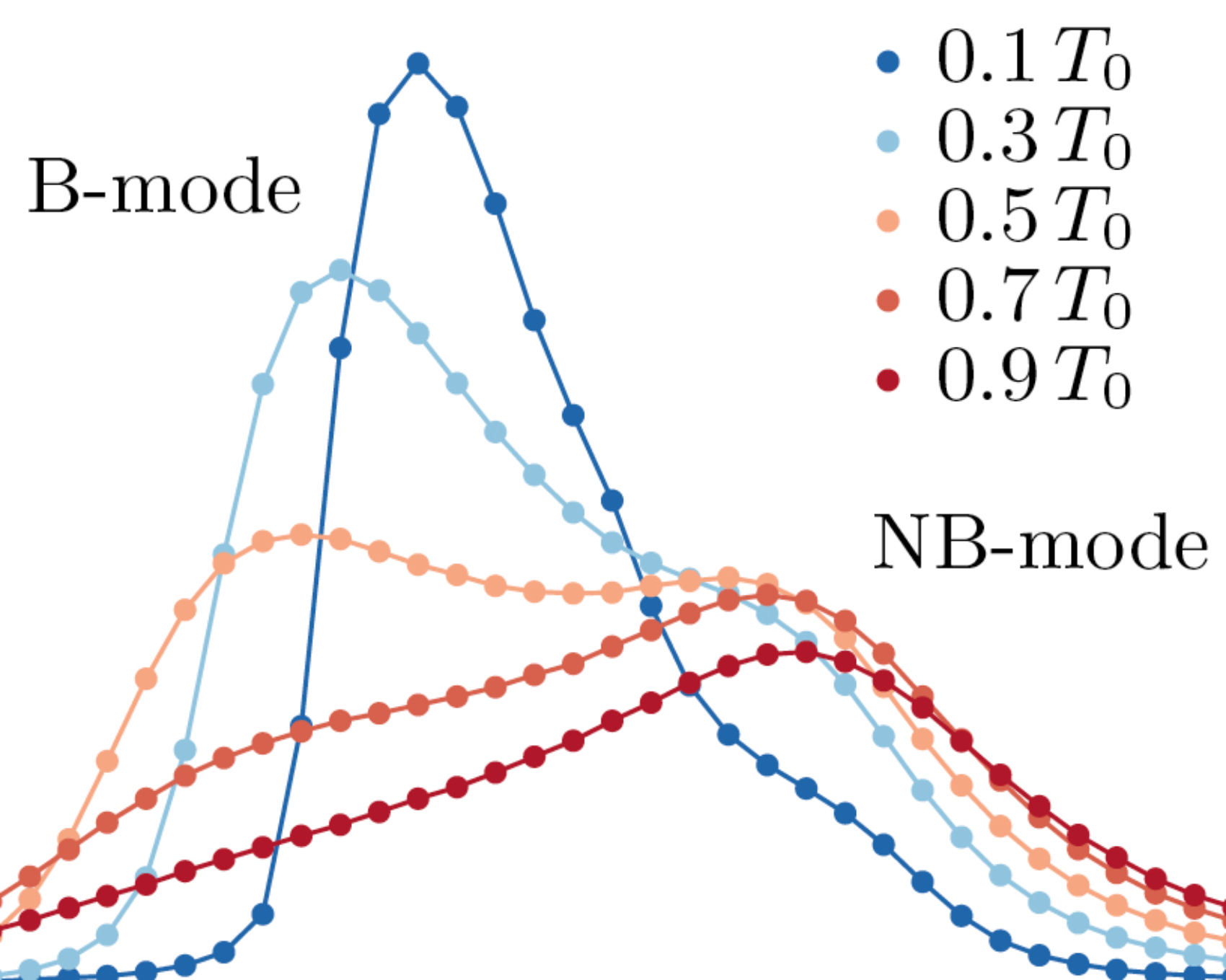
The collective modes of a quantum liquid shape and impact its properties profoundly, including its emergent phenomena such as superfluidity. Here we present how a two-dimensional Bose gas responds to a moving lattice potential. In particular we discuss how the induced heating rate depends on the interaction strength and the temperature. This study is motivated by the recent measurements of Sobirey, et al., arXiv:2005.07607 (2020), for which we provide a quantitative understanding. Going beyond the existing measurements, we demonstrate that this probing method allows to identify first and second sound in quantum liquids. We show that the two sound modes undergo hybridization as a function of interaction strength, which we propose to detect experimentally. This gives a novel insight into the two regimes of Bose gases, defined via the hierarchy of sounds modes.
Phys. Rev. Research 3, 023112 (2021)
Dynamical control of the conductivity of an atomic Josephson junction
Beilei Zhu, Vijay Pal Singh, Junichi Okamoto, Ludwig Mathey
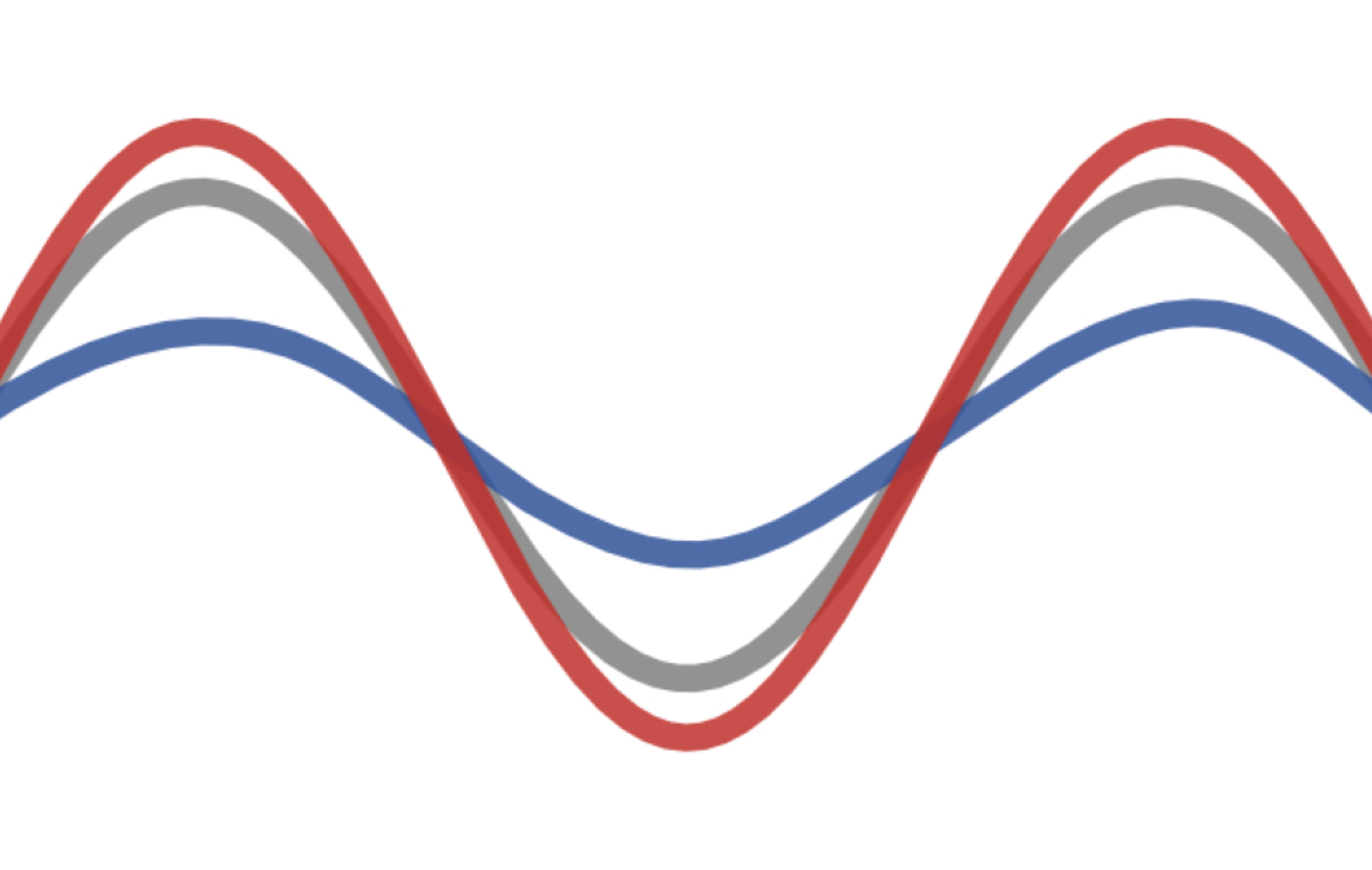
We propose to dynamically control the conductivity of a Josephson junction composed of two weakly coupled one dimensional condensates of ultracold atoms. A current is induced by a periodically modulated potential difference between the condensates, giving access to the conductivity of the junction. By using parametric driving of the tunneling energy, we demonstrate that the low-frequency conductivity of the junction can be enhanced or suppressed, depending on the choice of the driving frequency. The experimental realization of this proposal provides a quantum simulation of optically enhanced superconductivity in pump-probe experiments of high temperature superconductors.
Phys. Rev. Research 3, 013111 (2021)
Orbital many-body dynamics of bosons in the second Bloch band of an optical lattice
J. Vargas, M. Nuske, R. Eichberger, C. Hippler, L. Mathey, A. Hemmerich
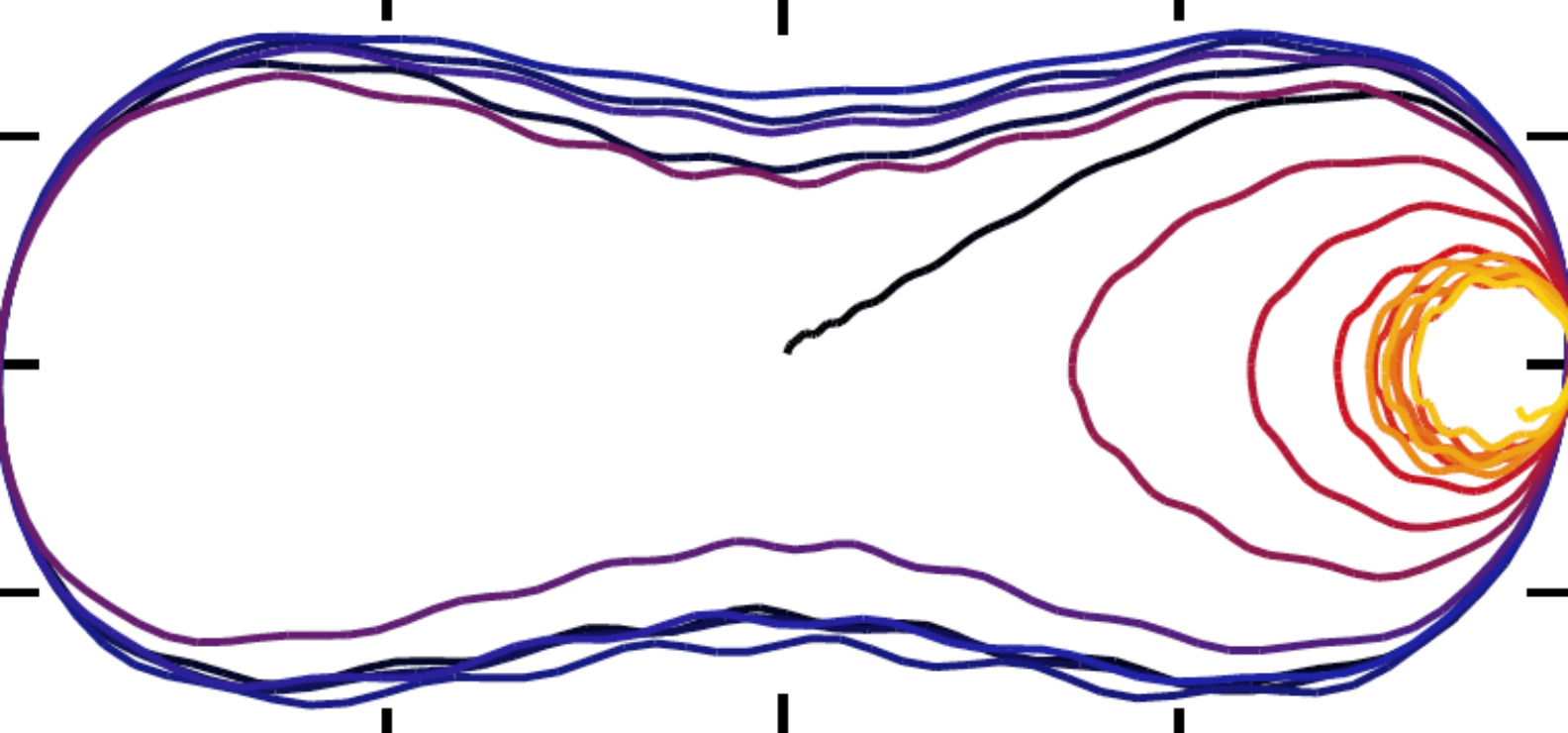
A Bose-Einstein condensate (BEC) of rubidium atoms is prepared in one of two degenerate energy minima in the second Bloch band of an optical square lattice. A subsequent oscillation of the BEC between the two energy minima is observed, which is driven by two distinct collision processes: the conventional Hubbard-type on-site collision and a collision process that changes the orbital flavor. The oscillation frequency scales with the relative strength of these collisional interactions, which can be readily tuned via an experimentally well controlled distortion of the unit cell. The observations are compared to a quantum model of two single-particle modes and to a semi-classical multi-band tight-binding simulation of 12x12 tubular sites of the lattice. Both models reproduce the observed oscillatory quantum many-body dynamics and show the correct dependence of the oscillation frequency on the ratio between the strengths of the on-site and flavor-changing collision processes.
Phys. Rev. Lett. 126, 200402 (2021)
Three-body bound states of an atom in a Fermi mixture
Ali Sanayei, Ludwig Mathey
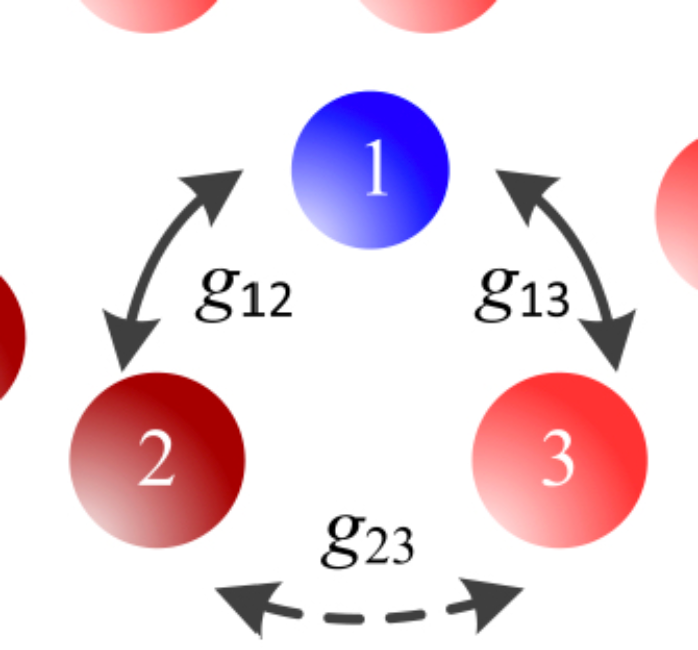
We determine the three-body bound states of an atom in a Fermi mixture. Compared to the Efimov spectrum of three atoms in vacuum, we show that the Fermi seas deform the Efimov spectrum systematically. We demonstrate that this effect is more pronounced near unitarity, for which we give an analytical estimate. We show that in the presence of Fermi seas, the three-body bound states obey a generalized discrete scaling law. For an experimental confirmation of our prediction, we propose three signatures of three-body bound states of an ultracold Fermi mixture of Yb isotopes, and provide an estimate for the onset of the bound state and the binding energy.
Floquet dynamics in light-driven solids
M. Nuske, L. Broers, B. Schulte, G. Jotzu, S. A. Sato, A. Cavalleri, A. Rubio, J. W. McIver, L. Mathey
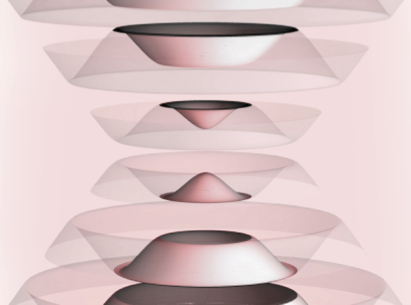
We demonstrate how the properties of light-induced electronic Floquet states in solids impact natural physical observables, such as transport properties, by capturing the environmental influence on the electrons. We include the environment as dissipative processes, such as inter-band decay and dephasing, often ignored in Floquet predictions. These dissipative processes determine the Floquet band occupations of the emergent steady state, by balancing out the optical driving force. In order to benchmark and illustrate our framework for Floquet physics in a realistic solid, we consider the light-induced Hall conductivity in graphene recently reported by J. W. McIver, et al., Nature Physics (2020). We show that the Hall conductivity is estimated by the Berry flux of the occupied states of the light-induced Floquet bands, in addition to the kinetic contribution given by the average band velocity. Hence, Floquet theory provides an interpretation of this Hall conductivity as a geometric-dissipative effect. We demonstrate this mechanism within a master equation formalism, and obtain good quantitative agreement with the experimentally measured Hall conductivity, underscoring the validity of this approach which establishes a broadly applicable framework for the understanding of ultrafast non-equilibrium dynamics in solids.
Phys. Rev. Research 2, 043408 (2020)
From a continuous to a discrete time crystal
Hans Keßler, Jayson G. Cosme, Christoph Georges, Ludwig Mathey, Andreas Hemmerich

We propose the dynamical stabilization of a nonequilibrium order in a driven dissipative system comprised an atomic Bose-Einstein condensate inside a high finesse optical cavity, pumped with an optical standing wave operating in the regime of anomalous dispersion. When the amplitude of the pump field is modulated close to twice the characteristic limit-cycle frequency of the unmodulated system, a stable subharmonic response is found. The dynamical phase diagram shows that this subharmonic response occurs in a region expanded with respect to that where stable limit-cycle dynamics occurs for the unmodulated system. In turning on the modulation we tune the atom-cavity system from a continuous to a discrete time crystal.
Higgs Time Crystal in a High-Tc Superconductor
Guido Homann, Jayson G. Cosme, Ludwig Mathey

We propose to induce a time crystalline state in a high-Tc superconductor, by optically driving a sum resonance of the Higgs mode and a Josephson plasma mode. The generic cubic process that couples these fundamental excitations converts driving of the sum resonance into simultaneous resonant driving of both modes, resulting in an incommensurate subharmonic motion. We use a numerical implementation of a semi-classical driven-dissipative lattice gauge theory on a 3D layered lattice, which models the geometry of cuprate superconductors, to demonstrate the robustness of this motion against thermal fluctuations. We demonstrate this light-induced time crystalline phase for mono- and bilayer systems, and show that this order can be detected for pulsed driving under realistic technological conditions.
Phys. Rev. Research 2, 043214 (2020)
Press coverage
Time for a new state of matter in high-temperature superconductors SFB925
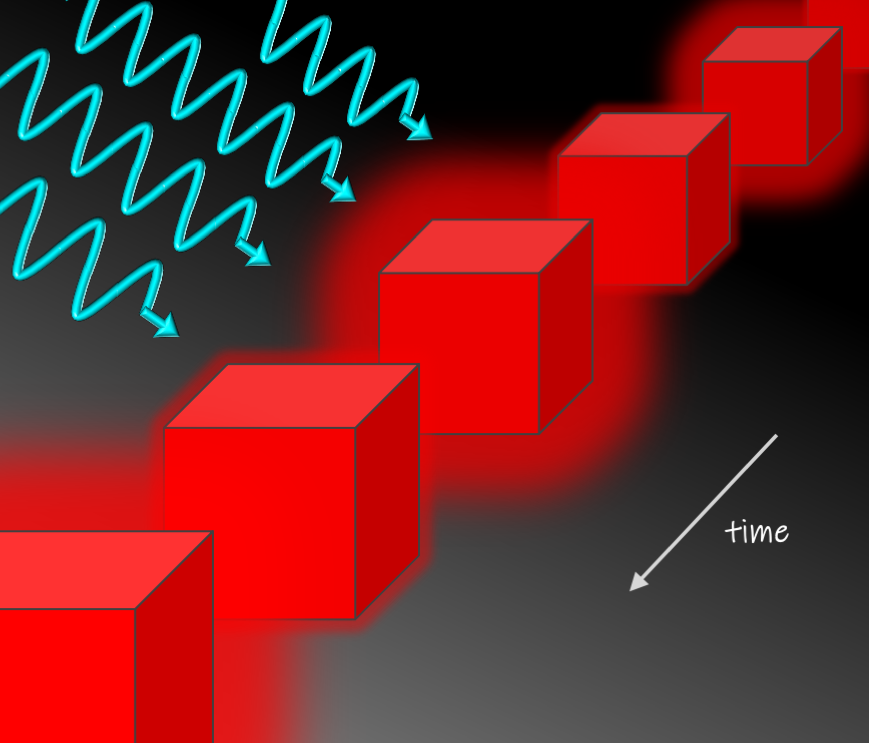
Metastable order via destructive many-body interference
M. Nuske, J. Vargas, M. Hachmann, R. Eichberger, L. Mathey, A. Hemmerich
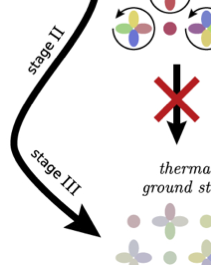
The phenomenon of metastability shapes dynamical processes ranging from radioactive decay to chemical reactions. Here, we present a mechanism for metastability in which a quantum gas self-stabilizes against relaxation towards thermal equilibrium by establishing a transient ordered state. In this state, the direct relaxation channel is suppressed by destructive interference, which derives from the chiral order of the transient state. In particular, we consider the dynamical evolution of an ultracold bosonic gas in an optical lattice, that is quenched into a higher band of the lattice, which triggers the dynamical evolution. Following this quench, the self-stabilization phenomenon manifests itself in three stages of relaxation, subsequent to the preparation of the incoherent excited state. In the first stage, the gas develops coherence resulting in the ordered state, during the second stage the gas forms a long-lived state with inhibited relaxation and slow loss of coherence, followed by the third stage of fast relaxation to the thermal ground state. We demonstrate this mechanism experimentally and theoretically, and discuss its broader implications.
Phys. Rev. Research 2, 043210 (2020)
Nonequilibrium density wave order in an atom-cavity system
Christoph Georges, Jayson G. Cosme, Hans Keßler, Ludwig Mathey, Andreas Hemmerich
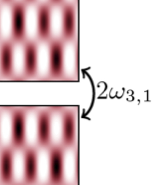
We demonstrate the emergence of a nonequilibrium density wave order in a driven-dissipative system. A Bose-Einstein condensate is placed inside a high finesse optical resonator and pumped sideways by an optical standing wave. The pump strength is chosen to induce a superradiant checkerboard order of the atoms stabilized by a strong intracavity light field. When in addition the pump is modulated close to a resonance frequency, the atoms occupy higher momentum modes leading to a nonequilibrium subradiant density wave order as pump-induced light scattering into the cavity is suppressed. Our observations together with theoretical modelling reveal the distinct dynamical nature of this higher order density wave state.
New J. Phys. 23, 023003 (2021)
Second sound in the BEC-BCS crossover
Daniel Kai Hoffmann, Vijay Pal Singh, Thomas Paintner, Manuel Jäger, Wolfgang Limmer, Ludwig Mathey, Johannes Hecker Denschlag
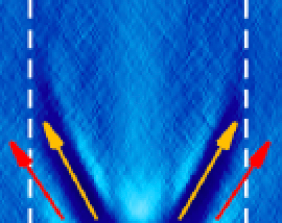
Second sound is an entropy wave which propagates in the superfluid component of a quantum liquid. Because it is an entropy wave, it probes the thermodynamic properties of the quantum liquid which are determined, e.g., by the interaction strength between the particles of the quantum liquid and their temperature. Here, we study second sound propagation for a large range of interaction strengths within the crossover between a Bose-Einstein condensate (BEC) and the Bardeen-Cooper-Schrieffer (BCS) superfluid. In particular, we investigate the strongly-interacting regime where currently theoretical predictions only exist in terms of an interpolation between the BEC, BCS and unitary regimes. Working with a quantum gas of ultracold fermionic 6Li atoms with tunable interactions, we show that the second sound speed varies only slightly in the crossover regime. We gain deeper insights into sound propagation and excitation of second sound by varying the excitation procedure which ranges from a sudden force pulse to a gentle heating pulse at the cloud center. These measurements are accompanied by classical-field simulations which help with the interpretation of the experimental data. Furthermore, we determine the spatial extension of the superfluid phase and estimate the superfluid density. In the future, this may be used to construct the so far unknown equation of state throughout the crossover.
Josephson junction dynamics in a two-dimensional ultracold Bose gas
Vijay Pal Singh, Niclas Luick, Lennart Sobirey, Ludwig Mathey
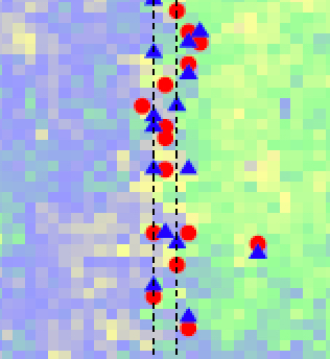
We investigate the Berezinskii-Kosterlitz-Thouless (BKT) scaling of the critical current of Josephson junction dynamics across a barrier potential in a two-dimensional (2D) Bose gas, motivated by recent experiments by Luick et al., arXiv:1908.09776. Using classical-field dynamics, we determine the dynamical regimes of this system, as a function of temperature and barrier height. As a central observable we determine the current-phase relation, as a defining property of these regimes. In addition to the ideal junction regime, we find a multimode regime, a second-harmonic regime, and an overdamped regime. For the ideal junction regime, we derive an analytical estimate for the critical current, which predicts the BKT scaling. We demonstrate this scaling behavior numerically for varying system sizes. The estimates of the critical current show excellent agreement with the numerical simulations and the experiments. Furthermore, we show the damping of the supercurrent due to phonon excitations in the bulk, and the nucleation of vortex-antivortex pairs in the junction.
Phys. Rev. Research 2, 033298 (2020)
Sound propagation in a two-dimensional Bose gas across the superfluid transition
Vijay Pal Singh, Ludwig Mathey
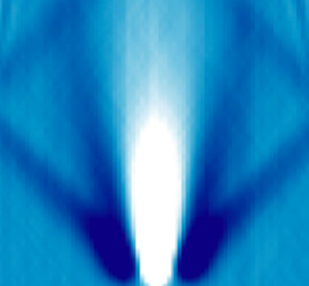
Motivated by recent experiments in Phys. Rev. Lett. 121, 145301 (2018), we study sound propagation in a two-dimensional (2D) Bose gas across the superfluid-thermal transition using classical field dynamics. Below the transition temperature we find a Bogoliubov and a non-Bogoliubov mode, above it we find the normal sound mode and the diffusive mode, as we determine from the dynamical structure factor. Our simulations of the experimental procedure agree with the measured velocities, and show that below the transition temperature the measurements detect the Bogoliubov mode. Above the transition, they either detect the normal sound mode for low densities or weak interactions, or the diffusive mode for high densities or strong interactions. As a key observation, we discuss the weak coupling regime in which the non-Bogoliubov mode has a higher velocity than the Bogoliubov mode, in contrast to a hydrodynamic scenario. We propose to detect this regime via step-pulse density perturbation, which simultaneously detects both sound modes.
Phys. Rev. Research 2, 023336 (2020)
Time crystals in a shaken atom-cavity system
Jayson G. Cosme, Jim Skulte, Ludwig Mathey
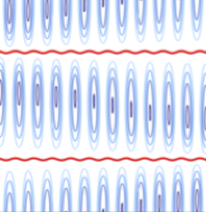
We demonstrate the emergence of a time crystal of atoms in a high-finesse optical cavity driven by a phase-modulated transverse pump field, resulting in a shaken lattice. This shaken system exhibits macroscopic oscillations in the number of cavity photons and order parameters at noninteger multiples of the driving period, which signals the appearance of an incommensurate time crystal. The subharmonic oscillatory motion corresponds to dynamical switching between symmetry-broken states, which are nonequilibrium bond ordered density wave states. Employing a semiclassical phase-space representation for the driven-dissipative quantum dynamics, we confirm the rigidity and persistence of the time crystalline phase. We identify experimentally relevant parameter regimes for which the time crystal phase is long-lived, and map out the dynamical phase diagram. We compare and contrast the incommensurate time crystal with the commensurate Dicke time crystal in the amplitude-modulated case.
Phys. Rev. A 100, 053615 (2019)
An ideal Josephson junction in an ultracold two-dimensional Fermi gas
Niclas Luick, Lennart Sobirey, Markus Bohlen, Vijay Pal Singh, Ludwig Mathey, Thomas Lompe, Henning Moritz
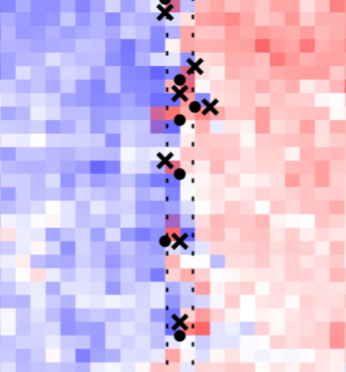
Two-dimensional structures are present in almost all known superconductors with high critical temperatures, but the role of the reduced dimensionality is still under debate. Recently, ultracold atoms have emerged as an ideal model system to study such strongly correlated 2D systems. Here, we report on the realisation of a Josephson junction in an ultracold 2D Fermi gas. We measure the frequency of Josephson oscillations as a function of the phase difference across the junction and find excellent agreement with the sinusoidal current phase relation of an ideal Josephson junction. Furthermore, we determine the critical current of our junction in the crossover from tightly bound molecules to weakly bound Cooper pairs. Our measurements clearly demonstrate phase coherence and provide strong evidence for superfluidity in a strongly interacting 2D Fermi gas.
Emergent limit cycles and time crystal dynamics in an atom-cavity system
Hans Keßler, Jayson G. Cosme, Michal Hemmerling, Ludwig Mathey, Andreas Hemmerich
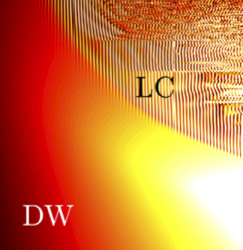
We propose an experimental realization of a time crystal using an atomic Bose-Einstein condensate in a high finesse optical cavity pumped with laser light detuned to the blue side of the relevant atomic resonance. By mapping out the dynamical phase diagram, we identify regions in parameter space showing stable limit cycle dynamics. Since the model describing the system is time-independent, the emergence of a limit cycle phase indicates the breaking of continuous time translation symmetry. Employing a semiclassical analysis to demonstrate the robustness of the limit cycles against perturbations and quantum fluctuations, we establish the emergence of a time crystal.
Phys. Rev. A 99, 053605 (2019)
Influence of electron-phonon coupling on low temperature phases of metallic single-wall carbon nanotubes
Junichi Okamoto, Ludwig Mathey, Wen-Min Huang
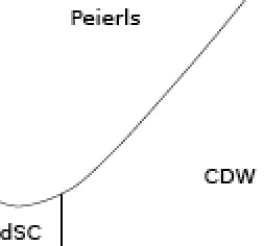
We investigate the effect of electron-phonon coupling on low temperature phases in metallic single-wall carbon nanotubes. We obtain low-temperature phase diagrams of armchair and zigzag type nanotubes with screened interactions with a weak-coupling renormalization group approach. In the absence of electron-phonon coupling, two types of nanotubes have similar phase diagrams. A D-Mott phase or d-wave superconductivity appears when the on-site interaction is dominant, while a charge-density wave or an excitonic insulator phase emerges when the nearest neighbor interaction becomes comparable to the on-site interaction. The electron-phonon coupling, treated by a two-cutoff scaling scheme, leads to different behavior in two types of nanotubes. For strong electron-phonon interactions, phonon softening is induced and a Peierls insulator phase appears in armchair nanotubes. We find that this softening of phonons may occur for any intraband scattering phonon mode. On the other hand, the effect of electron-phonon coupling is negligible for zigzag nanotubes. The distinct behavior of armchair and zigzag nanotubes against lattice distortion is explained by analysis of the renormalization group equations.
Phys. Rev. B 98, 205122 (2018)
Squeezed field path integral description of second sound in Bose-Einstein condensates
Ilias. M. H. Seifie, Vijay Pal Singh, L. Mathey
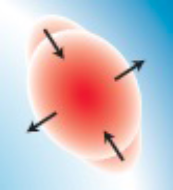
We propose a generalization of the Feynman path integral using squeezed coherent states. We apply this approach to the dynamics of Bose-Einstein condensates, which gives an effective low energy description that contains both a coherent field and a squeezing field. We derive the classical trajectory of this action, which constitutes a generalization of the Gross Pitaevskii equation, at linear order. We derive the low energy excitations, which provides a description of second sound in weakly interacting condensates as a squeezing oscillation of the order parameter. This interpretation is also supported by a comparison to a numerical c-field method.
Phys. Rev. A 100, 013602 (2019)
Press coverage
A new path to understanding second sound in Bose-Einstein condensates CUI UHH
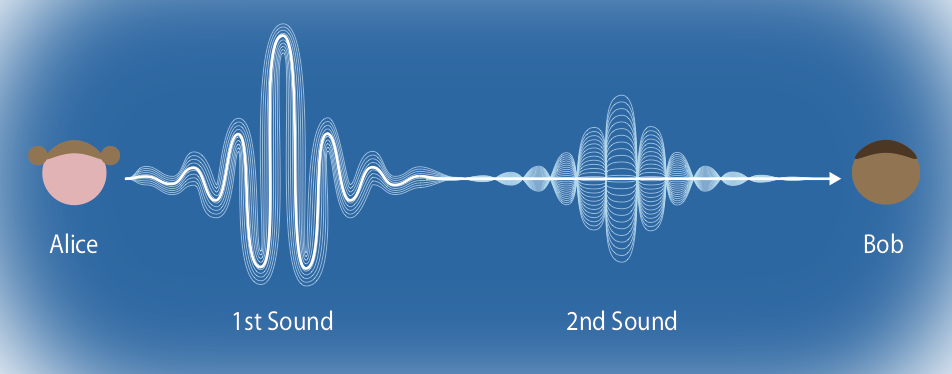
Electron trimer states in conventional superconductors
Ali Sanayei, Pascal Naidon, Ludwig Mathey
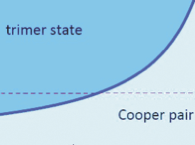
We expand the Cooper problem by including a third electron in an otherwise empty band. We demonstrate the formation of a trimer state of two electrons above the Fermi sea and the third electron, for sufficiently strong inter-band attractive interaction. We show that the critical interaction strength is the lowest for small Fermi velocities, large masses of the additional electron and large Debye energy. This trimer state competes with the formation of the two-electron Cooper pair, and can be created transiently via optical pumping.
Phys. Rev. Research 2, 013341 (2020)
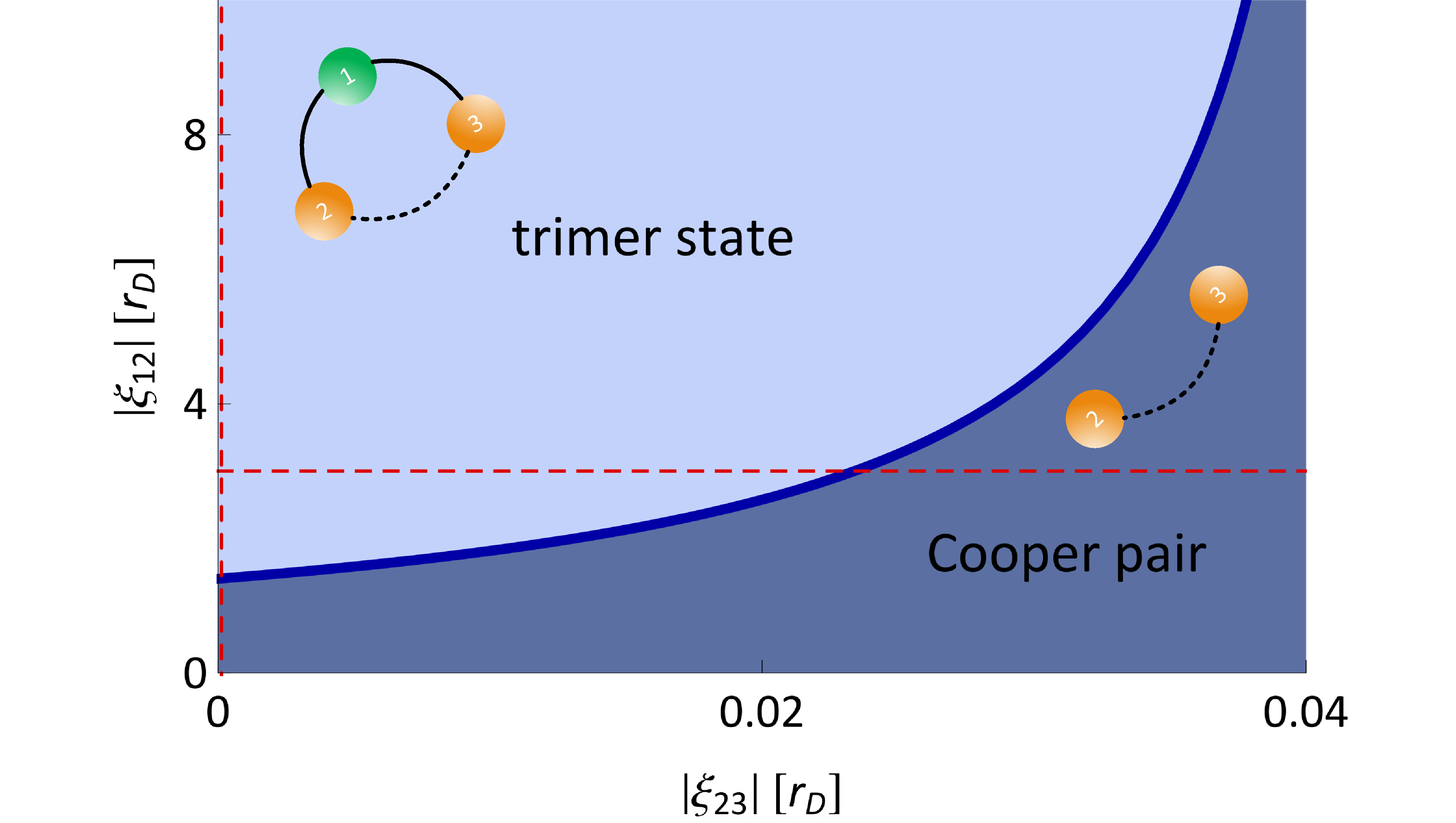
Light-induced coherence in an atom-cavity system
Christoph Georges, Jayson G. Cosme, Ludwig Mathey, Andreas Hemmerich

We demonstrate light-induced formation of coherence in a cold atomic gas system that utilizes the suppression of a competing density wave (DW) order. The condensed atoms are placed in an optical cavity and pumped by an external optical standing wave, which induces a long-range interaction mediated by photon scattering and a resulting DW order above a critical pump strength. We show that light-induced temporal modulation of the pump wave can suppress this DW order and restore coherence. This establishes a foundational principle of dynamical control of competing orders analogous to a hypothesized mechanism for light-induced superconductivity in high-Tc cuprates.
Phys. Rev. Lett. 121, 220405 (2018)
Dynamical Control of Order in a Cavity-BEC System
Jayson G. Cosme, Christoph Georges, Andreas Hemmerich, Ludwig Mathey
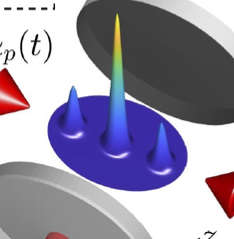
We demonstrate dynamical control of the superradiant transition of cavity-BEC system via periodic driving of the pump laser. We show that the dominant density wave order of the superradiant state can be suppressed, and that the subdominant competing order of Bose-Einstein condensation emerges in the steady state. Furthermore, we show that additional, non-equilibrium density wave orders, which do not exist in equilibrium, can be stabilized dynamically. Finally, for strong driving, chaotic dynamics emerges.
Phys. Rev. Lett. 121, 153001 (2018)
Press coverage
Disrupting crystalline order to restore superfluidity CUI UHH
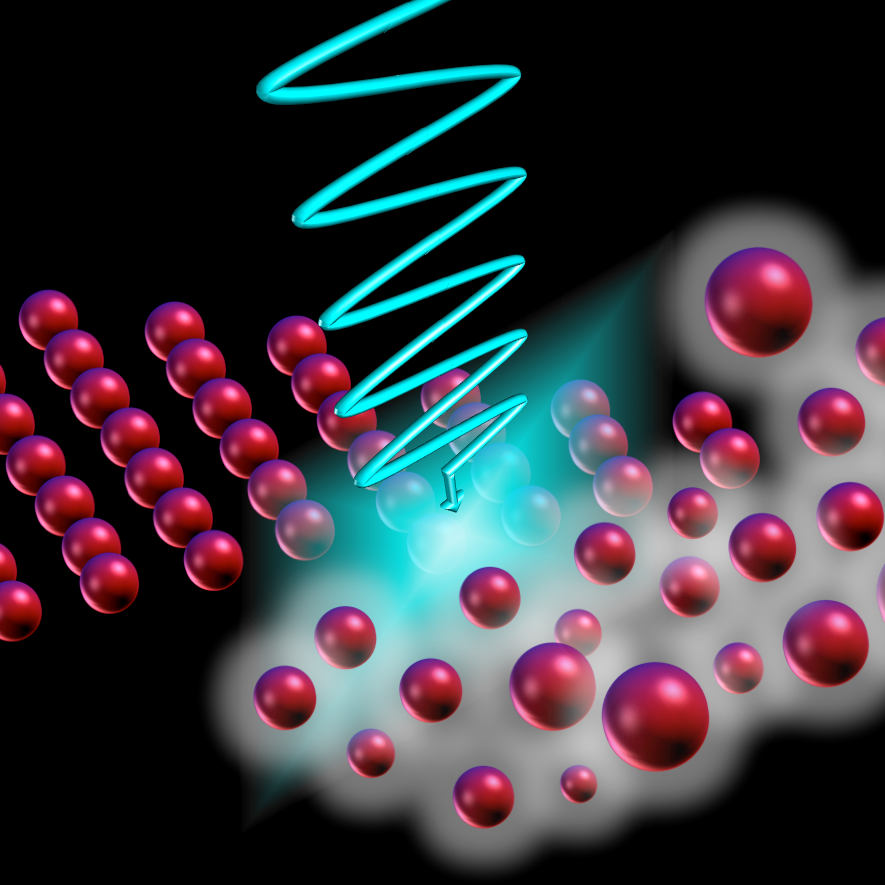
Dynamics of Ultracold Quantum Gases in the Dissipative Fermi-Hubbard Model
Koen Sponselee, Lukas Freystatzky, Benjamin Abeln, Marcel Diem, Bastian Hundt, André Kochanke, Thomas Ponath, Bodhaditya Santra, Ludwig Mathey, Klaus Sengstock, Christoph Becker
We employ metastable ultracold 173Yb atoms to study dynamics in the 1D dissipative Fermi-Hubbard model experimentally and theoretically, and observe a complete inhibition of two-body losses after initial fast transient dynamics. We attribute the suppression of particle loss to the dynamical generation of a highly entangled Dicke state. For several lattice depths and for two- and six-spin component mixtures we find very similar dynamics, showing that the creation of strongly correlated states is a robust and universal phenomenon. This offers interesting opportunities for precision measurements.
Quantum Sci. Technol. 4, 014002 (2018)
Critical behavior of a chiral superfluid in a bipartite square lattice
Junichi Okamoto, Wen-Min Huang, Robert Höppner, Ludwig Mathey
We study the critical behavior of Bose-Einstein condensation in the second band of a bipartite optical square lattice in a renormalization group framework at one-loop order. Within our field theoretical representation of the system, we approximate the system as a two-component Bose gas in three dimensions. We demonstrate that the system is in a different universality class than the previously studied condensation in a frustrated triangular lattice due to an additional Umklapp scattering term, which stabilizes the chiral superfluid order at low temperatures. We derive the renormalization group flow of the system and show that this order persists in the low energy limit. Furthermore, the renormalization flow suggests that the phase transition from the thermal phase to the chiral superfluid state is first order.
Transiently enhanced interlayer tunneling in optically driven high Tc superconductors
Jun-ichi Okamoto, Wanzheng Hu, Andrea Cavalleri, Ludwig Mathey
Recent pump-probe experiments reported an enhancement of superconducting transport along the c-axis of underdoped YBa2Cu3O6+δ (YBCO), induced by a mid-infrared optical pump pulse tuned to a specific lattice vibration. To understand this transient non-equilibrium state, we develop a pump-probe formalism for a stack of Josephson junctions, and we consider the tunneling strengths in presence of modulation with an ultrashort optical pulse. We demonstrate that a transient enhancement of the Josephson coupling can be obtained for pulsed excitation and that this can be even larger than in a continuously driven steady-state. Especially interesting is the conclusion that the effect is largest when the material is parametrically driven at a frequency immediately above the plasma frequency, in agreement with what is found experimentally. For bilayer Josephson junctions, an enhancement similar to that experimentally is predicted below the critical temperature Tc. This model reproduces the essential features of the enhancement measured below Tc. To reproduce the experimental results above Tc, we will explore extensions of this model, such as in-plane and amplitude fluctuations, elsewhere.
Phys. Rev. B 96, 144505 (2017)
Probing optically silent superfluid stripes in cuprates
Srivats Rajasekaran, Jun-ichi Okamoto, Ludwig Mathey, Michael Fechner, Vivek Thampy, Genda D. Gu, Andrea Cavalleri
Unconventional superconductivity in the cuprates emerges from, or coexists with, other types of electronic order. However, these orders are sometimes invisible because of their symmetry. For example, the possible existence of superfluid charge stripes in the normal state of single layer cuprates cannot be validated with infrared optics, because interlayer tunneling fluctuations vanish on average. Similarly, it is not easy to establish if charge orders are responsible for dynamical decoupling of the superconducting layers over broad ranges of doping and temperatures. Here, we show that TeraHertz pulses can excite nonlinear tunneling currents between linearly de-coupled charge-ordered planes. A giant TeraHertz third harmonic signal is observed in La1.885Ba0.115CuO4 far above Tc=13 K and up to the charge ordering temperature TCO = 55 K. We model these results by considering large order-parameter-phase oscillations in a pair density wave condensate, and show how nonlinear mixing of optically silent tunneling modes can drive large dipole-carrying super-current oscillations. Our results provide compelling experimental support for the presence of hidden superfluid order in the normal state of cuprates. These experiments also underscore the power of nonlinear TeraHertz optics as a sensitive probe of frustrated excitations in quantum solids.
Implementing supersymmetric dynamics in ultracold atom systems
M. Lahrz, C. Weitenberg, L. Mathey
Supersymmetric systems derive their properties from conserved supercharges which form a supersymmetric algebra. These systems naturally factorize into two subsystems, which, when considered as individual systems, have essentially the same eigenenergies, and their eigenstates can be mapped onto each other. We first propose a one-dimensional ultracold atom setup to realize such a pair of supersymmetric systems. We propose a Mach-Zehnder interference experiment which we demonstrate for this system, and which can be realized with current technology. In this interferometer, a single atom wave packet that evolves in a superposition of the subsystems, gives an interference contrast that is sharply peaked if the subsystems form a supersymmetric pair. Secondly, we propose a two-dimensional setup that implements supersymmetric dynamics in a synthetic gauge field.
Phys. Rev. A 96, 043624 (2017)
Observation of topological Bloch-state defects and their merging transition
Matthias Tarnowski, Marlon Nuske, Nick Fläschner, Benno Rem, Dominik Vogel, Lukas Freystatzky, Klaus Sengstock, Ludwig Mathey, Christof Weitenberg
Topological defects in Bloch bands, such as Dirac points in graphene, and their resulting Berry phases play an important role for the electronic dynamics in solid state crystals. Such defects can arise in systems with a two-atomic basis due to the momentum-dependent coupling of the two sublattice states, which gives rise to a pseudo-spin texture. The topological defects appear as vortices in the azimuthal phase of this pseudo-spin texture. Here, we demonstrate a complete measurement of the azimuthal phase in a hexagonal optical lattice employing a versatile method based on time-of-flight imaging after off-resonant lattice modulation. Furthermore we map out the merging transition of the two Dirac points induced by beam imbalance. Our work paves the way to accessing geometric properties in optical lattices also with spin-orbit coupling and interactions.
Phys. Rev. Lett. 118, 240403 (2017)
Superfluidity and relaxation dynamics of a laser-stirred 2D Bose gas
Vijay Pal Singh, Christof Weitenberg, Jean Dalibard, Ludwig Mathey
We investigate the superfluid behavior of a two-dimensional (2D) Bose gas of 87Rb atoms using classical field dynamics. In the experiment by R. Desbuquois \textit{et al.}, Nat. Phys. \textbf{8}, 645 (2012), a 2D quasicondensate in a trap is stirred by a blue-detuned laser beam along a circular path around the trap center. Here, we study this experiment from a theoretical perspective. The heating induced by stirring increases rapidly above a velocity vc, which we define as the critical velocity. We identify the superfluid, the crossover, and the thermal regime by a finite, a sharply decreasing, and a vanishing critical velocity, respectively. We demonstrate that the onset of heating occurs due to the creation of vortex-antivortex pairs. A direct comparison of our numerical results to the experimental ones shows good agreement, if a systematic shift of the critical phase-space density is included. We relate this shift to the absence of thermal equilibrium between the condensate and the thermal wings, which were used in the experiment to extract the temperature. We expand on this observation by studying the full relaxation dynamics between the condensate and the thermal cloud.
Phys. Rev. A 95, 043631 (2017)
Fermion pairing in mixed-dimensional atomic mixtures
Junichi Okamoto, Ludwig Mathey, Wen-Min Huang
We investigate the quantum phases of mixed-dimensional cold atom mixtures. In particular, we consider a mixture of a Fermi gas in a two-dimensional lattice, interacting with a bulk Fermi gas or a Bose-Einstein condensate in a three-dimensional lattice. The effective interaction of the two-dimensional system mediated by the bulk system is determined. We perform a functional renormalization group analysis, and demonstrate that by tuning the properties of the bulk system, a subtle competition of several superconducting orders can be controlled among s-wave, p-wave, dx2−y2-wave, and gxy(x2−y2)-wave pairing symmetries. Other instabilities such as a charge-density wave order are also demonstrated to occur. In particular, we find that the critical temperature of the d-wave pairing induced by the next-nearest-neighbor interactions can be an order of magnitude larger than that of the same pairing induced by doping in the simple Hubbard model. We expect that by combining the nearest-neighbor interaction with the next-nearest-neighbor hopping (known to enhance d-wave pairing), an even higher critical temperature may be achieved.
Phys. Rev. A 95, 053633 (2017)
Editorial: Emergence in driven solid-state and cold-atom systems
Ludwig Mathey, Junichi Okamoto
We briefly summarize the current status of driven solid-state and cold-atom systems, and introduce articles compiled in the Focus Section in Zeitschrift für Naturforschung A, Volume 71, Issue 10 (2016)
Observation of a dynamical topological phase transition
Nick Fläschner, Dominik Vogel, Matthias Tarnowski, Benno S. Rem, Dirk-Sören Lühmann, Markus Heyl, Jan Carl Budich, Ludwig Mathey, Klaus Sengstock, Christof Weitenberg
Phase transitions are a fundamental concept in science describing diverse phenomena ranging from, e.g., the freezing of water to Bose-Einstein condensation. While the concept is well-established in equilibrium, similarly fundamental concepts for systems far from equilibrium are just being explored, such as the recently introduced dynamical phase transition (DPT). Here we report on the first observation of a DPT in the dynamics of a fermionic many-body state after a quench between two lattice Hamiltonians. With time-resolved state tomography in a system of ultracold atoms in optical lattices, we obtain full access to the evolution of the wave function. We observe the appearance, movement, and annihilation of vortices in reciprocal space. We identify their number as a dynamical topological order parameter, which suddenly changes its value at the critical times of the DPT. Our observation of a DPT is an important step towards a more comprehensive understanding of non-equilibrium dynamics in general.
Hierarchical equations of motion approach to transport through an Anderson impurity coupled to interacting Luttinger liquid leads
Jun-ichi Okamoto, Ludwig Mathey, Rainer Härtle
We generalize the hierarchical equations of motion method to study electron transport through a quantum dot or molecule coupled to one-dimensional interacting leads that can be described as Luttinger liquids. Such leads can be realized, for example, by quantum wires or fractional quantum Hall edge states. In comparison to noninteracting metallic leads, Luttinger liquid leads involve many-body correlations and the single-particle tunneling density of states shows a power-law singularity at the chemical potential. Using the generalized hierarchical equations of motion method, we assess the importance of the singularity and the next-to-leading order many-body correlations. To this end, we compare numerically converged results with second and first-order results of the hybridization expansion that is inherent to our method. As a test case, we study transport through a single-level quantum dot or molecule that can be described by an Anderson impurity model. Cotunneling effects turn out to be most pronounced for attractive interactions in the leads or repulsive ones if an excitonic coupling between the dot and the leads is realized. We also find that an interaction-induced negative differential conductance near the Coulomb blockade thresholds is slightly suppressed as compared to a first-order and/or rate equation result. Moreover, we find that the two-particle (n-particle) correlations enter as a second-order (n-order) effect and are, thus, not very pronounced at the high temperatures and parameters that we consider.
Phys. Rev. B 94, 235411 (2016)
Theory of enhanced interlayer tunneling in optically driven high Tc superconductors
Jun-ichi Okamoto, Andrea Cavalleri, Ludwig Mathey
Motivated by recent pump-probe experiments indicating enhanced coherent c-axis transport in underdoped YBCO, we study Josephson junctions periodically driven by optical pulses. We propose a mechanism for this observation by demonstrating that a parametrically driven Josephson junction shows an enhanced imaginary part of the low-frequency conductivity when the driving frequency is above the plasma frequency, implying an effectively enhanced Josephson coupling. We generalize this analysis to a bilayer system of Josephson junctions modeling YBCO. Again, the Josephson coupling is enhanced when the pump frequency is blue-detuned to either of the two plasma frequencies of the material. We show that the emergent driven state is a genuine, non-equilibrium superconducting state, in which equilibrium relations between the Josephson coupling, current fluctuations, and the critical current no longer hold.
Phys. Rev. Lett. 117, 227001 (2016)
Designing exotic many-body states of atomic spin and motion in photonic crystals
Marco T. Manzoni, Ludwig Mathey, Darrick E. Chang
Cold atoms coupled to photonic crystals constitute an exciting platform for exploring quantum many-body physics. Here we investigate the strong coupling between atomic internal ("spin") degrees of freedom and motion, which arises from spin-dependent forces associated with the exchange of guided photons. We show that this system can realize a remarkable and extreme limit of quantum spin-orbital systems, where both the direct spin exchange between neighboring sites and the kinetic energy of the orbital motion vanish. We find that this previously unexplored system has a rich phase diagram of emergent orders, including spatially dimerized spin-entangled pairs, a fluid of composite particles comprised of joint spin-phonon excitations, phonon-induced Néel ordering, and a fractional magnetization plateau associated with trimer formation.
Magnus expansion approach to parametric oscillator systems in a thermal bath
B. Zhu, T. Rexin, L. Mathey
We develop a Magnus formalism for periodically driven systems which provides an expansion both in the driving term and the inverse driving frequency, applicable to isolated and dissipative systems. We derive explicit formulas for a driving term with a cosine dependence on time, up to fourth order. We apply these to the steady state of a classical parametric oscillator coupled to a thermal bath, which we solve numerically for comparison. Beyond dynamical stabilization at second order, we find that the higher orders further renormalize the oscillator frequency, and additionally create a weakly renormalized effective temperature. The renormalized oscillator frequency is quantitatively accurate almost up to the parametric instability, as we confirm numerically. Additionally, a cut-off dependent term is generated, which indicates the break-down of the hierarchy of time scales of the system, as a precursor to the instability. Finally, we apply this formalism to a parametrically driven chain, as an example for the control of the dispersion of a many-body system.
Sudden-quench dynamics of Bardeen-Cooper-Schrieffer states in deep optical lattices
Marlon Nuske, L. Mathey, Eite Tiesinga
We determine the exact dynamics of an initial Bardeen-Cooper-Schrieffer (BCS) state of ultra-cold atoms in a deep hexagonal optical lattice. The dynamical evolution is triggered by a quench of the lattice potential, such that the interaction strength Uf is much larger than the hopping amplitude Jf. The quench initiates collective oscillations with frequency |Uf|/(2π) in the momentum occupation numbers and imprints an oscillating phase with the same frequency on the BCS order parameter Δ. The oscillation frequency of Δ is not reproduced by treating the time evolution in mean-field theory. In our theory, the momentum noise (i.e. density-density) correlation functions oscillate at frequency |Uf|/2π as well as at its second harmonic. For a very deep lattice, with zero tunneling energy, the oscillations of momentum occupation numbers are undamped. Non-zero tunneling after the quench leads to dephasing of the different momentum modes and a subsequent damping of the oscillations. The damping occurs even for a finite-temperature initial BCS state, but not for a non-interacting Fermi gas. Furthermore, damping is stronger for larger order parameter and may therefore be used as a signature of the BCS state. Finally, our theory shows that the noise correlation functions in a honeycomb lattice will develop strong anti-correlations near the Dirac point.
Phys. Rev. A 94, 023607 (2016)
Realizing and optimizing an atomtronic SQUID
Amy C. Mathey, L. Mathey
We demonstrate how a toroidal Bose-Einstein condensate with a movable barrier can be used to realize an atomtronic SQUID. The magnitude of the barrier height, which creates the analogue of an SNS junction, is of crucial importance, as well as its ramp-up and -down protocol. For too low of a barrier, the relaxation of the system is dynamically suppressed, due to the small rate of phase slips at the barrier. For a higher barrier, the phase coherence across the barrier is suppressed due to thermal fluctuations, which are included in our Truncated Wigner approach. Furthermore, we show that the ramp-up protocol of the barrier can be improved by ramping up its height first, and its velocity after that. This protocol can be further improved by optimizing the ramp-up and ramp-down time scales, which is of direct practical relevance for on-going experimental realizations.
Bose-Einstein condensation in a frustrated triangular optical lattice
Peter Janzen, Wen-Min Huang, Ludwig Mathey
The recent experimental condensation of ultracold atoms in a triangular optical lattice with negative effective tunneling energies paves the way to study frustrated systems in a controlled environment. Here, we explore the critical behavior of the chiral phase transition in such a frustrated lattice in three dimensions. We represent the low-energy action of the lattice system as a two-component Bose gas corresponding to the two minima of the dispersion. The contact repulsion between the bosons separates into intra- and inter-component interactions, referred to as V0 and V12, respectively. We first employ a Huang-Yang-Luttinger approximation of the free energy. For V12/V0=2, which corresponds to the bare interaction, this approach suggests a first order phase transition, at which both the U(1) symmetry of condensation and the ℤ2 symmetry of the emergent chiral order are broken simultaneously. Furthermore, we perform a renormalization group calculation at one-loop order. We demonstrate that the coupling regime 0<V12/V0≤1 shares the critical behavior of the Heisenberg fixed point at V12/V0=1. For V12/V0>1 we show that V0 flows to a negative value, while V12 increases and remains positive. This results in a breakdown of the effective quartic field theory due to a cubic anisotropy, and again suggests a discontinuous phase transition.
Phys. Rev. A 94, 063614 (2016)
Probing superfluidity of Bose-Einstein condensates via laser stirring
Vijay Pal Singh, Wolf Weimer, Kai Morgener, Jonas Siegl, Klaus Hueck, Niclas Luick, Henning Moritz, Ludwig Mathey
We investigate the superfluid behavior of a Bose-Einstein condensate of 6Li molecules. In the experiment by Weimer et al., Phys. Rev. Lett. 114, 095301 (2015) a condensate is stirred by a weak, red-detuned laser beam along a circular path around the trap center. The rate of induced heating increases steeply above a velocity vc, which we define as the critical velocity. Below this velocity, the moving beam creates almost no heating. In this paper, we demonstrate a quantitative understanding of the critical velocity. Using both numerical and analytical methods, we identify the non-zero temperature, the circular motion of the stirrer, and the density profile of the cloud as key factors influencing the magnitude of vc. A direct comparison to the experimental data shows excellent agreement.
Phys. Rev. A 93, 023634 (2016)
Optimization of collisional Feshbach cooling of an ultracold nondegenerate gas
Marlon Nuske, Eite Tiesinga, L. Mathey
We optimize a collision-induced cooling process for ultracold atoms in the nondegenerate regime. It makes use of a Feshbach resonance, instead of rf radiation in evaporative cooling, to selectively expel hot atoms from a trap. Using functional minimization we analytically show that for the optimal cooling process the resonance energy must be tuned such that it linearly follows the temperature. Here, optimal cooling is defined as maximizing the phase-space density after a fixed cooling duration. The analytical results are confirmed by numerical Monte-Carlo simulations. In order to simulate more realistic experimental conditions, we show that background losses do not change our conclusions, while additional non-resonant two-body losses make a lower initial resonance energy with non-linear dependence on temperature preferable.
Phys. Rev. A 91, 043626 (2015)
Exotic roton excitations in quadrupolar Bose-Einstein condensates
M. Lahrz, Mikhail Lemeshko, L. Mathey
We investigate the occurrence of rotons in a quadrupolar Bose-Einstein condensate confined to two dimensions. Depending on the particle density, the ratio of the contact and quadrupole-quadrupole interactions, and the alignment of the quadrupole moments with respect to the confinement plane, the dispersion relation features two or four point-like roton minima, or one ring-shaped minimum. We map out the entire parameter space of the roton behavior and identify the instability regions. We propose to observe the exotic rotons by monitoring the characteristic density wave dynamics resulting from a short local perturbation, and discuss the possibilities to detect the predicted effects in state-of-the-art experiments with ultracold homonuclear molecules.
Observing Chiral Superfluid Order by Matter-Wave Interference
T. Kock, M. Ölschläger, A. Ewerbeck, W.-M. Huang, L. Mathey, A. Hemmerich
The breaking of time reversal symmetry via the spontaneous formation of chiral order is ubiquitous in nature. Here, we present an unambiguous demonstration of this phenomenon for atoms Bose-Einstein condensed in the second Bloch band of an optical lattice. As a key tool we use a matter wave interference technique, which lets us directly observe the phase properties of the superfluid order parameter and allows us to reconstruct the spatial geometry of certain low energy excitations, associated with the formation of domains of different chirality. Our work marks a new era of optical lattices where orbital degrees of freedom play an essential role for the formation of exotic quantum matter, similarly as in electronic systems.
Phys. Rev. Lett. 114, 115301 (2015)
Dynamical phase transition in the open Dicke model
J. Klinder, H. Keßler, M. Wolke, L. Mathey, A. Hemmerich
The Dicke model with a weak dissipation channel is realized by coupling a Bose-Einstein condensate to an optical cavity with ultra-narrow bandwidth. We explore the dynamical critical properties of the Hepp-Lieb-Dicke phase transition by performing quenches across the phase boundary. We observe hysteresis in the transition between a homogeneous phase and a self-organized collective phase with an enclosed loop area showing power law scaling with respect to the quench time, which suggests an interpretation within a general framework introduced by Kibble and Zurek. The observed hysteretic dynamics is well reproduced by numerically solving the mean field equation derived from a generalized Dicke Hamiltonian. Our work promotes the understanding of nonequilibrium physics in open many-body systems with infinite range interactions.
The critical velocity in the BEC-BCS crossover
Wolf Weimer, Kai Morgener, Vijay Pal Singh, Jonas Siegl, Klaus Hueck, Niclas Luick, Ludwig Mathey, Henning Moritz
We map out the critical velocity in the crossover from Bose-Einstein condensation (BEC) to Bardeen-Cooper-Schrieffer superfluidity with ultracold 6Li gases. A small attractive potential is dragged along lines of constant column density. The rate of the induced heating increases steeply above a critical velocity vc. In the same samples, we measure the speed of sound vs by exciting density waves and compare the results to the measured values of vc. We perform numerical simulations in the BEC regime and find very good agreement, validating the approach. In the strongly correlated regime, where theoretical predictions only exist for the speed of sound, our measurements of vc provide a testing ground for theoretical approaches.
Phys. Rev. Lett. 114, 095301 (2015)
Redistribution of phase fluctuations in a periodically driven cuprate superconductor
R. Höppner, B. Zhu, T. Rexin, A. Cavalleri, L. Mathey
We study the thermally fluctuating state of a bi-layer cuprate superconductor under the periodic action of a staggered field oscillating at optical frequencies. This analysis distills essential elements of the recently discovered phenomenon of light enhanced coherence in YBa2Cu3O6+x, which was achieved by periodically driving infrared active apical oxygen distortions. The effect of a staggered periodic perturbation is studied using a Langevin and Fokker-Planck description of driven, coupled Josephson junctions, which represent two neighboring pairs of layers and their two plasmons. In a toy model including only two junctions, we demonstrate that the external driving leads to a suppression of phase fluctuations of the low-energy plasmon, an effect which is amplified via the resonance of the high energy plasmon. When extending the modeling to the full layers, we find that this reduction becomes far more pronounced, with a striking suppression of the low-energy fluctuations, as visible in the power spectrum. We also find that this effect acts onto the in-plane fluctuations, which are reduced on long length scales. All these findings provide a physical framework to describe light control in cuprates.
Phys. Rev. B 91, 104507 (2015)
Noise correlations of two-dimensional Bose gases
Vijay Pal Singh, Ludwig Mathey
We analyze density-density correlations of expanding clouds of weakly interacting two-dimensional Bose gases below and above the Berezinskii-Kosterlitz-Thouless transition, with particular focus on short-time expansions. During time-of-flight expansion, phase fluctuations of the trapped system translate into density fluctuations, in addition to the density fluctuations that exist in in-situ. We calculate the correlations of these fluctuations both in real space and in momentum space, and derive analytic expressions in momentum space. Below the transition, the correlation functions show an oscillatory behavior, controlled by the scaling exponent of the quasi-condensed phase, due to constructive interference. We argue that this can be used to extract the scaling exponent of the quasi-condensate experimentally. Above the transition, the interference is rapidly suppressed when the atoms travel an average distance beyond the correlation length. This can be used to distinguish the two phases qualitatively.
Phys. Rev. A 89, 053612 (2014)
Detecting quadrupole interactions in ultracold Fermi gases
M. Lahrz, Mikhail Lemeshko, Klaus Sengstock, Christoph Becker, L. Mathey
We propose to detect quadrupole interactions of neutral ultra-cold atoms via their induced mean-field shift. We consider a Mott insulator state of spin-polarized atoms in a two-dimensional optical square lattice. The quadrupole moments of the atoms are aligned by an external magnetic field. As the alignment angle is varied, the mean-field shift shows a characteristic angular dependence, which constitutes the defining signature of the quadrupole interaction. For the 3P2 states of Yb and Sr atoms, we find a frequency shift of the order of tens of Hertz, which can be realistically detected in experiment with current technology. We compare our results to the mean-field shift of a spin-polarized quasi-2D Fermi gas in continuum.
Phys. Rev. A 89, 043616 (2014)
Quantum phases of quadrupolar Fermi gases in coupled one-dimensional systems
Wen-Min Huang, M. Lahrz, L. Mathey
Following the recent proposal to create quadrupolar gases [S.G. Bhongale et al., Phys. Rev. Lett. 110, 155301 (2013)], we investigate what quantum phases can be created in these systems in one dimension. We consider a geometry of two coupled one-dimensional systems, and derive the quantum phase diagram of ultra-cold fermionic atoms interacting via quadrupole-quadrupole interaction within a Tomonaga-Luttinger-liquid framework. We map out the phase diagram as a function of the distance between the two tubes and the angle between the direction of the tubes and the quadrupolar moments. The latter can be controlled by an external field. We show that there are two magic angles θcB,1 and θcB,2 between 0 to π/2, where the intratube quadrupolar interactions vanish and change signs. Adopting a pseudo-spin language with regards to the two 1D systems, the system undergoes a spin-gap transition and displays a zig-zag density pattern, above θcB,2 and below θcB,1. Between the two magic angles, we show that polarized triplet superfluidity and a planar spin-density wave order compete with each other. The latter corresponds to a bond order solid in higher dimensions. We demonstrate that this order can be further stabilized by applying a commensurate periodic potential along the tubes.
Phys. Rev. A 89, 013604 (2014)
Sudden and slow quenches into the antiferromagnetic phase of ultracold fermions
M. Ojekhile, R. Höppner, H. Moritz, L. Mathey
We propose a method to reach the antiferromagnetic state of two-dimensional Fermi gases trapped in optical lattices: Independent subsystems are prepared in suitable initial states and then connected by a sudden or slow quench of the tunneling between the subsystems. Examples of suitable low-entropy subsystems are double wells or plaquettes, which can be experimentally realised in Mott insulating shells using optical super-lattices. We estimate the effective temperature T* of the system after the quench by calculating the distribution of excitations created using the spin wave approximation in a Heisenberg model. We investigate the effect of an initial staggered magnetic field and find that for an optimal polarisation of the initial state the effective temperature can be significantly reduced from T*≈1.7 Tc at zero polarisation to T*<0.65Tc, where Tc is the crossover temperature to the antiferromagnetic state. The temperature can be further reduced using a finite quench time. We also show that T* decreases logarithmically with the linear size of the subsystem.
Engineering Ising-XY spin models in a triangular lattice via tunable artificial gauge fields
Julian Struck, Malte Weinberg, Christoph Ölschläger, Patrick Windpassinger, Juliette Simonet, Klaus Sengstock, Robert Höppner, Philipp Hauke, André Eckardt, Maciej Lewenstein, Ludwig Mathey
Emulation of gauge fields for ultracold atoms provides access to a class of exotic states arising in strong magnetic fields. Here we report on the experimental realisation of tunable staggered gauge fields in a periodically driven triangular lattice. For maximal staggered magnetic fluxes, the doubly degenerate superfluid ground state breaks both a discrete Z2 (Ising) symmetry and a continuous U(1) symmetry. By measuring an Ising order parameter, we observe a thermally driven phase transition from an ordered antiferromagnetic to an unordered paramagnetic state and textbook-like magnetisation curves. Both the experimental and theoretical analysis of the coherence properties of the ultracold gas demonstrate the strong influence of the Z2 symmetry onto the condensed phase.
Quantum phases of quadrupolar Fermi gases in optical lattices
Satyan G. Bhongale, Ludwig Mathey, Erhai Zhao, Susanne F. Yelin, Mikhail Lemeshko
We introduce a new platform for quantum simulation of many-body systems based on nonspherical atoms or molecules with zero dipole moment but possessing a significant value of electric quadrupole moment. We consider a quadrupolar Fermi gas trapped in a 2D square optical lattice, and show that the peculiar symmetry and broad tunability of the quadrupole-quadrupole interaction results in a rich phase diagram encompassing unconventional BCS and charge density wave phases, and opens up a perspective to create topological superfluid. Quadrupolar species, such as metastable alkaline-earth atoms and homonuclear molecules, are stable against chemical reactions and collapse and are readily available in experiment at high densities.
Phys. Rev. Lett. 110, 155301 (2013)
Unconventional Spin Density Waves in Dipolar Fermi Gases
S. G. Bhongale, L. Mathey, Shan-Wen Tsai, Charles W. Clark, Erhai Zhao
The conventional spin density wave (SDW) phase (Overhauser, 1962), as found in antiferromagnetic metal for example (Fawcett 1988), can be described as a condensate of particle-hole pairs with zero angular momentum, ℓ=0, analogous to a condensate of particle-particle pairs in conventional superconductors. While many unconventional superconductors with Cooper pairs of finite ℓ have been discovered, their counterparts, density waves with non-zero angular momenta, have only been hypothesized in two-dimensional electron systems (Nayak, 2000). Using an unbiased functional renormalization group analysis, we here show that spin-triplet particle-hole condensates with ℓ=1 emerge generically in dipolar Fermi gases of atoms (Lu, Burdick, and Lev, 2012) or molecules (Ospelkaus et al., 2008; Wu et al.) on optical lattice. The order parameter of these exotic SDWs is a vector quantity in spin space, and, moreover, is defined on lattice bonds rather than on lattice sites. We determine the rich quantum phase diagram of dipolar fermions at half-filling as a function of the dipolar orientation, and discuss how these SDWs arise amidst competition with superfluid and charge density wave phases.
Phys. Rev. A 87, 043604 (2013)
Intrinsic Photoconductivity of Ultracold Fermions in Optical Lattices
J. Heinze, J. S. Krauser, N. Fläschner, B. Hundt, S. Götze, A. P. Itin, L. Mathey, K. Sengstock, C. Becker
We report on the experimental observation of an analog to a persistent alternating photocurrent in an ultracold gas of fermionic atoms in an optical lattice. The dynamics is induced and sustained by an external harmonic confinement. While particles in the excited band exhibit long-lived oscillations with a momentum dependent frequency a strikingly different behavior is observed for holes in the lowest band. An initial fast collapse is followed by subsequent periodic revivals. Both observations are fully explained by mapping the system onto a nonlinear pendulum.
Phys. Rev. Lett. 110, 085302 (2013)
Decay of a superfluid current of ultra-cold atoms in a toroidal trap
Amy C. Mathey, Charles W. Clark, L. Mathey
Using a numerical implementation of the truncated Wigner approximation, we simulate the experiment reported by Ramanathan et al. in Phys. Rev. Lett. 106, 130401 (2011), in which a Bose-Einstein condensate is created in a toroidal trap and set into rotation via a phase imprinting technique. A potential barrier is then placed in the trap to study the decay of the superflow. We find that the current decays via thermally activated phase slips, which can also be visualized as vortices crossing the barrier region in the radial direction. Adopting the notion of critical velocity used in the experiment, we determine it to be lower than the local speed of sound at the barrier, in contradiction to the predictions of the zero-temperature Gross-Pitaevskii equation. We map out the superfluid decay rate and critical velocity as a function of temperature and observe a strong dependence. Thermal fluctuations offer a partial explanation of the experimentally observed reduction of the critical velocity from the phonon velocity.
Phys. Rev. A 90, 023604 (2014)
Counterflow superfluid of polaron pairs in Bose-Fermi mixtures in optical lattices
Ippei Danshita, L. Mathey
We study the quantum phases of one-dimensional Bose-Fermi mixtures in optical lattices. Assuming repulsive interparticle interactions, equal mass, and unit total filling, we calculate the ground-state phase diagram by means of both Tomonaga-Luttinger liquid theory and time-evolving block decimation method. We demonstrate the existence of a counterflow superfluid (CFSF) phase of polaron pairs, which are composite particles consisting of two fermions and two bosonic holes, in a broad range of the parameter space. We find that this phase naturally emerges in 174Yb-173Yb mixtures, realized in recent experiments, at low temperatures.
Phys. Rev. A 87, 021603(R), (2013)
Dynamic Kosterlitz-Thouless transition in 2D Bose mixtures of ultra-cold atoms
L. Mathey, Kenneth J. Günter, Jean Dalibard, A. Polkovnikov
We propose a realistic experiment to demonstrate a dynamic Kosterlitz-Thouless transition in ultra-cold atomic gases in two dimensions. With a numerical implementation of the Truncated Wigner Approximation we simulate the time evolution of several correlation functions, which can be measured via matter wave interference. We demonstrate that the relaxational dynamics is well-described by a real-time renormalization group approach, and argue that these experiments can guide the development of a theoretical framework for the understanding of critical dynamics.
Phys. Rev. A 95, 053630 (2017)
Bond order solid of two-dimensional dipolar fermions
S. G. Bhongale, L. Mathey, Shan-Wen Tsai, Charles W. Clark, Erhai Zhao
Recent experimental realization of dipolar Fermi gases near or below quantum degeneracy provides opportunity to engineer Hubbard-like models with long range interactions. Motivated by these experiments, we chart out the theoretical phase diagram of interacting dipolar fermions on the square lattice at zero temperature and half filling. We show that in addition to p-wave superfluid and charge density wave order, two new and exotic types of bond order emerge generically in dipolar fermion systems. These phases feature homogeneous density but periodic modulations of the kinetic hopping energy between nearest or next-nearest neighbors. Similar, but manifestly different, phases of two-dimensional correlated electrons have previously only been hypothesized and termed "density waves of nonzero angular momentum". Our results suggest that these phases can be constructed flexibly with dipolar fermions, using currently available experimental techniques.
Phys. Rev. Lett. 108, 145301 (2012)
Detecting paired and counterflow superfluidity via dipole oscillations
Anzi Hu, L. Mathey, Eite Tiesinga, Ippei Danshita, Carl J. Williams, Charles W. Clark
We suggest an experimentally feasible procedure to observe paired and counterflow superfluidity in ultra-cold atom systems. We study the time evolution of one-dimensional mixtures of bosonic atoms in an optical lattice following an abrupt displacement of an additional weak confining potential. We find that the dynamic responses of the paired superfluid phase for attractive inter-species interactions and the counterflow superfluid phase for repulsive interactions are qualitatively distinct and reflect the quasi long-range order that characterizes these states. These findings suggest a clear experimental procedure to detect these phases, and give an intuitive insight into their dynamics.
Phys. Rev. A 84, 041609(R), (2011)
Phase fluctuations in anisotropic Bose condensates: from cigars to rings
L. Mathey, A. Ramanathan, K. C. Wright, S. R. Muniz, W. D. Phillips, Charles W. Clark
We study the phase-fluctuating condensate regime of ultra-cold atoms trapped in a ring-shaped trap geometry, which has been realized in recent experiments. We first consider a simplified box geometry, in which we identify the conditions to create a state that is dominated by thermal phase-fluctuations, and then explore the experimental ring geometry. In both cases we demonstrate that the requirement for strong phase fluctuations can be expressed in terms of the total number of atoms and the geometric length scales of the trap only. For the ring-shaped trap we discuss the zero temperature limit in which a condensate is realized where the phase is fluctuating due to interactions and quantum fluctuations. We also address possible ways of detecting the phase fluctuating regime in ring condensates.
Phys. Rev. A 82, 033607 (2010)
Noise correlations of one-dimensional Bose mixtures in optical lattices
Anzi Hu, L. Mathey, Carl J. Williams, Charles W. Clark
We study the noise correlations of one-dimensional binary Bose mixtures, as a probe of their quantum phases. In previous work, we found a rich structure of many-body phases in such mixtures, such as paired and counterflow superfluidity. Here we investigate the signature of these phases in the noise correlations of the atomic cloud after time-of-flight expansion, using both Luttinger liquid theory and the time-evolving block decimation (TEBD) method. We find that paired and counterflow superfluidity exhibit distinctive features in the noise spectra. We treat both extended and inhomogeneous systems, and our numerical work shows that the essential physics of the extended systems is present in the trapped-atom systems of current experimental interest. For paired and counterflow superfluid phases, we suggest methods for extracting Luttinger parameters from noise correlation spectroscopy.
Phys. Rev. A 81, 063602 (2010)
Light cone dynamics and reverse Kibble-Zurek mechanism in two-dimensional superfluids following a quantum quench
L. Mathey, A. Polkovnikov
We study the dynamics of the relative phase of a bilayer of two-dimensional superfluids after the two superfluids have been decoupled. We find that on short time scales the relative phase shows "light cone" like dynamics and creates a metastable superfluid state, which can be supercritical. We also demonstrate similar light cone dynamics for the transverse field Ising model. On longer time scales the supercritical state relaxes to a disordered state due to dynamical vortex unbinding. This scenario of dynamically suppressed vortex proliferation constitutes a reverse-Kibble-Zurek effect. We study this effect both numerically using truncated Wigner approximation and analytically within a newly suggested time dependent renormalization group approach (RG). In particular, within RG we show that there are two possible fixed points for the real time evolution corresponding to the superfluid and normal steady states. So depending on the initial conditions and the microscopic parameters of the Hamiltonian the system undergoes a non-equilibrium phase transition of the Kosterlitz-Thouless type. The time scales for the vortex unbinding near the critical point are exponentially divergent, similar to the equilibrium case.
Phys. Rev. A 81, 033605 (2010)
Counterflow and paired superfluidity in one-dimensional Bose mixtures in optical lattices
Anzi Hu, L. Mathey, Ippei Danshita, Eite Tiesinga, Carl J. Williams, Charles W. Clark
We study the quantum phases of mixtures of ultra-cold bosonic atoms held in an optical lattice that confines motion or hopping to one spatial dimension. The phases are found by using Tomonaga-Luttinger liquid theory as well as the numerical method of time evolving block decimation (TEBD). We consider a binary mixture with repulsive intra-species interactions, and either repulsive or attractive inter-species interaction. For a homogeneous system, we find paired- and counterflow-superfluid phases at different filling and hopping energies. We also predict parameter regions in which these types of superfluid order coexist with charge density wave order. We show that the Tomonaga-Luttinger liquid theory and TEBD qualitatively agree on the location of the phase boundary to superfluidity. We then describe how these phases are modified and can be detected when an additional harmonic trap is present. In particular, we show how experimentally measurable quantities, such as time-of-flight images and the structure factor, can be used to distinguish the quantum phases. Finally, we suggest applying a Feshbach ramp to detect the paired superfluid state, and a π/2 pulse followed by Bragg spectroscopy to detect the counterflow superfluid phase.
Phys. Rev. A 80, 023619 (2009)
A supercritical superfluid and vortex unbinding following a quantum quench
L. Mathey, A. Polkovnikov
We study the dynamics of the relative phase of a bilayer of two-dimensional superfluids after the two superfluids have been decoupled, using truncated Wigner approximation. On short time scales the relative phase shows "light cone" like thermalization and creates a metastable superfluid state, which can be supercritical. On longer time scales this state relaxes to a disordered state due to dynamical vortex unbinding. This scenario of dynamically suppressed vortex proliferation constitutes a {\it reverse-Kibble-Zurek effect}. We observe dynamics of creation of vortex anti-vortex pairs and their consequent motion. Our predictions can be directly measured in interference experiments, see Ref 1.
Phys. Rev. A 80, 041601(R), (2009)
Ultracold Atomic Gases: Novel States of Matter
L. Mathey, S.-W. Tsai, A. H. Castro Neto
Article to appear in the Encyclopedia of Complexity and Systems Science, Dr. R. A. Meyers (Ed.) (Springer Heidelberg, 2009).
Collisional cooling of ultra-cold atom ensembles using Feshbach resonances
L. Mathey, Eite Tiesinga, Paul S. Julienne, Charles W. Clark
We propose a new type of cooling mechanism for ultra-cold fermionic atom ensembles, which capitalizes on the energy dependence of inelastic collisions in the presence of a Feshbach resonance. We first discuss the case of a single magnetic resonance, and find that the final temperature and the cooling rate is limited by the width of the resonance. A concrete example, based on a p-wave resonance of 40K, is given. We then improve upon this setup by using both a very sharp optical or radio-frequency induced resonance and a very broad magnetic resonance and show that one can improve upon temperatures reached with current technologies.
Phys. Rev. A 80, 030702(R), (2009)
Noise Correlations in low-dimensional systems of ultracold atoms
L. Mathey, A. Vishwanath, E. Altman
We derive relations between standard order parameter correlations and the noise correlations in time of flight images, which are valid for systems with long range order as well as low dimensional systems with algebraic decay of correlations. Both Bosonic and Fermionic systems are considered. For one dimensional Fermi systems we show that the noise correlations are equally sensitive to spin, charge and pairing correlations and may be used to distinguish between fluctuations in the different channels. This is in contrast to linear response experiments, such as Bragg spectroscopy, which are only sensitive to fluctuations in the particle-hole channel (spin or charge). For Bosonic systems we find a sharp peak in the noise correlation at opposite momenta that signals pairing correlations in the depletion cloud. In a condensate with true long range order, this peak is a delta function and we can use Bogoliubov theory to study its temperature dependence. Interestingly we find that it is enhanced with temperature in the low temperature limit. In one dimensional condensates with only quasi-long range (i.e. power-law) order the peak in the noise correlations also broadens to a power-law singularity.
Phys. Rev. A 79, 013609 (2009)
Creating a supersolid in one-dimensional Bose mixtures
L. Mathey, Ippei Danshita, Charles W. Clark
We identify a one-dimensional supersolid phase in a binary mixture of near-hardcore bosons with weak, local inter-species repulsion. We find realistic conditions under which such a phase, defined here as the coexistence of quasi-superfluidity and quasi-charge density wave order, can be produced and observed in finite ultra-cold atom systems in a harmonic trap. Our analysis is based on Luttinger liquid theory supported with numerical calculations using the time-evolving block decimation method. Clear experimental signatures of these two orders can be found, respectively, in time-of-flight interference patterns, and the structure factor S(k) derived from density correlations.
Phys. Rev. A 79, 011602(R), (2009)
Phase-locking transition of coupled low-dimensional superfluids
L. Mathey, A. Polkovnikov, A.H. Castro Neto
We study the phase-locking transition of two coupled low-dimensional superfluids, either two-dimensional superfluids at finite temperature, or one-dimensional superfluids at zero temperature. We find that the superfluids have a strong tendency to phase-lock. The phase-locking is accompanied by a sizeable increase of the transition temperature Tc (in 2D systems) of the resulting double-layer superfluid to thermal Bose gas transition, compared to the Kosterlitz-Thouless temperature TKT of the uncoupled 2D systems, which suggests a plausible way of observing the Kibble-Zurek mechanism in two-dimensional cold atom systems by rapidly varying the tunneling rate between the superfluids. If there is also interaction between atoms in different layers present we find additional phases, while no sliding phase, characterized by order or quasi long range order (QLRO) either in the symmetric or the antisymmetric sector of the system.
Exotic Superconducting Phases of Ultracold Atom Mixtures on Triangular Lattices
L. Mathey, S.-W. Tsai, A.H. Castro Neto
We study the phase diagram of two-dimensional Bose-Fermi mixtures of ultracold atoms on a triangular optical lattice, in the limit when the velocity of bosonic condensate fluctuations is much larger than the Fermi velocity.
We contrast this work with our previous results for a square lattice system in Phys. Rev. Lett. {\bf 97}, 030601 (2006).
Using functional renormalization group techniques we show that the phase diagrams for a triangular lattice contain exotic superconducting phases. For spin-1/2 fermions on an isotropic lattice we find a competition of s-, p-, extended d-, and f-wave symmetry, as well as antiferromagnetic order. For an anisotropic lattice, we further find an extended p-wave phase. A Bose-Fermi mixture with spinless fermions on an isotropic lattice shows a competition between p- and f-wave symmetry.
These phases can be traced back to the geometric shapes of the Fermi surfaces in various regimes, as well as the intrinsic frustration of a triangular lattice.
Phys. Rev. B 75, 174516 (2007)
Commensurate mixtures of ultra-cold atoms in one dimension
L. Mathey
We study binary mixtures of ultra-cold atoms, confined to one dimension in an optical lattice, with commensurate densities. Within a Luttinger liquid description, which treats various mixtures on equal footing, we derive a system of renormalization group equations at second order, from which we determine the rich phase diagrams of these mixtures. These phases include charge/spin density wave order, singlet and triplet pairing, polaron pairing, and a supersolid phase. Various methods to detect our results experimentally are discussed.
Phys. Rev. B 75, 144510 (2007)
Phase diagrams of one-dimensional Bose-Fermi mixtures of ultra-cold atoms
L. Mathey, D.-W. Wang
We study the quantum phase diagrams of Bose-Fermi mixtures of ultracold atoms confined to one dimension in an optical lattice. For systems with incommensurate densities, various quantum phases, e.g. charge/spin density waves, pairing, phase separation, and the Wigner crystal, are found to be dominant in different parameter regimes within a bosonization approach. The structure of the phase diagram leads us to propose that the system is best understood as a Luttinger liquid of polarons (i.e. atoms of one species surrounded by screening clouds of the other species). Special fillings, half-filling for fermions and unit filling for bosons, and the resulting gapped phases are also discussed, as well as the properties of the polarons and the experimental realization of these phases.
Phys. Rev. A 75, 013612 (2007)
Competing Orders in two-dimensional Bose-Fermi mixtures
L. Mathey, S-W. Tsai, A.H. Castro Neto
Using a functional renormalization group approach we study the zero temperature phase diagram of two-dimensional Bose-Fermi mixtures of ultra-cold atoms in optical lattices, in the limit when the velocity of bosonic condensate fluctuations are much larger than the Fermi velocity.
For spin-1/2 fermions we obtain a phase diagram, which shows a competition of pairing phases of various orbital symmetry (s, p, and d) and antiferromagnetic order. We determine the value of the gaps of various phases close to half-filling, and identify subdominant orders as well as short-range fluctuations from the RG flow. For spinless fermions we find that p-wave pairing dominates the phase diagram.
Phys. Rev. Lett 97, 030601 (2006)
Noise Correlations in one-dimensional systems of ultra-cold fermions
L.Mathey, E.Altman, A.Vishwanath
Time of flight images reflect the momentum distribution of the atoms in the trap, but the spatial noise in the image holds information on more subtle correlations. Using Bosonization, we study such noise correlations in generic one dimensional systems of ultra cold fermions. Specifically, we show how pairing as well as spin and charge density wave correlations may be identified and extracted from the time of flight images. These incipient orders manifest themselves as power law singularities in the noise correlations, that depend on the Luttinger parameters, which suggests a general experimental technique to obtain them.
Phys. Rev. Lett 100, 240401 (2008)
Luttinger liquid of polarons in one-dimensional boson-fermion mixtures
L. Mathey, D.-W. Wang, W. Hofstetter, M. D. Lukin, Eugene Demler
We use bosonization approach to investigate quantum phases in mixtures of bosonic and fermionic atoms confined in one dimensional optical lattices. The phase diagrams can be well understood in terms of polarons, which correspond to atoms that are "dressed" by screening clouds of the other atom species. For a mixture of single species of fermionic and bosonic atoms we find a charge density wave phase, a phase with fermion pairing, and a regime of phase separation. For a mixture of two species of fermionic atoms and one species of bosonic atoms we obtain spin and charge density wave phases, a Wigner crystal phase, singlet and triplet paired states of fermions, and a phase separation regime. Equivalence between the Luttinger liquid description of polarons and the canonical polaron transformation is established and the techniques to detect the resulting quantum phases are discussed.


